English Renaissance theatre
| Reformation era literature |
|---|
|
|
|
|
|
|
|
|
English Renaissance theatre, also known as Renaissance English theatre and Elizabethan theatre, refers to the theatre of England between 1558 and 1642.
This is the style of the plays of William Shakespeare, Christopher Marlowe and Ben Jonson.
Background
The term English Renaissance theatre encompasses the period between 1562—following a performance of Gorboduc, the first English play using blank verse, at the Inner Temple during the Christmas season of 1561—and the ban on theatrical plays enacted by the English Parliament in 1642. In a strict sense "Elizabethan" only refers to the period of Queen Elizabeth's reign (1558–1603). English Renaissance theatre may be said to encompass Elizabethan theatre from 1562 to 1603, Jacobean theatre from 1603 to 1625, and Caroline theatre from 1625 to 1642.
Along with the economics of the profession, the character of the drama changed towards the end of the period. Under Elizabeth, the drama was a unified expression as far as social class was concerned: the Court watched the same plays the commoners saw in the public playhouses. With the development of the private theatres, drama became more oriented towards the tastes and values of an upper-class audience. By the later part of the reign of Charles I, few new plays were being written for the public theatres, which sustained themselves on the accumulated works of the previous decades.[1]
Sites of dramatic performance
Grammar schools
The English grammar schools, like those on the continent, placed special emphasis on the trivium: grammar, logic, and rhetoric. Though rhetorical instruction was intended as preparation for careers in civil service such as law, the rhetorical canons of memory (memoria) and delivery (pronuntiatio), gesture and voice, as well as exercises from the progymnasmata, such as the prosopopoeia, taught theatrical skills.[2][3] Students would typically analyse Latin and Greek texts, write their own compositions, memorise them, and then perform them in front of their instructor and their peers.[4] Records show that in addition to this weekly performance, students would perform plays on holidays,[5] and in both Latin and English.[6]
Choir schools
Choir schools connected with the Elizabethan court included St. George’s Chapel, the Chapel Royal, and St. Paul’s.[7] These schools performed plays and other court entertainments for the Queen.[8] Between the 1560s and 1570s these schools had begun to perform for general audiences as well.[9] Playing companies of boy actors were derived from choir schools.[10] John Lyly is an earlier example of a playwright contracted to write for the children's companies; Lyly wrote Gallathea, Endymion, and Midas for Paul’s Boys.[11] Another example is Ben Jonson, who wrote Cynthia’s Revels.[12]
Universities
Academic drama stems from late medieval and early modern practices of miracles and morality plays as well as the Feast of Fools and the election of a Lord of Misrule.[13] The Feast of Fools includes mummer plays.[14] The universities, particularly Oxford and Cambridge, were attended by students studying for bachelor's degrees and master's degrees, followed by doctorates in Law, Medicine, and Theology.[15] In the 1400s, dramas were often restricted to mummer plays with someone who read out all the parts in Latin.[16] With the rediscovery and redistribution of classical materials during the English Renaissance, Latin and Greek plays began to be restaged.[17] These plays were often accompanied by feasts.[18] Queen Elizabeth I viewed dramas during her visits to Oxford and Cambridge.[19] A well-known play cycle which was written and performed in the universities was the Parnassus Plays.[13]
Inns of Court
Upon graduation, many university students, especially those going into law, would reside and participate in the Inns of Court. The Inns of Court were communities of working lawyers and university alumni.[20] Notable literary figures and playwrights who resided in the Inns of Court include John Donne, Francis Beaumont, John Marston, Thomas Lodge, Thomas Campion, Abraham Fraunce, Sir Philip Sidney, Sir Thomas More, Sir Francis Bacon, and George Gascoigne.[21][22] Like the university, the Inns of Court elected their own Lord of Misrule.[23] Other activities included participation in moot court, disputation, and masques.[23][22] Plays written and performed in the Inns of Court include Gorboduc, Gismund of Salerne, and The Misfortunes of Arthur.[22] An example of a famous masque put on by the Inns was James Shirley's The Triumph of Peace. Shakespeare's The Comedy of Errors and Twelfth Night were also performed here, although written for commercial theater.[24]
Masque
Establishment of playhouses
The first permanent English theatre, the Red Lion, opened in 1567[25] but it was a short-lived failure. The first successful theatres, such as The Theatre, opened in 1576.
The establishment of large and profitable public theatres was an essential enabling factor in the success of English Renaissance drama. Once they were in operation, drama could become a fixed and permanent, rather than transitory, phenomenon. Their construction was prompted when the Mayor and Corporation of London first banned plays in 1572 as a measure against the plague, and then formally expelled all players from the city in 1575.[26] This prompted the construction of permanent playhouses outside the jurisdiction of London, in the liberties of Halliwell/Holywell in Shoreditch and later the Clink, and at Newington Butts near the established entertainment district of St. George's Fields in rural Surrey.[26] The Theatre was constructed in Shoreditch in 1576 by James Burbage with his brother-in-law John Brayne (the owner of the unsuccessful Red Lion playhouse of 1567)[27] and the Newington Butts playhouse was set up, probably by Jerome Savage, some time between 1575[28] and 1577.[29] The Theatre was rapidly followed by the nearby Curtain Theatre (1577), the Rose (1587), the Swan (1595), the Globe (1599), the Fortune (1600), and the Red Bull (1604).[a]
Playhouse architecture
Archaeological excavations on the foundations of the Rose and the Globe in the late 20th century showed that all the London theatres had individual differences, but their common function necessitated a similar general plan.[30] The public theatres were three stories high and built around an open space at the centre. Usually polygonal in plan to give an overall rounded effect, although the Red Bull and the first Fortune were square. The three levels of inward-facing galleries overlooked the open centre, into which jutted the stage: essentially a platform surrounded on three sides by the audience. The rear side was restricted for the entrances and exits of the actors and seating for the musicians. The upper level behind the stage could be used as a balcony, as in Romeo and Juliet and Antony and Cleopatra, or as a position from which an actor could harangue a crowd, as in Julius Caesar.[31] The pit was the place where the poorest audience members could view the show. Around the 1600s a new area was introduced into the theaters, a 'gullet'. A gullet was an invisible corridor that the actors used to go to the wings of the stage where people usually changed clothes quickly[citation needed].
The playhouses were generally built with timber and plaster. Individual theatre descriptions give additional information about their construction, such as flint stones being used to build the Swan. Theatres were also constructed to be able to hold a large number of people.[32]
A different model was developed with the Blackfriars Theatre, which came into regular use on a long-term basis in 1599.[b] The Blackfriars was small in comparison to the earlier theatres and roofed rather than open to the sky. It resembled a modern theatre in ways that its predecessors did not. Other small enclosed theatres followed, notably the Whitefriars (1608) and the Cockpit (1617). With the building of the Salisbury Court Theatre in 1629 near the site of the defunct Whitefriars, the London audience had six theatres to choose from: three surviving large open-air public theatres—the Globe, the Fortune, and the Red Bull—and three smaller enclosed private theatres: the Blackfriars, the Cockpit, and the Salisbury Court.[c] Audiences of the 1630s benefited from a half-century of vigorous dramaturgical development; the plays of Marlowe and Shakespeare and their contemporaries were still being performed on a regular basis, mostly at the public theatres, while the newest works of the newest playwrights were abundant as well, mainly at the private theatres.[citation needed]
Audiences
Around 1580, when both the Theater and the Curtain were full on summer days, the total theater capacity of London was about 5000 spectators. With the building of new theater facilities and the formation of new companies, London's total theater capacity exceeded 10,000 after 1610.[33]
Ticket prices in general varied during this time period. The cost of admission was based on where in the theatre a person wished to be situated, or based on what a person could afford. If people wanted a better view of the stage or to be more separate from the crowd, they would pay more for their entrance. Due to inflation that occurred during this time period, admission increased in some theaters from a penny to a sixpence or even higher.[34]
Commercial theaters were largely located just outside the boundaries of the City of London, since City authorities tended to be wary of the adult playing companies, but plays were performed by touring companies all over England.[35] English companies even toured and performed English plays abroad, especially in Germany and in Denmark.[36][d]
Upper class spectators would pay for seats in the galleries, using cushions for comfort. In the Globe Theatre, nobles could sit directly by the side on the stage.[38]
Performances
The acting companies functioned on a repertory system: unlike modern productions that can run for months or years on end, the troupes of this era rarely acted the same play two days in a row.[39] Thomas Middleton's A Game at Chess ran for nine straight performances in August 1624 before it was closed by the authorities; but this was due to the political content of the play and was a unique, unprecedented and unrepeatable phenomenon. The 1592 season of Lord Strange's Men at the Rose Theatre was far more representative: between 19 February and 23 June the company played six days a week, minus Good Friday and two other days. They performed 23 different plays, some only once, and their most popular play of the season, The First Part of Hieronimo, based on Kyd's The Spanish Tragedy, 15 times. They never played the same play two days in a row, and rarely the same play twice in a week.[40][e] The workload on the actors, especially the leading performers like Richard Burbage or Edward Alleyn, must have been tremendous.
One distinctive feature of the companies was that they included only males. Female parts were played by adolescent boy players in women's costume. Some companies were composed entirely of boy players.[f] Performances in the public theatres (like the Globe) took place in the afternoon with no artificial lighting, but when, in the course of a play, the light began to fade, candles were lit.[43] In the enclosed private theatres (like the Blackfriars) artificial lighting was used throughout. Plays contained little to no scenery as the scenery was described by the actors or indicated by costume through the course of the play.[44]
In the Elizabethan era, research has been conclusive about how many actors and troupes there were in the 16th century, but little research delves into the roles of the actors on the English renaissance stage. The first point is that during the Elizabethan era, women were not allowed to act on stage. The actors were all male; in fact, most were boys. For plays written that had male and female parts, the female parts were played by the youngest boy players.[45] Stronger female roles in tragedies were acted by older boy players because they had more experience. [45] As a boy player, many skills had to be implemented such as voice and athleticism (fencing was one).[45]
In Elizabethan entertainment, troupes were created and they were considered the actor companies. They travelled around England as drama was the most entertaining art at the time.
Elizabethan actors never played the same show on successive days and added a new play to their repertoire every other week. These actors were getting paid within these troupes so for their job, they would constantly learn new plays as they toured different cities in England. In these plays, there were bookkeepers that acted as the narrators of these plays and they would introduce the actors and the different roles they played. At some points, the bookkeeper would not state the narrative of the scene, so the audience could find out for themselves. In Elizabethan and Jacobean plays, the plays often exceeded the number of characters/roles and did not have enough actors to fulfil them, thus the idea of doubling roles came to be.[46] Doubling roles is used to reinforce a plays theme by having the actor act out the different roles simultaneously.[47] The reason for this was for the acting companies to control salary costs, or to be able to perform under conditions where resources such as other actor companies lending actors were not present.[47]
There were two acting styles implemented: formal and natural. Formal acting is objective and traditional, while natural acting attempts to create an illusion for the audience by remaining in character and imitating the fictional circumstances. The formal actor symbolises while the natural actor interprets. The natural actor impersonates while the formal actor represents the role. Natural and formal are opposites of each other, where natural acting is subjective. Overall, the use of these acting styles and the doubled roles dramatic device made Elizabethan plays very popular.[48]
Costumes
One of the main uses of costume during the Elizabethan era was to make up for the lack of scenery, set, and props on stage. It created a visual effect for the audience, and it was an integral part of the overall performance.[49] Since the main visual appeal on stage were the costumes, they were often bright in colour and visually entrancing. Colours symbolized social hierarchy, and costumes were made to reflect that. For example, if a character was royalty, their costume would include purple. The colours, as well as the different fabrics of the costumes, allowed the audience to know the status of each character when they first appeared on stage.[50]
Costumes were collected in inventory. More often than not, costumes wouldn't be made individually to fit the actor. Instead, they would be selected out of the stock that theatre companies would keep. A theatre company reused costumes when possible and would rarely get new costumes made. Costumes themselves were expensive, so usually players wore contemporary clothing regardless of the time period of the play. The most expensive pieces were given to higher class characters because costuming was used to identify social status on stage. The fabrics within a playhouse would indicate the wealth of the company itself. The fabrics used the most were: velvet, satin, silk, cloth-of-gold, lace and ermine.[51] For less significant characters, actors would use their own clothes.
Actors also left clothes in their will for following actors to use. Masters would also leave clothes for servants in their will, but servants weren't allowed to wear fancy clothing, instead, they sold the clothes back to theatre companies.[50] In the Tudor and Elizabethan eras, there were laws stating that certain classes could only wear clothing fitting of their status in society. There was a discrimination of status within the classes. Higher classes flaunted their wealth and power through the appearance of clothing, however, courtesans and actors were the only exceptions – as clothing represented their 'working capital', as it were, but they were only permitted to dress so while working. If actors belonged to a licensed acting company, they were allowed to dress above their standing in society for specific roles in a production.[52]
Playwrights
The growing population of London, the growing wealth of its people, and their fondness for spectacle produced a dramatic literature of remarkable variety, quality and extent. Although most of the plays written for the Elizabethan stage have been lost, over 600 remain.
The people who wrote these plays were primarily self-made men from modest backgrounds.[g] Some of them were educated at either Oxford or Cambridge, but many were not. Although William Shakespeare and Ben Jonson were actors, the majority do not seem to have been performers, and no major author who came on to the scene after 1600 is known to have supplemented his income by acting. Their lives were subject to the same levels of danger and earlier mortality as all who lived during the early modern period: Christopher Marlowe was killed in an apparent tavern brawl, while Ben Jonson killed an actor in a duel. Several were probably soldiers.
Playwrights were normally paid in increments during the writing process, and if their play was accepted, they would also receive the proceeds from one day's performance. However, they had no ownership of the plays they wrote. Once a play was sold to a company, the company owned it, and the playwright had no control over casting, performance, revision or publication.
The profession of dramatist was challenging and far from lucrative.[54] Entries in Philip Henslowe's Diary show that in the years around 1600 Henslowe paid as little as £6 or £7 per play. This was probably at the low end of the range, though even the best writers could not demand too much more. A playwright, working alone, could generally produce two plays a year at most. In the 1630s Richard Brome signed a contract with the Salisbury Court Theatre to supply three plays a year, but found himself unable to meet the workload. Shakespeare produced fewer than 40 solo plays in a career that spanned more than two decades: he was financially successful because he was an actor and, most importantly, a shareholder in the company for which he acted and in the theatres they used. Ben Jonson achieved success as a purveyor of Court masques, and was talented at playing the patronage game that was an important part of the social and economic life of the era. Those who were purely playwrights fared far less well: the biographies of early figures like George Peele and Robert Greene, and later ones like Brome and Philip Massinger, are marked by financial uncertainty, struggle and poverty.
Playwrights dealt with the natural limitation on their productivity by combining into teams of two, three, four, and even five to generate play texts. The majority of plays written in this era were collaborations, and the solo artists who generally eschewed collaborative efforts, like Jonson and Shakespeare, were the exceptions to the rule. Dividing the work, of course, meant dividing the income; but the arrangement seems to have functioned well enough to have made it worthwhile. Of the 70-plus known works in the canon of Thomas Dekker, roughly 50 are collaborations. In a single year (1598) Dekker worked on 16 collaborations for impresario Philip Henslowe, and earned £30, or a little under 12 shillings per week—roughly twice as much as the average artisan's income of 1s. per day.[55] At the end of his career, Thomas Heywood would famously claim to have had "an entire hand, or at least a main finger" in the authorship of some 220 plays. A solo artist usually needed months to write a play (though Jonson is said to have done Volpone in five weeks); Henslowe's Diary indicates that a team of four or five writers could produce a play in as little as two weeks. Admittedly, though, the Diary also shows that teams of Henslowe's house dramatists—Anthony Munday, Robert Wilson, Richard Hathwaye, Henry Chettle, and the others, even including a young John Webster—could start a project, and accept advances on it, yet fail to produce anything stageworthy.[56]
Timeline of English Renaissance playwrights
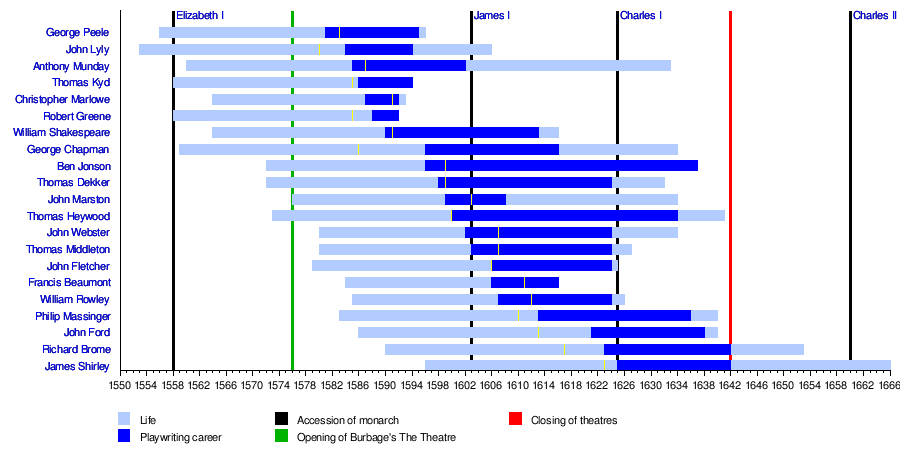
Short yellow lines indicate 27 years—the average age these authors began their playwrighting careers
Genres
Genres of the period included the history play, which depicted English or European history. Shakespeare's plays about the lives of kings, such as Richard III and Henry V, belong to this category, as do Christopher Marlowe's Edward II and George Peele's Famous Chronicle of King Edward the First. History plays also dealt with more recent events, like A Larum for London which dramatizes the sack of Antwerp in 1576. A better known play, Peele's The Battle of Alcazar (c. 1591), depicts the battle of Alcácer Quibir in 1578.
Tragedy was a very popular genre. Marlowe's tragedies were exceptionally successful, such as Dr. Faustus and The Jew of Malta. The audiences particularly liked revenge dramas, such as Thomas Kyd's The Spanish Tragedy. The four tragedies considered to be Shakespeare's greatest (Hamlet, Othello, King Lear and Macbeth) were composed during this period.
Comedies were common, too. A subgenre developed in this period was the city comedy, which deals satirically with life in London after the fashion of Roman New Comedy. Examples are Thomas Dekker's The Shoemaker's Holiday and Thomas Middleton's A Chaste Maid in Cheapside.
Though marginalised, the older genres like pastoral (The Faithful Shepherdess, 1608), and even the morality play (Four Plays in One, ca. 1608–13) could exert influences. After about 1610, the new hybrid subgenre of the tragicomedy enjoyed an efflorescence, as did the masque throughout the reigns of the first two Stuart kings, James I and Charles I.
Plays on biblical themes were common, Peele's David and Bethsabe being one of the few surviving examples.
Printed texts
Only a minority of the plays of English Renaissance theatre were ever printed. Of Heywood's 220 plays, only about 20 were published in book form.[57] A little over 600 plays were published in the period as a whole, most commonly in individual quarto editions. (Larger collected editions, like those of Shakespeare's, Ben Jonson's, and Beaumont and Fletcher's plays, were a late and limited development.) Through much of the modern era, it was thought that play texts were popular items among Renaissance readers that provided healthy profits for the stationers who printed and sold them. By the turn of the 21st century, the climate of scholarly opinion shifted somewhat on this belief: some contemporary researchers argue that publishing plays was a risky and marginal business[58]—though this conclusion has been disputed by others.[59] Some of the most successful publishers of the English Renaissance, like William Ponsonby or Edward Blount, rarely published plays.
A small number of plays from the era survived not in printed texts but in manuscript form.[h]
The end of English Renaissance theatre
The rising Puritan movement was hostile toward theatre, as they felt that "entertainment" was sinful. Politically, playwrights and actors were clients of the monarchy and aristocracy, and most supported the Royalist cause. The Puritan faction, long powerful in London, gained control of the city early in the First English Civil War, and on 2 September 1642, the Long Parliament, pushed by the Parliamentarian party, under Puritan influence, banned the staging of plays in the London theatres though it did not, contrary to what is commonly stated, order the closure, let alone the destruction, of the theatres themselves:
Whereas the distressed Estate of Ireland, steeped in her own Blood, and the distracted Estate of England, threatened with a Cloud of Blood by a Civil War, call for all possible Means to appease and avert the Wrath of God, appearing in these Judgements; among which, Fasting and Prayer, having been often tried to be very effectual, having been lately and are still enjoined; and whereas Public Sports do not well agree with Public Calamities, nor Public Stage-plays with the Seasons of Humiliation, this being an Exercise of sad and pious Solemnity, and the other being Spectacles of Pleasure, too commonly expressing lascivious Mirth and Levity: It is therefore thought fit, and Ordained, by the Lords and Commons in this Parliament assembled, That, while these sad causes and set Times of Humiliation do continue, Public Stage Plays shall cease, and be forborn, instead of which are recommended to the People of this Land the profitable and seasonable considerations of Repentance, Reconciliation, and Peace with God, which probably may produce outward Peace and Prosperity, and bring again Times of Joy and Gladness to these Nations.
— His Majesty's Stationery Office, Acts and Ordinances of the Interregnum, 1642–1660, "September 1642: Order for Stage-plays to cease"[60]
The Act purports the ban to be temporary ("... while these sad causes and set Times of Humiliation do continue, Public Stage Plays shall cease and be forborn") but does not assign a time limit to it.
Even after 1642, during the English Civil War and the ensuing Interregnum (English Commonwealth), some English Renaissance theatre continued. For example, short comical plays called drolls were allowed by the authorities, while full-length plays were banned. The theatre buildings were not closed but rather were used for purposes other than staging plays.[i]
The performance of plays remained banned for most of the next eighteen years, becoming allowed again after the Restoration of the monarchy in 1660. The theatres began performing many of the plays of the previous era, though often in adapted forms. New genres of Restoration comedy and spectacle soon evolved, giving English theatre of the later seventeenth century its distinctive character.
List of playwrights
- William Alabaster[61]
- William Alexander, Earl of Stirling
- Robert Armin
- Barnabe Barnes
- Lording Barry
- Francis Beaumont
- William Berkeley
- Samuel Brandon
- Antony Brewer
- Richard Brome
- Samuel Brooke
- William Browne (poet)
- Thomas Campion
- Lodowick Carlell
- William Cartwright
- Elizabeth Cary, Lady Falkland
- Robert Cecil, Earl of Salisbury
- George Chapman
- Henry Cheke
- Henry Chettle
- John Clavell
- Anthony Chute
- Robert Daborne
- Samuel Daniel
- William Davenant
- Robert Davenport
- John Davidson
- John Day
- Thomas Dekker
- Michael Drayton
- Richard Edwardes
- George Ferebe
- Nathan Field
- John Fletcher
- Phineas Fletcher
- John Ford
- Abraham Fraunce
- Ulpian Fulwell
- William Gager
- George Gascoigne
- Henry Glapthorne
- Thomas Goffe
- Arthur Golding
- Robert Greene
- Fulke Greville
- Matthew Gwinne
- William Haughton
- Walter Hawkesworth
- Mary Herbert (writer)
- Thomas Heywood
- Thomas Hughes
- Thomas Ingelend
- John Jeffere
- Ben Jonson
- Henry Killigrew
- Thomas Killigrew
- Thomas Kyd
- Sir Henry Lee
- Thomas Legge
- Thomas Lodge
- Thomas Lupton
- John Lyly
- Lewis Machin
- Francis Marbury
- Gervase Markham
- Christopher Marlowe
- Shackerley Marmion
- John Marston
- John Mason
- Philip Massinger
- Thomas May
- Thomas Middleton
- Anthony Munday
- Thomas Nabbes
- Thomas Nashe
- Thomas Nelson
- Thomas Norton
- George Peele
- William Percy
- John Phillip
- John Pickering (dramatist)
- Henry Porter
- Thomas Preston
- Samuel Rowley
- William Rowley
- George Ruggle
- Joseph Rutter
- Thomas Sackville
- William Sampson
- William Shakespeare
- Edward Sharpham
- James Shirley
- Sir Philip Sidney
- Wentworth Smith
- John Stephens
- Sir John Suckling
- Robert Tailor
- Richard Tarlton
- Thomas Tomkis
- Cyril Tourneur
- Francis Verney
- William Wager
- George Wapull
- William Warner (poet)
- John Webster
- George Whetstone
- George Wilkins
- Robert Wilmot
- Arthur Wilson
- Robert Wilson
- Nathaniel Woodes
- Robert Yarington
Actors
- William Alabaster
- Edward Alleyn
- Robert Armin
- William Barksted
- Richard Brome
- Richard Burbage
- William Cavendish
- Henry Condell
- Nathan Field
- Alexander Gough
- Thomas Greene
- Richard Gunnell
- Stephen Hammerton
- Charles Hart
- John Heminges
- Thomas Heywood
- John Honyman
- Ben Jonson
- Will Kempe
- John Lowin
- William Ostler
- Andrew Pennycuicke
- Augustine Phillips
- Thomas Pollard
- Thomas Pope
- Timothy Read
- Richard Robinson
- Samuel Rowley
- William Rowley
- William Shakespeare
- William Sly
- Robert Wilson
Playhouses
Playing companies
- King's Revels Children
- King's Revels Men
- Lady Elizabeth's Men
- Leicester's Men
- Lord Strange's Men (later Derby's Men)
- Oxford's Boys
- Oxford's Men
- Pembroke's Men
- Prince Charles's Men
- Queen Anne's Men
- Queen Elizabeth's Men
- Queen Henrietta's Men
- The Admiral's Men
- The Children of Paul's
- The Children of the Chapel (Queen's Revels)
- The King's Men
- The Lord Chamberlain's Men
- Sussex's Men
- Warwick's Men
- Worcester's Men
Timeline of English Renaissance playing companies
English Renaissance playing company timeline
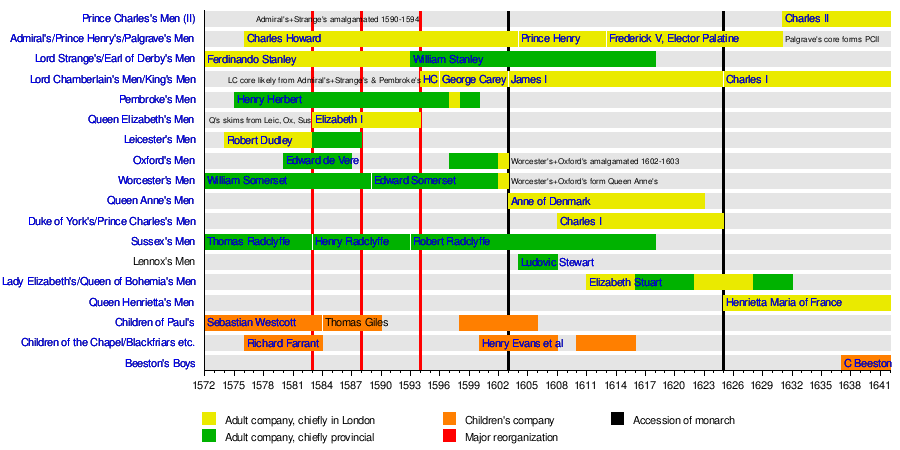
This timeline charts the existence of major English playing companies from 1572 ("Acte for the punishment of Vacabondes", which legally restricted acting to players with a patron of sufficient degree) to 1642 (the closing of the theatres by Parliament). A variety of strolling players, and even early London-based troupes existed before 1572. The situations were often fluid, and much of this history is obscure; this timeline necessarily implies more precision than exists in some cases. The labels down the left indicate the most common names for the companies. The bar segments indicate the specific patron. In the case of children's companies (a distinct legal situation) some founders are noted.
Other significant figures
- Susan Baskervile, investor and litigant
- William Beeston, manager
- George Buc, Master of the Revels 1609–1622
- Cuthbert Burbage, entrepreneur
- James Burbage, entrepreneur
- Ralph Crane, scribe
- Philip Henslowe, entrepreneur
- Henry Herbert, Master of the Revels 1623–1673
- Edward Knight, prompter
- Francis Langley, entrepreneur
- John Rhodes, manager
- Edmund Tilney, Master of the Revels 1579–1609
See also
Notes and references
Notes
- See for example the Red Bull Theatre and Robert Cox
References
All references to Shakespeare's plays, unless otherwise specified, are taken from the Folger Shakespeare Library's Folger Digital Editions texts edited by Barbara Mowat, Paul Werstine, Michael Poston, and Rebecca Niles. Under their referencing system, 3.1.55 means act 3, scene 1, line 55. Prologues, epilogues, scene directions, and other parts of the play that are not a part of character speech in a scene, are referenced using Folger Through Line Number: a separate line numbering scheme that includes every line of text in the play.
- CITEREFChambers1923
Sources
- Astington, John H. (2010). Actors and Acting in Shakespeare's Time: The Art of Stage Playing. Cambridge: Cambridge University Press. doi:10.1017/CBO9780511761379. ISBN 9780511761379 – via Cambridge Core.
- Bellinger, Martha Fletcher (1927). A Short History of the Drama. New York: Henry Holt and Company. hdl:2027/mdp.39015008227087. OL 17749089M.
- Blayney, Peter W. M. (1997). "The Publication of Playbooks". In Cox, John D.; Kastan, David Scott (eds.). A New History of Early English Drama. New York: Columbia University Press. pp. 383–422. ISBN 9780231102438.
- Boas, Frederick S. (1914). University Drama in the Tudor Age. Oxford: Clarendon Press. hdl:2027/mdp.39015030766243. OL 7149074M.
- Bowsher, Julian; Miller, Pat (2010). The Rose and the Globe: Playhouses of Shakespeare's Bankside, Southwark: Excavations 1988–91. Museum of London Archaeology. ISBN 978-1-901992-85-4.
- Bryson, Bill (2008). Shakespeare: The World as a Stage. HarperPerennial. p. 78. ISBN 978-0007197903.
- Calore, Michela (2003). "Elizabethan Plots: A Shared Code of Theatrical and Fictional Language". Theatre Survey. Cambridge University Press. 44 (2): 249–261. doi:10.1017/S0040557403000127. eISSN 1475-4533. ISSN 0040-5574. S2CID 162509372 – via Cambridge Core.
- Chambers, E.K. (2009) [first published 1923]. The Elizabethan Stage. Vol. 3. New York: Oxford University Press. ISBN 9780199567508.
- Christiansen, Nancy L. (1997). "Rhetoric as Character-Fashioning: The Implications of Delivery's 'Places' in the British Renaissance Paideia". Rhetorica: A Journal of the History of Rhetoric. International Society for the History of Rhetoric. 15 (3): 297–334. doi:10.1525/rh.1997.15.3.297. eISSN 1533-8541. ISSN 0734-8584. JSTOR 10.1525/rh.1997.15.3.297. S2CID 170122602.
- Cook, Ann Jennalie (2014). The Privileged Playgoers of Shakespeare's London, 1576-1642. Princeton: Princeton University Press. ISBN 9780691614953.
- Cunningham, Karen J. (2007). "'So Many Books, So Many Rolls of Ancient Time': The Inns of Court and Gorboduc". In Kezar, Dennis (ed.). Solon and Thespis: Law and Theater in the English Renaissance. Notre Dame, Indiana: University of Notre Dame Press. pp. 197–217. ISBN 978-0-268-03313-2.
- Dawson, Anthony B. (2002). "International Shakespeare". In Wells, Stanley; Stanton, Sarah (eds.). The Cambridge Companion to Shakespeare on Stage. Cambridge Companions to Shakespeare. Cambridge: Cambridge University Press. pp. 174–193. doi:10.1017/CCOL0521792959.010. ISBN 9780511999574 – via Cambridge Core.
- Farmer, Alan B.; Lesser, Zachary (2005). "The Popularity of Playbooks Revisited". Shakespeare Quarterly. Folger Shakespeare Library. 56 (1): 1–32. doi:10.1353/shq.2005.0043. eISSN 1538-3555. ISSN 0037-3222. JSTOR 3844024. S2CID 59134858.
- Firth, C.H.; Rait, R.S., eds. (1911). "September 1642: Order for Stage-plays to cease". Acts and Ordinances of the Interregnum, 1642-1660. Laws, etc. London: His Majesty's Stationery Office. hdl:2027/inu.30000046036137. OL 6559925M.
- Gurr, Andrew (2009). The Shakespearean Stage 1574–1642 (4th ed.). Cambridge: Cambridge University Press. doi:10.1017/CBO9780511819520. ISBN 9780511819520 – via Cambridge Core.
- Halliday, F.E. (1964). A Shakespeare Companion 1564–1964. Baltimore: Penguin. OCLC 683393. OL 5906173M.
- Hattaway, Michael (2008). Elizabethan Popular Theatre: Plays in Performance. London: Routledge. ISBN 9780415489010.
- Ingram, William (1992). The Business of Playing: The Beginnings of The Adult Professional Theater in Elizabethan London. Cornell University Press. ISBN 978-0-8014-2671-1.
- Ichikawa, Mariko (2012). The Shakespearean Stage Space. Cambridge: Cambridge University Press. doi:10.1017/CBO9781139097192. ISBN 9781139097192 – via Cambridge Core.
- Keenan, Siobhan (2002). Travelling Players in Shakespeare's England. Basingstoke: Palgrave Macmillan. doi:10.1057/9780230597549. ISBN 978-0-333-96820-8.
- Keenan, Siobhan (2014). Acting Companies and their Plays in Shakespeare's London. London: Bloomsbury Publishing. doi:10.5040/9781472575692. ISBN 9781408146637.
- Kregor, Karl H. (1993). "Doubled Roles in English Renaissance Drama: Problems, Possibilities and Marlowe's Edward II". Theatre History Studies. University of Alabama Press. 13. ISSN 0733-2033.
- MacIntyre, Jean (1992). Costumes and Scripts in the Elizabethan Theatres. Edmonton: University of Alberta Press. ISBN 978-0-88864-226-4.
- Maclennan, Ian Burns (1994). "If I were a woman": A study of the boy player in the Elizabethan public theatre (PhD thesis).
- Mann, David Albert (1991). The Elizabethan Player: Contemporary Stage Representation. Routledge Library Editions. Routledge. ISBN 9781138235656.
- Montrose, Louis (1996). The Purpose of Playing: Shakespeare and the Cultural Politics of the Elizabethan Theatre. University of Chicago Press. ISBN 9780226534831.
- Ordish, T. Fairman (1899). Early London Theatres: In the Fields. Antiquary's library. London: Elliot Stock. hdl:2027/hvd.hnnr4j. OL 16796098M.
- Triesault, Jon Lloyd (1970). Elizabethan public playhouse acting: Its development and complex style (MA thesis). University of Southern California.
- Wickham, Glynne; Berry, Herbert; Ingram, William (2000). English professional theatre, 1530-1660. Cambridge: Cambridge University Press. ISBN 978-0-521-23012-4.
External links
- Early Modern Drama database
- Shakespeare and the Globe from Encyclopædia Britannica; a more comprehensive resource on the theatre of this period than its name suggests.
- A Lecture on Elizabethan Theatre by Thomas Larque
- A site discussing the influence of Ancient Rome on English Renaissance Theatre
- Richard Southern archive at the University of Bristol Theatre Collection, University of Bristol
- Roy, Pinaki. "All the World's a Stage: Remembering the Prominent Renaissance London Playhouses". Yearly Shakespeare (ISSN 0976-9536), 11 (April 2013): 24–32.
- Roy, Pinaki. " If we ever meet again: The Three Groups of English Renaissance Playwrights". Yearly Shakespeare (ISSN 0976-9536), 17 (April 2019): 31–38.
- The Francis Longe Collection at the Library of Congress contains some early editions of theatrical works published in English between 1607 and 1812.
- [1]
https://en.wikipedia.org/wiki/English_Renaissance_theatre
Sites of dramatic performance
Grammar schools
The English grammar schools, like those on the continent, placed special emphasis on the trivium: grammar, logic, and rhetoric. Though rhetorical instruction was intended as preparation for careers in civil service such as law, the rhetorical canons of memory (memoria) and delivery (pronuntiatio), gesture and voice, as well as exercises from the progymnasmata, such as the prosopopoeia, taught theatrical skills.[2][3] Students would typically analyse Latin and Greek texts, write their own compositions, memorise them, and then perform them in front of their instructor and their peers.[4] Records show that in addition to this weekly performance, students would perform plays on holidays,[5] and in both Latin and English.[6]
https://en.wikipedia.org/wiki/English_Renaissance_theatre
A prosopopoeia (Greek: προσωποποιία, /prɒsoʊpoʊˈpiːə/) is a rhetorical device in which a speaker or writer communicates to the audience by speaking as another person or object. The term literally derives from the Greek roots prósopon "face, person", and poiéin "to make, to do".
https://en.wikipedia.org/wiki/Prosopopoeia
Progymnasmata (Greek προγυμνάσματα "fore-exercises"; Latin praeexercitamina) are a series of preliminary rhetorical exercises that began in ancient Greece and continued during the Roman Empire. These exercises were implemented by students of rhetoric, who began their schooling between ages twelve and fifteen. The purpose of these exercises was to prepare students for writing declamations after they had completed their education with the grammarians. There are only four surviving handbooks of progymnasmata, attributed to Aelius Theon, Hermogenes of Tarsus, Aphthonius of Antioch, and Nicolaus the Sophist.[1]
https://en.wikipedia.org/wiki/Progymnasmata
| Part of a series of articles on |
| Rhetoric |
|---|
| Five canons |
Pronuntiatio was the discipline of delivering speeches in Western classical rhetoric. It is one of the five canons of classical rhetoric (the others being inventio, dispositio, elocutio, and memoria) that concern the crafting and delivery of speeches. In literature the equivalent of ancient pronuntiatio is the recitation of epics (Aris. Po. 26.2.).[1]
https://en.wikipedia.org/wiki/Pronuntiatio
| Part of a series of articles on |
| Rhetoric |
|---|
| Five canons |
Memoria was the term for aspects involving memory in Western classical rhetoric. The word is Latin, and can be translated as "memory".
https://en.wikipedia.org/wiki/Memoria
This article has an unclear citation style. (January 2020) |
| Part of a series on |
| Linguistics |
|---|
|
|
|
|
|
|
|
|
|
|
| Part of a series of articles on |
| Rhetoric |
|---|
| Five canons |
Rhetoric (/ˈrɛtərɪk/)[note 1] is the art of persuasion, which along with grammar and logic (or dialectic), is one of the three ancient arts of discourse. Rhetoric aims to study the techniques writers or speakers utilize to inform, persuade, or motivate particular audiences in specific situations.[5] Aristotle defines rhetoric as "the faculty of observing in any given case the available means of persuasion" and since mastery of the art was necessary for victory in a case at law, for passage of proposals in the assembly, or for fame as a speaker in civic ceremonies, he calls it "a combination of the science of logic and of the ethical branch of politics".[6] Rhetoric typically provides heuristics for understanding, discovering, and developing arguments for particular situations, such as Aristotle's three persuasive audience appeals: logos, pathos, and ethos. The five canons of rhetoric or phases of developing a persuasive speech were first codified in classical Rome: invention, arrangement, style, memory, and delivery.
From Ancient Greece to the late 19th century, rhetoric played a central role in Western education in training orators, lawyers, counsellors, historians, statesmen, and poets.[7][note 2]
https://en.wikipedia.org/wiki/Rhetoric
The trivium is the lower division of the seven liberal arts and comprises grammar, logic, and rhetoric.[1]
The trivium is implicit in De nuptiis Philologiae et Mercurii ("On the Marriage of Philology and Mercury") by Martianus Capella, but the term was not used until the Carolingian Renaissance, when it was coined in imitation of the earlier quadrivium.[2] Grammar, logic, and rhetoric were essential to a classical education, as explained in Plato's dialogues. The three subjects together were denoted by the word trivium during the Middle Ages, but the tradition of first learning those three subjects was established in ancient Greece. Contemporary iterations have taken various forms, including those found in certain British and American universities (some being part of the Classical education movement) and at the independent Oundle School in the United Kingdom.[3]
https://en.wikipedia.org/wiki/Trivium
The Honourable Society of the Inner Temple, commonly known as the Inner Temple, is one of the four Inns of Court and is a professional association for barristers and judges. To be called to the Bar and practise as a barrister in England and Wales, a person must belong to one of these Inns. It is located in the wider Temple area, near the Royal Courts of Justice, and within the City of London. As a liberty, it functions largely as an independent local government authority.
https://en.wikipedia.org/wiki/Inner_Temple
The Tragedie of Gorboduc, also titled Ferrex and Porrex, is an English play from 1561. It was first performed at the Christmas celebration given by the Inner Temple in 1561, and performed at Whitehall before Queen Elizabeth I on 18 January 1561,[1] by the Gentlemen of the Inner Temple.[2] The authors were Thomas Norton and Thomas Sackville, said to be responsible for the first three Acts, and the final two, respectively.
The first quarto, published by the bookseller William Griffith, was published 22 September 1565.[3] A second authorized quarto corrected by the authors followed in 1570, and was printed by John Day with the title The Tragedie of Ferrex and Porrex. A third edition was published in 1590 by Edward Allde.[4]
The play is notable for several reasons: as the first verse drama in English to employ blank verse; for its political subject matter (the realm of Gorboduc is disputed by his sons Ferrex and Porrex), which was still a touchy area in the early years of Elizabeth's reign, while the succession to the throne was unclear; for its manner, progressing from the models of the morality play and Senecan tragedy in the direction which would be followed by later playwrights. That is, it can be seen as a forerunner of the whole trend that would later produce Titus Andronicus[5] and King Lear. It also provides the first well-documented performance of a play in Ireland: Charles Blount, 8th Baron Mountjoy staged it at Dublin Castle in 1601.
https://en.wikipedia.org/wiki/Gorboduc_(play)
The Tragedie of Gorboduc, also titled Ferrex and Porrex, is an English play from 1561. It was first performed at the Christmas celebration given by the Inner Temple in 1561, and performed at Whitehall before Queen Elizabeth I on 18 January 1561,[1] by the Gentlemen of the Inner Temple.[2] The authors were Thomas Norton and Thomas Sackville, said to be responsible for the first three Acts, and the final two, respectively.
The first quarto, published by the bookseller William Griffith, was published 22 September 1565.[3] A second authorized quarto corrected by the authors followed in 1570, and was printed by John Day with the title The Tragedie of Ferrex and Porrex. A third edition was published in 1590 by Edward Allde.[4]
The play is notable for several reasons: as the first verse drama in English to employ blank verse; for its political subject matter (the realm of Gorboduc is disputed by his sons Ferrex and Porrex), which was still a touchy area in the early years of Elizabeth's reign, while the succession to the throne was unclear; for its manner, progressing from the models of the morality play and Senecan tragedy in the direction which would be followed by later playwrights. That is, it can be seen as a forerunner of the whole trend that would later produce Titus Andronicus[5] and King Lear. It also provides the first well-documented performance of a play in Ireland: Charles Blount, 8th Baron Mountjoy staged it at Dublin Castle in 1601.
Synopsis
The playtext summarizes the plot in the 'Argument': "Gorboduc, King of Britain, divided his realm in his lifetime to his sons, Ferrex and Porrex. The sons fell to dissension. The younger killed the elder. The mother that more dearly loved the elder, for revenge killed the younger. The people, moved with the cruelty of the fact, rose in rebellion and slew both father and mother. The nobility assembled and most terribly destroyed the rebels. And afterward, for want of issue of the prince, whereby the succession of the crown became uncertain, they fell to civil war in which both they and many of their issues were slain, and the land for a long time almost desolate and miserably wasted."
Gorboduc announces his plan to divide his kingdom between his sons Ferrex and Porrex. His councillors advise against it, reminding him of the conflict that arose between the cousins Morgan and Cunedag when Britain was divided between them, which led to Morgan's death. Gorboduc appreciates their advice but goes ahead with his plan. Ferrex is advised by the parasite Hermon to take the whole Kingdom. Tyndar tells Porrex that his brother is making plans for war, meaning Porrex decides to invade Ferrex's realm. Dordan writes to Gorboduc of this. Gorboduc bewails this and is advised to raise a force against them. However, a nuntius (messenger) then enters, bearing the news of Ferrex's death. Porrex meets his father and justifies his actions, saying that he was content to rule his kingdom but that his brother plotted to take his lands. However, his mother Videna then stabs him dead while he is sleeping in revenge for Ferrex. The people rise up in anger and kill both her and Gorboduc, blaming the King for Porrex's death. The nobles prepare to act against the rebels. However, the succession is left uncertain. Fergus, Duke of Albany, plans to gain the throne and begins raising an army while his friends try to gather support. The nobles defeat the rebels, but hear that Fergus has raised an army and intends to take the crown. The nobles oppose Fergus, thinking of him as a foreign invader. Arostus says that Parliament must decide upon a new King. Eubulus bemoans the chaos that has happened to the country and says that Parliament should have been called while the King was alive, but that justice will eventually prevail.
Characters
- Gorboduc, King of Great Britain
- Videna, Queen and wife to King Gorboduc
- Ferrex, Elder Son to King Gorboduc
- Porrex, Younger Son to King Gorboduc
- Clotyn, Duke of Cornewall
- Fergus, Duke of Albany
- Mandud, Duke of Leagre
- Gwenard, Duke of Cumberland
- Eubulus, Secretary to the king Gorboduc
- Arostus, A Counsellour of king Gorboduc
- Dordan, A Counsellour assigned by the king to his Eldest Son Ferrex
- Philander, A Counsellour assigned by the king to his younger Son Porrex
- Hermon, A Parasite of Ferrex and Fergus's slave
- Tyndar, A Parasite of Porrex
- Nuntius, A Messenger of Ferrex's death
- Nuntius, A Messenger of Duke Fergus rising
- Marcella, A Lady of the Queen's privy Chamber
- Chorus, Four ancient and sage men of Britain
References
- Carroll, James D. (2004) "Gorboduc and Titus Andronicus", Notes and Queries, 51: 267-9.
External links
- The Tragedie of Gorboduc (1565) original black-letter edition.
- Gorboduc or Ferrex and Porrex, a tragedy, by T. Norton and T. Sackville, ed. by L.T. Smith (1883)
https://en.wikipedia.org/wiki/Gorboduc_(play)
Blank verse is poetry written with regular metrical but unrhymed lines, almost always in iambic pentameter.[1] It has been described as "probably the most common and influential form that English poetry has taken since the 16th century",[2] and Paul Fussell has estimated that "about three quarters of all English poetry is in blank verse".[3]
The first known use of blank verse in English was by Henry Howard, Earl of Surrey in his translation of the Aeneid (composed c. 1540; published posthumously, 1554–1557[4]). He may have been inspired by the Latin original since classical Latin verse did not use rhyme, or possibly he was inspired by Ancient Greek verse or the Italian verse form of versi sciolti, both of which also did not use rhyme.
The play Arden of Faversham (around 1590 by an unknown author) is a notable example of end-stopped blank verse.
https://en.wikipedia.org/wiki/Blank_verse
Not to be confused with free verse.
https://en.wikipedia.org/wiki/Blank_verse
Universities
Academic drama stems from late medieval and early modern practices of miracles and morality plays as well as the Feast of Fools and the election of a Lord of Misrule.[13] The Feast of Fools includes mummer plays.[14] The universities, particularly Oxford and Cambridge, were attended by students studying for bachelor's degrees and master's degrees, followed by doctorates in Law, Medicine, and Theology.[15] In the 1400s, dramas were often restricted to mummer plays with someone who read out all the parts in Latin.[16] With the rediscovery and redistribution of classical materials during the English Renaissance, Latin and Greek plays began to be restaged.[17] These plays were often accompanied by feasts.[18] Queen Elizabeth I viewed dramas during her visits to Oxford and Cambridge.[19] A well-known play cycle which was written and performed in the universities was the Parnassus Plays.[13]
https://en.wikipedia.org/wiki/English_Renaissance_theatre
The Parnassus plays are three satiric comedies, or full-length academic dramas each divided into five acts. They date from between 1598 and 1602.
https://en.wikipedia.org/wiki/Parnassus_plays
https://en.wikipedia.org/w/index.php?title=Parnassus_Plays&redirect=no
The English Renaissance was a cultural and artistic movement in England from the early 16th century to the early 17th century.[1] It is associated with the pan-European Renaissance that is usually regarded as beginning in Italy in the late 14th century. As in most of the rest of northern Europe, England saw little of these developments until more than a century later within the Northern Renaissance. Renaissance style and ideas were slow to penetrate England, and the Elizabethan era in the second half of the 16th century is usually regarded as the height of the English Renaissance. Many scholars see its beginnings in the early 16th century during the reign of Henry VIII.[2]
The English Renaissance is different from the Italian Renaissance in several ways. The dominant art forms of the English Renaissance were literature and music. Visual arts in the English Renaissance were much less significant than in the Italian Renaissance. The English period began far later than the Italian, which was moving into Mannerism and the Baroque by the 1550s or earlier.
https://en.wikipedia.org/wiki/English_Renaissance
https://en.wikipedia.org/wiki/Feast_of_Fools
https://en.wikipedia.org/wiki/Lord_of_Misrule
https://en.wikipedia.org/wiki/Mummers%27_play
The early modern period of modern history spans the period after the Late Middle Ages of the post-classical era (c. 1400–1500) to the beginning of the Age of Revolutions (c. 1800). Although the chronological limits of this period are open to debate, the timeframe is variously demarcated by historians as beginning with the fall of Constantinople in 1453, the Renaissance period in Europe and Timurid Central Asia,the end of the Crusades, the Age of Discovery (especially the voyages of Christopher Columbus beginning in 1492 but also Vasco da Gama's discovery of the sea route to India in 1498), and ending around the French Revolution in 1789, or Napoleon's rise to power.[1][2]
Historians in recent decades have argued that from a worldwide standpoint, the most important feature of the early modern period was its spreading globalizing character.[3] New economies and institutions emerged, becoming more sophisticated and globally articulated over the course of the period. The early modern period also included the rise of the dominance of mercantilism as an economic theory. Other notable trends of the period include the development of experimental science, increasingly rapid technological progress, secularized civic politics, accelerated travel due to improvements in mapping and ship design, and the emergence of nation states.
https://en.wikipedia.org/wiki/Early_modern_period
Western/Central Europe: Eastern Europe:
The Late Middle Ages, or late medieval period, was the period of European history lasting from AD 1300 to 1500. The Late Middle Ages followed the High Middle Ages and preceded the onset of the early modern period (and in much of Europe, the Renaissance).[1]
Around 1300, centuries of prosperity and growth in Europe came to a halt. A series of famines and plagues, including the Great Famine of 1315–1317 and the Black Death, reduced the population to around half of what it had been before the calamities.[2] Along with depopulation came social unrest and endemic warfare. France and England experienced serious peasant uprisings, such as the Jacquerie and the Peasants' Revolt, as well as over a century of intermittent conflict, the Hundred Years' War. To add to the many problems of the period, the unity of the Catholic Church was temporarily shattered by the Western Schism. Collectively, those events are sometimes called the Crisis of the Late Middle Ages.[3]
Despite the crises, the 14th century was also a time of great progress in the arts and sciences. Following a renewed interest in ancient Greek and Roman texts that took root in the High Middle Ages, the Italian Renaissance began. The absorption of Latin texts had started before the Renaissance of the 12th century through contact with Arabs during the Crusades, but the availability of important Greek texts accelerated with the Fall of Constantinople to the Ottoman Turks, when many Byzantine scholars had to seek refuge in the West, particularly Italy.[4]
Combined with this influx of classical ideas was the invention of printing, which facilitated dissemination of the printed word and democratized learning. Those two things would later lead to the Reformation. Toward the end of the period, the Age of Discovery began. The expansion of the Ottoman Empire cut off trading possibilities with the East. Europeans were forced to seek new trading routes, leading to the Spanish expedition under Christopher Columbus to the Americas in 1492 and Vasco da Gama's voyage to Africa and India in 1498. Their discoveries strengthened the economy and power of European nations.
The changes brought about by these developments have led many scholars to view this period as the end of the Middle Ages and the beginning of modern history and of early modern Europe. However, the division is somewhat artificial, since ancient learning was never entirely absent from European society.[citation needed] As a result, there was developmental continuity between the ancient age (via classical antiquity) and the modern age.[citation needed] Some historians, particularly in Italy, prefer not to speak of the Late Middle Ages at all but rather see the high period of the Middle Ages transitioning to the Renaissance and the modern era.[citation needed]
https://en.wikipedia.org/wiki/Late_Middle_Ages
Academic drama refers to a theatrical movement that emerged in the mid 16th century during the Renaissance. Dedicated to the study of classical dramas for the purpose of higher education, universities in England began to produce the plays of Sophocles, Euripides, and Seneca the Younger (among others) in the Greek and Roman languages, as well as neoclassical dramas. These classical and neoclassical productions were performed by young scholars at universities in Cambridge and Oxford.[1] Other European countries, such as Spain and Italy adapted classical plays into a mixture of Latin and vernacular dramas. These Spanish and Italian adaptations were used in teaching morals in schools and colleges.[2] The intellectual development of dramas in schools, universities, and Inns of Court in Europe allowed the emergence of the great playwrights of the late 16th century.[3]
https://en.wikipedia.org/wiki/Academic_drama
Midas is an Elizabethan era stage play, a comedy written by John Lyly. It is arguably the most overtly and extensively allegorical of Lyly's allegorical plays.
https://en.wikipedia.org/wiki/Midas_(Lyly_play)
Gallathea or Galatea is an Elizabethan era stage play, a comedy by John Lyly. The first record of the play's performance was at Greenwich Palace on New Year's Day, 1588 where it was performed before Queen Elizabeth I and her court by the Children of St Paul's, a troupe of boy actors. At this point in his literary career, Lyly had already achieved success with his prose romance Euphues and was a writer in residence at Blackfriars theatre. The play is set in a village on the Lincolnshire shore of the river Humber and in the neighboring woods. It features a host of characters including Greek deities, nymphs, fairies, and some shepherds.
https://en.wikipedia.org/wiki/Gallathea
| Old St Paul's Cathedral | |
|---|---|
 Digital
reconstruction giving an impression of Old St Paul's during the Middle
Ages. The image is based on a model of the Cathedral in the Museum of London, composited with a modern city background. | |
Old St Paul's on a 1300 map of the City of London | |
| 51°30′49″N 0°5′54″W | |
| Denomination | Church of England |
| Previous denomination | Roman Catholic |
| History | |
| Dedication | Saint Paul |
| Events | Cathedral and canonry destroyed by fire—1087, 1666 |
| Architecture | |
| Previous cathedrals | 3 |
| Style | English Gothic |
| Years built |
|
| Administration | |
| Diocese | London |
| Deanery |
|
| Clergy | |
| Bishop(s) | Bishop of London |
| Dean | Dean of St Paul's |
Building details | |
 | |
| Record height | |
|---|---|
| Tallest in the world from the mid-14th century to 1311[I] | |
| Preceded by | Great Pyramid of Giza |
| Surpassed by | Lincoln Cathedral |
Old St Paul's Cathedral was the cathedral of the City of London that, until the Great Fire of 1666, stood on the site of the present St Paul's Cathedral. Built from 1087 to 1314 and dedicated to Saint Paul, the cathedral was perhaps the fourth church at Ludgate Hill.[1]
Work on the cathedral began after a fire in 1087. Work took more than 200 years, and was delayed by another fire in 1135. The church was consecrated in 1240, enlarged in 1256 and again in the early 14th century. At its completion in the mid-14th century, the cathedral was one of the longest churches in the world, had one of the tallest spires and some of the finest stained glass.
The presence of the shrine of Saint Erkenwald made the cathedral a site of pilgrimage.[2] In addition to serving as the seat of the Diocese of London, the building developed a reputation as a social hub, with the nave aisle, "Paul's walk", known as a business centre and a place to hear the gossip on the London grapevine. After the Reformation, the open-air pulpit in the churchyard, St Paul's Cross, became the place for radical evangelical preaching and Protestant bookselling.
The cathedral was already in severe structural decline by the early 17th century. Restoration work begun by Inigo Jones in the 1620s was temporarily halted during the English Civil War (1642–1651). In 1666, further restoration was in progress under Sir Christopher Wren when the cathedral was devastated in the Great Fire of London. At that point, it was demolished, and the present cathedral was built on the site.[3]
https://en.wikipedia.org/wiki/Old_St_Paul%27s_Cathedral
| St George's Chapel, Windsor Castle | |
|---|---|
| The King's Free Chapel of the College of St George, Windsor Castle | |
 | |
 |
| 51°29′01″N 00°36′25″W | |
| Location | Windsor |
|---|---|
| Country | England |
| Denomination | Church of England |
| Previous denomination | Roman Catholicism |
| Churchmanship | High Church |
| Website | stgeorges-windsor |
| History | |
| Status | Chapel |
| Founded | 1475 |
| Dedication | St George |
| Architecture | |
| Functional status | Active |
| Heritage designation | Grade I listed |
| Style | Gothic |
| Years built | 1475 |
| Completed | 1511 |
| Specifications | |
| Capacity | 800 |
| Administration | |
| Diocese | Jurisdiction: Royal Peculiar Location: Oxford |
| Deanery | Dean and Canons of Windsor |
| Clergy | |
| Dean | David Conner |
| Precentor | Martin Poll (Chaplain) |
| Canon(s) | Mark Powell (Steward) |
| Canon Treasurer | Hueston Finlay (Vice-Dean) |
| Laity | |
| Organist/Director of music | James Vivian |
| Music group(s) | Choir of St George's Chapel |
St George's Chapel at Windsor Castle in England is a castle chapel built in the late-medieval Perpendicular Gothic style. It is a Royal Peculiar (a church under the direct jurisdiction of the monarch), and the Chapel of the Order of the Garter. St George's Chapel was founded in the 14th century by King Edward III and extensively enlarged in the late 15th century. It is located in the Lower Ward of the castle.[1] The castle has belonged to the monarchy for almost 1,000 years and was a principal residence of Elizabeth II before her death. The chapel has been the scene of many royal services, weddings and burials – in the 19th century, St George's Chapel and the nearby Frogmore Gardens superseded Westminster Abbey as the chosen burial place for the British royal family.[2] The running of the chapel is the responsibility of the dean and Canons of Windsor who make up the College of Saint George. They are assisted by a clerk, verger and other staff. The Society of the Friends of St George's and Descendants of the Knights of the Garter, a registered charity, was established in 1931 to assist the college in maintaining the chapel.
https://en.wikipedia.org/wiki/St_George%27s_Chapel,_Windsor_Castle
Inns of Court
Upon graduation, many university students, especially those going into law, would reside and participate in the Inns of Court. The Inns of Court were communities of working lawyers and university alumni.[20] Notable literary figures and playwrights who resided in the Inns of Court include John Donne, Francis Beaumont, John Marston, Thomas Lodge, Thomas Campion, Abraham Fraunce, Sir Philip Sidney, Sir Thomas More, Sir Francis Bacon, and George Gascoigne.[21][22] Like the university, the Inns of Court elected their own Lord of Misrule.[23] Other activities included participation in moot court, disputation, and masques.[23][22] Plays written and performed in the Inns of Court include Gorboduc, Gismund of Salerne, and The Misfortunes of Arthur.[22] An example of a famous masque put on by the Inns was James Shirley's The Triumph of Peace. Shakespeare's The Comedy of Errors and Twelfth Night were also performed here, although written for commercial theater.[24]
https://en.wikipedia.org/wiki/English_Renaissance_theatre
In the scholastic system of education of the Middle Ages, disputations (in Latin: disputationes, singular: disputatio) offered a formalized method of debate designed to uncover and establish truths in theology and in sciences. Fixed rules governed the process: they demanded dependence on traditional written authorities and the thorough understanding of each argument on each side.
https://en.wikipedia.org/wiki/Disputation
The masque was a form of festive courtly entertainment that flourished in 16th- and early 17th-century Europe, though it was developed earlier in Italy, in forms including the intermedio (a public version of the masque was the pageant). A masque involved music, dancing, singing and acting, within an elaborate stage design, in which the architectural framing and costumes might be designed by a renowned architect, to present a deferential allegory flattering to the patron. Professional actors and musicians were hired for the speaking and singing parts. Masquers who did not speak or sing were often courtiers: the English queen Anne of Denmark frequently danced with her ladies in masques between 1603 and 1611, and Henry VIII and Charles I of England performed in the masques at their courts.[citation needed] In the tradition of masque, Louis XIV of France danced in ballets at Versailles with music by Jean-Baptiste Lully.[1]
https://en.wikipedia.org/wiki/Masque
Moot court is a co-curricular activity at many law schools. Participants take part in simulated court or arbitration proceedings, usually involving drafting memorials or memoranda and participating in oral argument. In many countries, the phrase "moot court" may be shortened to simply "moot" or "mooting". Participants are either referred to as "mooters" or, less conventionally, "mooties".
https://en.wikipedia.org/wiki/Moot_court
Twelfth Night, or What You Will is a romantic comedy by William Shakespeare, believed to have been written around 1601–1602 as a Twelfth Night's entertainment for the close of the Christmas season. The play centres on the twins Viola and Sebastian, who are separated in a shipwreck. Viola (who is disguised as Cesario) falls in love with the Duke Orsino, who in turn is in love with Countess Olivia. Upon meeting Viola, Countess Olivia falls in love with her thinking she is a man.
The play expanded on the musical interludes and riotous disorder expected of the occasion,[1] with plot elements drawn from the short story "Of Apollonius and Silla" by Barnabe Rich, based on a story by Matteo Bandello. The first documented public performance was on 2 February 1602, at Candlemas, the formal end of Christmastide in the year's calendar. The play was not published until its inclusion in the 1623 First Folio.
https://en.wikipedia.org/wiki/Twelfth_Night
The Comedy of Errors is one of William Shakespeare's early plays. It is his shortest and one of his most farcical comedies, with a major part of the humour coming from slapstick and mistaken identity, in addition to puns and word play. It has been adapted for opera, stage, screen and musical theatre numerous times worldwide. In the centuries following its premiere, the play's title has entered the popular English lexicon as an idiom for "an event or series of events made ridiculous by the number of errors that were made throughout".[1]
Set in the Greek city of Ephesus, The Comedy of Errors tells the story of two sets of identical twins who were accidentally separated at birth. Antipholus of Syracuse and his servant, Dromio of Syracuse, arrive in Ephesus, which turns out to be the home of their twin brothers, Antipholus of Ephesus and his servant, Dromio of Ephesus. When the Syracusans encounter the friends and families of their twins, a series of wild mishaps based on mistaken identities lead to wrongful beatings, a near-seduction, the arrest of Antipholus of Ephesus, and false accusations of infidelity, theft, madness, and demonic possession.
https://en.wikipedia.org/wiki/The_Comedy_of_Errors
The Triumph of Peace was a Caroline era masque, "invented and written" by James Shirley, performed on 3 February 1634 and published the same year. The production was designed by Inigo Jones.
https://en.wikipedia.org/wiki/The_Triumph_of_Peace
The Misfortunes of Arthur, Uther Pendragon's son reduced into tragical notes is a play by the 16th-century English dramatist Thomas Hughes. Written in 1587, it was performed at Greenwich before Queen Elizabeth I on February 28, 1588. The play is based on the Arthurian legend, specifically the story of Mordred's treachery and King Arthur's death as told in Geoffrey of Monmouth's Historia Regum Britanniae.
Several of Hughes' fellow members at Gray's Inn participated in The Misfortunes of Arthur’s writing and production for the inn's revels.[1] Nicholas Trotte provided the introduction, Francis Flower the choruses of Acts I and II, William Fulbecke wrote two speeches, while Francis Bacon, Christopher Yelverton, John Lancaster, and Flower oversaw the dumb shows. Lancaster and John Penruddocke directed the drama at Court.[2] The play was greatly influenced by Seneca the Younger's tragedies, and was composed according to the Senecan model.[1] The ghost of Gorlois, a duke slain by Uther Pendragon, opens the play with a speech reproducing passages spoken by Tantalus' ghost in Thyestes. All action occurs offstage and is related by a chorus, while a messenger announces the tragic events. W. J. Cunliffe demonstrated the influence of Seneca on Hughes, suggesting the play consists largely of translations of Seneca with occasional original lines.[3]
The Misfortunes of Arthur was reprinted in John Payne Collier's supplement to Dodsley's Old Plays, and by Harvey Carson Grumline (Berlin, 1900), who points out that Hughes's source was Geoffrey of Monmouth's Historia Regum Britanniae rather than Thomas Malory's Le Morte d'Arthur.
https://en.wikipedia.org/wiki/The_Misfortunes_of_Arthur
Sir Thomas More | |
|---|---|
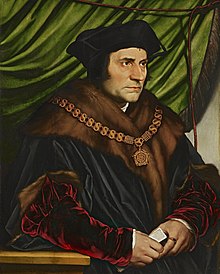 | |
| Lord Chancellor | |
| In office October 1529 – May 1532 | |
| Monarch | Henry VIII |
| Preceded by | Thomas Wolsey |
| Succeeded by | Thomas Audley |
| Chancellor of the Duchy of Lancaster | |
| In office 31 December 1525 – 3 November 1529 | |
| Monarch | Henry VIII |
| Preceded by | Richard Wingfield |
| Succeeded by | William FitzWilliam |
| Speaker of the House of Commons | |
| In office 15 April 1523 – 13 August 1523 | |
| Monarch | Henry VIII |
| Preceded by | Thomas Nevill |
| Succeeded by | Thomas Audley |
| Personal details | |
| Born | 7 February 1478 City of London, England |
| Died | 6 July 1535 (aged 57) Tower Hill, London, England |
| Spouses | |
| Children | Margaret, Elizabeth, Cicely, and John |
| Parent(s) | Sir John More Agnes Graunger |
| Education | University of Oxford Lincoln's Inn |
| Signature |  |
Philosophy career | |
| Notable work | Utopia (1516) Responsio ad Lutherum (1523) A Dialogue of Comfort against Tribulation (1553) |
| Era | Renaissance philosophy 16th-century philosophy |
| Region | Western philosophy, Catholic |
| School | Christian humanism[1] Renaissance humanism |
Main interests | Social philosophy Criticism of Protestantism |
Notable ideas | Utopia |
Influences | |
Influenced | |
Sir Thomas More (7 February 1478 – 6 July 1535), venerated in the Catholic Church as Saint Thomas More,[7][8] was an English lawyer, judge,[9] social philosopher, author, statesman, and noted Renaissance humanist. He also served Henry VIII as Lord High Chancellor of England from October 1529 to May 1532.[10] He wrote Utopia, published in 1516,[11] which describes the political system of an imaginary island state.
More opposed the Protestant Reformation, directing polemics against the theology of Martin Luther, Huldrych Zwingli, John Calvin and William Tyndale. More also opposed Henry VIII's separation from the Catholic Church, refusing to acknowledge Henry as supreme head of the Church of England and the annulment of his marriage to Catherine of Aragon. After refusing to take the Oath of Supremacy, he was convicted of treason and executed. On his execution, he was reported to have said: "I die the King's good servant, and God's first".
Pope Pius XI canonised More in 1935 as a martyr. Pope John Paul II in 2000 declared him the patron saint of statesmen and politicians.[12][13][14]
https://en.wikipedia.org/wiki/Thomas_More
Abraham Fraunce (c. 1558/1560 – c. 1592/1593) was an English poet.
https://en.wikipedia.org/wiki/Abraham_Fraunce
Establishment of playhouses
The first permanent English theatre, the Red Lion, opened in 1567[25] but it was a short-lived failure. The first successful theatres, such as The Theatre, opened in 1576.
The establishment of large and profitable public theatres was an essential enabling factor in the success of English Renaissance drama. Once they were in operation, drama could become a fixed and permanent, rather than transitory, phenomenon. Their construction was prompted when the Mayor and Corporation of London first banned plays in 1572 as a measure against the plague, and then formally expelled all players from the city in 1575.[26] This prompted the construction of permanent playhouses outside the jurisdiction of London, in the liberties of Halliwell/Holywell in Shoreditch and later the Clink, and at Newington Butts near the established entertainment district of St. George's Fields in rural Surrey.[26] The Theatre was constructed in Shoreditch in 1576 by James Burbage with his brother-in-law John Brayne (the owner of the unsuccessful Red Lion playhouse of 1567)[27] and the Newington Butts playhouse was set up, probably by Jerome Savage, some time between 1575[28] and 1577.[29] The Theatre was rapidly followed by the nearby Curtain Theatre (1577), the Rose (1587), the Swan (1595), the Globe (1599), the Fortune (1600), and the Red Bull (1604).[a]
https://en.wikipedia.org/wiki/English_Renaissance_theatre
| Address | Maiden Lane (now Park Street) Southwark[2][3] London England |
|---|---|
| Coordinates | 51°30′24″N 00°5′41″W |
| Owner | Lord Chamberlain's Men |
| Type | Elizabethan theatre |
| Construction | |
| Opened | 1599 |
| Closed | 1642 |
| Demolished | 1644–45 |
| Rebuilt | 1614 |
The Globe Theatre was a theatre in London associated with William Shakespeare. It was built in 1599 at Southwark, close to the south bank of the Thames, by Shakespeare's playing company, the Lord Chamberlain's Men. It was destroyed by fire on 29 June 1613. A second Globe Theatre was built on the same site by June 1614 and stayed open until the London theatre closures of 1642. As well as plays by Shakespeare, early works by Ben Jonson, Thomas Dekker and John Fletcher were first performed here.[4]
A modern reconstruction of the Globe, named "Shakespeare's Globe", opened in 1997 approximately 750 feet (230 m) from the site of the original theatre.[5]
https://en.wikipedia.org/wiki/Globe_Theatre
The Theatre was an Elizabethan playhouse in Shoreditch (in Curtain Road, part of the modern London Borough of Hackney), just outside the City of London. It was the first permanent theatre ever built in England. It was built in 1576 after the Red Lion, and the first successful one. Built by actor-manager James Burbage, near the family home in Holywell Street, The Theatre is considered the first theatre built in London for the sole purpose of theatrical productions. The Theatre's history includes a number of important acting troupes including the Lord Chamberlain's Men, which employed Shakespeare as actor and playwright. After a dispute with the landlord, the theatre was dismantled and the timbers used in the construction of the Globe Theatre on Bankside.
https://en.wikipedia.org/wiki/The_Theatre
| Address | 86 Stepney Way Whitechapel High Street London Borough of Tower Hamlets |
|---|---|
| Coordinates | 51°31′07″N 00°03′25″W |
| Owner | John Brayne |
| Type | Elizabethan playhouse |
| Capacity | standing yard with galleries |
| Construction | |
| Years active | 1567–1568 |
| Architect | William Sylvester and John Reynolds (carpenters) |
The Red Lion was an Elizabethan playhouse located in Whitechapel (part of the modern Borough of Tower Hamlets), just outside the City of London on the east side.
Built in 1567 for John Brayne, citizen and Grocer, this was the first known attempt to provide a purpose-built playhouse in London for the many Tudor age touring theatrical companies - and perhaps the first purpose-built venue known to have been built in the city since Roman times. Its existence was short-lived.[1]
https://en.wikipedia.org/wiki/Red_Lion_(theatre)
 Arms of the Worshipful Company of Grocers: Argent, a chevron gules between nine cloves six in chief and three in base proper. | |
| Motto | God Grant Grace |
|---|---|
| Location | Grocers' Hall, Princes Street, City of London |
| Date of formation | 1345 |
| Company association | Spice merchants |
| Order of precedence | 2nd |
| Master of company | James Thompson |
| Website | www |
The Worshipful Company of Grocers is one of the 110 Livery Companies of the City of London and ranks second in order of precedence. The Grocers' Company was established in 1345 for merchants occupied in the trade of grocer and is one of the Great Twelve City Livery Companies.
https://en.wikipedia.org/wiki/Worshipful_Company_of_Grocers
History
The company was founded in the 14th century by members of the Guild of Pepperers, which dates from 1180.[1] The company was responsible for maintaining standards for the purity of spices and for the setting of certain weights and measures. Its members included the suppliers of medicinal spices and herbs, who separated forming the Worshipful Society of Apothecaries in 1617.
The guild was known as the Company of Grossers from 1373 until 1376 when it was renamed the Company of Grocers of London. In 1428, two years after building its first hall in Old Jewry, the company was granted a Royal Charter by King Henry VI of England.[2] One of the Great Twelve City Livery Companies, it ranks second in the Companies order of precedence after the Mercers' Company. It is said that the Grocers' Company used to be first in the order, until Queen Elizabeth I, as Honorary Master of the Mercers' Company, found herself in procession, after her coronation behind the Grocers' camel which was emitting unfortunate smells; as a result, the Mercers were promoted.
Today, the Grocers' Company exists as a charitable, constitutional and ceremonial institution which plays a significant role in the election of and supporting the Lord Mayor and the Sheriffs of the City of London. The company's motto is "God Grant Grace".[2] The company also provides banqueting and conference facilities at Grocers' Hall situated in Prince's Street, next to the Bank of England.[3][4]
https://en.wikipedia.org/wiki/Worshipful_Company_of_Grocers
This article needs additional citations for verification. (September 2015) |
ORL; Old Red | |
 The Old Red Lion Pub and Theatre, 2007 | |
 |
| Address | St. John Street London, EC1 England |
|---|---|
| Coordinates | 51.5314°N 0.1062°W |
| Public transit | |
| Type | Fringe theatre |
| Capacity | 60 |
| Production | Country Life |
| Opened | 1979 |
| Years active | 32 |
| Website | |
| oldredliontheatre.co.uk | |
The Old Red Lion is a pub and fringe theatre, at Angel, in the London Borough of Islington.
The theatre was founded in 1979 as the Old Red Lion Theatre Club. The pub was Grade II listed in 1994 by Historic England.[1]
History
Construction
The pub in itself is one of the oldest in London, having first been built in 1415 in what was then the rural village of Islington in open countryside and fields. A house called Goose Farm and some nearby cattle pens (for herds being driven to Smithfield Market) were the only structures to adjoin it, and St John Street (then called Chester Road) was a country lane.
18th century
In the late 18th century Chester Road became notorious for highwaymen, with patrols being provided to protect those travelling along it at night. At this time descriptions state that the Old Red Lion was a small brick house with three trees in its forecourt, visited by William Hogarth (who portrayed it in the middle distance of his painting "Evening", with the foreground being Sadler's Wells), Samuel Johnson and Thomas Paine (who wrote The Rights of Man in the shade of the trees in its forecourt).
Reconstruction
The Old Red Lion was rebuilt in 1899, designed by Eedle and Myers,[1] adding two exits onto different streets. This gave the pub the nickname "the In and Out", since taxi passengers could avoid paying their fare by entering it through one door and disappearing through the other.
Theatre
In 1979 a small studio theatre opened on the pub's first floor, as the Old Red Lion Theatre Club. Under artistic director Charlie Hanson, it became a place for actors, directors, designers, writers and technicians to experiment. After the King's Cross fire in 1987, the theatre was threatened with closure due to the tightening of fire regulations. Artistic Director Ken McClymont raised funds to keep the theatre from closing.
Notable past productions
Nina Raine, winner of the 2006 Most Promising Playwright Award, staged her first show, Rabbit, at the Old Red Lion Theatre in March to April 2006.[2] Who is Eddie Linden, a play based upon Sebastian Barker's biography of poet and editor Eddie Linden, was staged in 1995.[3]
Today
It is the main pub for the Capital Canaries, the official London fan club for Norwich City F.C.
Literary department
The literary department reads over 1,000 scripts each year, under an open submissions policy.
Artistic directors
- Charlie Hanson (1979–1981)
- Jane Goldman (1981–82)
- Mike Gilmore (1982-74)
- Richard Hansom (1984–88)
- Ken McClymont (1988–2002)
- Melanie Tait (2002–2004)
- Helen Devine (2004–2010)
- Henry Filloux-Bennett (Artistic Director 2010-2011) (Co-Artistic Director) (2011–2012)
- Nicholas Thompson (Co-Artistic Director) (2011–2012) (Artistic Director 2012-2014)
- Stewart Pringle (Artistic Director) (2014–2016)
- Clive Judd (Artistic Director) (2016-2017)
- Katy Danbury (Artistic Director & Theatre Manager) (2017–2019)
- Alexander Knott (Artistic Director) (2019–present)[4]
Awards
Old Red Lion Theatre won the Dan Crawford Pub Theatre Award for 2006.[5]
References
- "The Empty SPACE...Peter Brook AWARDs". blanche marvin's london theatreviews. Archived from the original on 3 October 2011.
External links
https://en.wikipedia.org/wiki/The_Old_Red_Lion,_Islington
The City of London Corporation, officially and legally the Mayor and Commonalty and Citizens of the City of London, is the municipal governing body of the City of London, the historic centre of London and the location of much of the United Kingdom's financial sector.
In 2006, the name was changed from Corporation of London as the corporate body needed to be distinguished from the geographical area to avoid confusion with the wider London local government, the Greater London Authority.[4]
Both businesses and residents of the City, or "Square Mile", are entitled to vote in City elections, and in addition to its functions as the local authority—analogous to those undertaken by the 32 boroughs that administer the rest of the Greater London region—it takes responsibility for supporting the financial services industry and representing its interests.[5] The corporation's structure includes the Lord Mayor, the Court of Aldermen, the Court of Common Council, and the Freemen and Livery of the City. The "Liberties and Customs" of the City of London are guaranteed in Magna Carta's clause 13, which remains in statute.[6]
https://en.wikipedia.org/wiki/City_of_London_Corporation
Playhouse architecture
Archaeological excavations on the foundations of the Rose and the Globe in the late 20th century showed that all the London theatres had individual differences, but their common function necessitated a similar general plan.[30] The public theatres were three stories high and built around an open space at the centre. Usually polygonal in plan to give an overall rounded effect, although the Red Bull and the first Fortune were square. The three levels of inward-facing galleries overlooked the open centre, into which jutted the stage: essentially a platform surrounded on three sides by the audience. The rear side was restricted for the entrances and exits of the actors and seating for the musicians. The upper level behind the stage could be used as a balcony, as in Romeo and Juliet and Antony and Cleopatra, or as a position from which an actor could harangue a crowd, as in Julius Caesar.[31] The pit was the place where the poorest audience members could view the show. Around the 1600s a new area was introduced into the theaters, a 'gullet'. A gullet was an invisible corridor that the actors used to go to the wings of the stage where people usually changed clothes quickly[citation needed].
The playhouses were generally built with timber and plaster. Individual theatre descriptions give additional information about their construction, such as flint stones being used to build the Swan. Theatres were also constructed to be able to hold a large number of people.[32]
A different model was developed with the Blackfriars Theatre, which came into regular use on a long-term basis in 1599.[b] The Blackfriars was small in comparison to the earlier theatres and roofed rather than open to the sky. It resembled a modern theatre in ways that its predecessors did not. Other small enclosed theatres followed, notably the Whitefriars (1608) and the Cockpit (1617). With the building of the Salisbury Court Theatre in 1629 near the site of the defunct Whitefriars, the London audience had six theatres to choose from: three surviving large open-air public theatres—the Globe, the Fortune, and the Red Bull—and three smaller enclosed private theatres: the Blackfriars, the Cockpit, and the Salisbury Court.[c] Audiences of the 1630s benefited from a half-century of vigorous dramaturgical development; the plays of Marlowe and Shakespeare and their contemporaries were still being performed on a regular basis, mostly at the public theatres, while the newest works of the newest playwrights were abundant as well, mainly at the private theatres.[citation needed]
https://en.wikipedia.org/wiki/English_Renaissance_theatre
Commercial theaters were largely located just outside the boundaries of the City of London, since City authorities tended to be wary of the adult playing companies, but plays were performed by touring companies all over England.[35] English companies even toured and performed English plays abroad, especially in Germany and in Denmark.[36][d]
https://en.wikipedia.org/wiki/English_Renaissance_theatre
| Romeo and Juliet | |
|---|---|
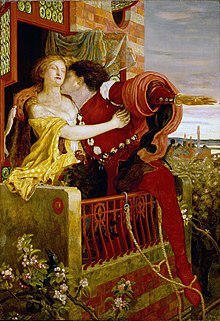 An 1870 oil painting by Ford Madox Brown depicting the play's balcony scene | |
| Written by | William Shakespeare |
| Characters | |
| Date premiered | 1597[a] |
| Original language | English |
| Series | First Quarto |
| Subject | Love |
| Genre | Shakespearean tragedy |
| Setting | Italy (Verona and Mantua) |
Romeo and Juliet is a tragedy written by William Shakespeare early in his career about the romance between two Italian youths from feuding families. It was among Shakespeare's most popular plays during his lifetime and, along with Hamlet, is one of his most frequently performed plays. Today, the title characters are regarded as archetypal young lovers.
https://en.wikipedia.org/wiki/Romeo_and_Juliet
Dramaturgy is the study of dramatic composition and the representation of the main elements of drama on the stage.
The term first appears in the eponymous work Hamburg Dramaturgy (1767–69) by Gotthold Ephraim Lessing. Lessing composed this collection of essays on the principles of drama while working as the world's first dramaturge at the Hamburg National Theatre. Dramaturgy is distinct from play writing and directing, although the three may be practiced by one individual.[1] Some dramatists combine writing and dramaturgy when creating a drama. Others work with a specialist, called a dramaturge, to adapt a work for the stage.
Dramaturgy may also be broadly defined as "adapting a story to actable form." Dramaturgy gives a performance work foundation and structure. Often the dramaturge's strategy is to manipulate a narrative to reflect the current Zeitgeist through cross-cultural signs, theater- and film-historical references to genre, ideology, questions of gender and racial representation, etc., in the dramatization.
https://en.wikipedia.org/wiki/Dramaturgy
Performances
The acting companies functioned on a repertory system: unlike modern productions that can run for months or years on end, the troupes of this era rarely acted the same play two days in a row.[39] Thomas Middleton's A Game at Chess ran for nine straight performances in August 1624 before it was closed by the authorities; but this was due to the political content of the play and was a unique, unprecedented and unrepeatable phenomenon. The 1592 season of Lord Strange's Men at the Rose Theatre was far more representative: between 19 February and 23 June the company played six days a week, minus Good Friday and two other days. They performed 23 different plays, some only once, and their most popular play of the season, The First Part of Hieronimo, based on Kyd's The Spanish Tragedy, 15 times. They never played the same play two days in a row, and rarely the same play twice in a week.[40][e] The workload on the actors, especially the leading performers like Richard Burbage or Edward Alleyn, must have been tremendous.
One distinctive feature of the companies was that they included only males. Female parts were played by adolescent boy players in women's costume. Some companies were composed entirely of boy players.[f] Performances in the public theatres (like the Globe) took place in the afternoon with no artificial lighting, but when, in the course of a play, the light began to fade, candles were lit.[43] In the enclosed private theatres (like the Blackfriars) artificial lighting was used throughout. Plays contained little to no scenery as the scenery was described by the actors or indicated by costume through the course of the play.[44]
In the Elizabethan era, research has been conclusive about how many actors and troupes there were in the 16th century, but little research delves into the roles of the actors on the English renaissance stage. The first point is that during the Elizabethan era, women were not allowed to act on stage. The actors were all male; in fact, most were boys. For plays written that had male and female parts, the female parts were played by the youngest boy players.[45] Stronger female roles in tragedies were acted by older boy players because they had more experience. [45] As a boy player, many skills had to be implemented such as voice and athleticism (fencing was one).[45]
In Elizabethan entertainment, troupes were created and they were considered the actor companies. They travelled around England as drama was the most entertaining art at the time.
Elizabethan actors never played the same show on successive days and added a new play to their repertoire every other week. These actors were getting paid within these troupes so for their job, they would constantly learn new plays as they toured different cities in England. In these plays, there were bookkeepers that acted as the narrators of these plays and they would introduce the actors and the different roles they played. At some points, the bookkeeper would not state the narrative of the scene, so the audience could find out for themselves. In Elizabethan and Jacobean plays, the plays often exceeded the number of characters/roles and did not have enough actors to fulfil them, thus the idea of doubling roles came to be.[46] Doubling roles is used to reinforce a plays theme by having the actor act out the different roles simultaneously.[47] The reason for this was for the acting companies to control salary costs, or to be able to perform under conditions where resources such as other actor companies lending actors were not present.[47]
There were two acting styles implemented: formal and natural. Formal acting is objective and traditional, while natural acting attempts to create an illusion for the audience by remaining in character and imitating the fictional circumstances. The formal actor symbolises while the natural actor interprets. The natural actor impersonates while the formal actor represents the role. Natural and formal are opposites of each other, where natural acting is subjective. Overall, the use of these acting styles and the doubled roles dramatic device made Elizabethan plays very popular.[48]
https://en.wikipedia.org/wiki/English_Renaissance_theatre
United Kingdom
Annie Horniman founded the first modern repertory theatre in Manchester after withdrawing her support from the Abbey Theatre in Dublin. Horniman's Gaiety Theatre opened its first season in September of 1908.[4] The opening of the Gaiety was followed by the Citizens' Theatre in Glasgow and the Liverpool Repertory Theatre.[4] Previously, regional theatre relied on mostly London touring ensembles.[5][6] During the time the theatre was being run by Annie Horniman, a wide variety of types of plays were produced. Horniman encouraged local writers who became known as the Manchester School of playwrights. They included Allan Monkhouse, Harold Brighouse, writer of Hobson's Choice, and Stanley Houghton, who wrote Hindle Wakes. Actors who performed at the Gaiety early in their careers included Sybil Thorndike and Basil Dean.[7]
From the 1940s to the 1960s, two impresarios dominated the field of British rep, mostly in the North. They were Harry Hanson and his Court players, and Frank H. Fortescue's Famous Players, with the Arthur Brough Players in Folkestone in the South. When an actor joined one of their companies, it could mean "twice-nightly" shows, and a new play to learn every week. Actress Rosemary Harris has told of her 50 consecutive weeks of doing that at Bedford rep. However, this is no longer possible, owing to restrictions from British Equity, which came to mandate just eight shows a week, including perhaps two matinées.
The practice of repertory ("rep") is still seen in large cities. Actors now have the luxury of at least three weeks of rehearsal, however. Repertory can still be found in the UK in a variation of guises: in Sidmouth (12 plays), Wolverhampton (eight), and Burslem and Taunton (four each). The Sheringham Little Theatre produces an in-house repertory season each summer, running from June until September. Weekly repertory theatre is also produced by the Summer Theatre season at Frinton-on-Sea.
Canada
Organizations in Canada include North America's largest classical repertory theatre company, the Stratford Festival,[8] founded in 1953 primarily to present productions of William Shakespeare's plays. Canada also hosts North America's second largest repertory theatre company, the Shaw Festival, founded in 1962, which presents plays written by or set during the lifetime of Bernard Shaw, or that follow Shaw's ideal of socially provocative theatre. However, Canadian repertory companies follow a model that differs somewhat from the years-long rotation repertory system found in Europe.[citation needed] In Canada, productions often stay on the repertory for one season, running in repertory with other productions in the same year.[citation needed] The actors are not employed full time long term, but instead work on contracts usually maximum 8 months long.[citation needed]
The Vagabond Repertory Theatre Company was formed in March 2009 by artistic directors Nathaniel Fried and Ryan LaPlante, and currently resides and performs in Kingston, Ontario. It shuttered in 2019. The old English-style repertory theatres such as Ottawa's CRT (Canadian Repertory Theatre) and Toronto's Crest Theatre no longer exist—although they did have a version of summer theatre in smaller holiday districts, such as the "Straw Hat" players of Gravenhurst and Port Carling at Ontario's vacation Muskoka Lakes area.
State-subsidized theatres on continental Europe have been suggested as the origin of the repertoire tradition.[4] One of the earliest examples of this system is the Moscow Art Theatre circa 1898.[9] An even earlier example are the theatres of Germany. [4] See The Deutsches Theatre, a privately owned German theatre founded in 1883 to produce plays in rep. [10] While variations appeared before, the modern repertory system did not become popular until the twentieth century.[5]
United States
In the United States, the repertory system has also found a base to compete with commercial theatre. Many summer stock theatre companies are repertory in nature. College students and young professionals making up much of the acting company supported by guest stars or actors further in their careers.[11]
Repertory theatre with mostly changing casts and longer-running plays, perhaps better classed as "provincial" or "non-profit" theatre, has made a big comeback in cities such as Little Rock, AR, Washington, DC, Minneapolis, Indianapolis, Milwaukee, Cincinnati, Chicago, Los Angeles, Nashville, New York, Houston, Boston, San Francisco, San Diego, Buffalo, Kansas City, and Seattle. Festival theatre now provides actors with work in the summer. There are many ways to rehearse repertory theatre. The most prolific American repertory theatres are an example of that. Utah Shakespeare Festival rehearses two plays a day split between an eight hour period.[12] This is common. Some theatres only rehearse one play a day and add shows into rotation as the season progresses, like The American Shakespeare Center.[12] They rehearse one play for a little over two weeks before it opens; then, they begin the next one.[12] The length of rehearsal also varies. American Players Theatre has a six-week-long rehearsal period compared to Oregon Shakespeare Festival's eleven-week-long one.[12]
America's oldest resident repertory theatre, Hedgerow Theatre, is located in Rose Valley, Pennsylvania. It was founded by actor Jasper Deeter in 1923. The present producing artistic director is actress and director Penelope Reed. Other notable repertory theatres include the Guthrie Theater, which was set up as a regional repertory theatre concept that is free from commercial constraints in the choice of repertoire.[13] It is aligned in objectives to the repertory and resident theatre movement that emerged in the United States in the 1960s. This sought to establish an alternative and decentralized theatre network outside of New York, one which would have non-profit-making status and would be focused on the art of the theatre as well as the development of artists, craftsmen, and administrators.[14] Publicly funded theatres that belong to this type have been receiving erratic support since the 1980s.
The Association of Producing Artists (APA) was one of the most successful repertory theatres in the United States, touring for four years and holding residencies in several cities before finally joining the Phoenix Theatre in New York City, where it was known for staging plays with modest prices.[15] Currently, the American Repertory Theatre is considered one of the most distinguished repertory theatres in the United States. Since its foundation in 1979, it has earned several awards including a Pulitzer Prize (1982), a Tony Award (1986), and a Jujamcyn Award (1985).[16]
Eastern Europe
In Russia and much of Eastern Europe, repertory theatre is based on the idea that each company maintains a number of productions that are performed on a rotating basis. Each production's life span is determined by its success with the audience. However, many productions remain in repertory for years as this approach presents each piece a few times in a given season, not enough to exhaust the potential audience pool. After the fall of the Soviet regime and the substantial diminution of government subsidy, the repertory practice has required re-examination. Moscow Art Theatre and Lev Dodin's Maly Drama Theatre of St. Petersburg are the world's most notable practitioners of this approach.
Rotation Repertory system is still the most commonly used business model of live theatre in Eastern and Central Europe, specifically in countries such as Austria, Serbia, Croatia, Slovenia, Slovakia and Czech Republic.
In Germany, Schaubuhne and some other theatres run on a repertory system.
Weekly rep
A combination company was a touring theater company which performed only one play. Unlike repertory companies, which performed multiple plays in rotation, combination companies used more elaborate and specialised scenery in their productions.
A similar term, "weekly rep," denotes a British movement started in the early 1900s that focused on shorter runs of a single new work, rather than having several plays ready to perform at any given time.[17][3]
For weekly rep and for a typical three-act play, the actors' week would start on Tuesday, and go as follows:
- Tuesday: notes on previous night's opening of the current play from the director, then a sit-down read-through of the next week's play with some discussion by the director, on-the-feet blocking of the moves for Act I, with a few questions from the actors, followed by the second performance of the current play (which would also occupy every evening up to and including Saturday).
- Wednesday: run Act I of next week's play and start to block Act II, but break early because there would be a matinée of the current play.
- Thursday: finish blocking Act II of next week's play, run Act II and block Act III.
- Friday: run Act III, run through the entire play with no scripts in hand, and technicals – meaning lights and sound – to watch, and write down cues.
- Saturday: run through again, stop and go to test lighting and sound cues; costumes may be used if ready. Two shows today, including a matinée; the evening show closes the current play. After the last show, the set would be struck (taken down) by the crew - usually apprentices – and the stage manager.
- Sunday: for actors, an opportunity to brush up on lines and moves, and for private rehearsals. However, for the crew it would mean putting up the new sets, hanging and focusing lights, and setting sound equipment.
- Monday: in the morning, a run-through, usually without costumes (to save wear and tear), mainly for the technicals. In the afternoon: a "Full Perfect" dress rehearsal, maybe with a few friends seated in front to gauge reaction, then copious notes. In the evening, 8 o'clock opening night, followed by notes from the director, visits with friends from the audience and maybe a party nearby. The process would start all over again on Tuesday.
Resident company
Today, repertory theatres employ a wide range of actors, who can play a variety of types.
Before the modern repertory system, acting ensembles were normally made up of the standard stock company and later the touring company.[5] The stock company would usually consist of a leading man and lady, a character actor and actress, younger actors to play romantic roles, and the rest of the actors would be a variety of ages and body types.[5] The acting ensemble was typically around twelve.[5] This was most popular prior to the Restoration.[5] Post Restoration and into the nineteenth century, stock companies remained, but they were joined and then replaced by traveling companies.[5] These ensembles consisted of the stars and actors hired to play a very specific role as a single production toured around.[5]
Examples of rep performers who went on to become well-known are John Gielgud, Ralph Richardson, Laurence Olivier, Rosemary Harris, Christopher Plummer, Harold Pinter, Peter O'Toole, Jeremy Brett, Geraldine McEwan, Vanessa Redgrave, Judi Dench, Ian McKellen, Michael Gambon, Imelda Staunton and Patrick Stewart. Dirk Bogarde wrote about his start at Amersham rep in 1939, and Michael Caine has recounted his time spent at Horsham rep in the early 1950s.
There are many noted Resident companies or repertory companies, such as the Artists Repertory Theatre.
See also
- Combination company
- Community theatre
- Fringe theatre
- Mercury Theatre
- Summer stock theatre
- Stagione
- Theatre festival
- Theatre (structure) (i.e. building)
Footnotes
- Pallardy, Richard. "Repertory theatre". Brittanica. Retrieved 26 September 2019.
Murray, Stephen. Taking Our Amusements Seriously. LAP, 2010. ISBN 978-3-8383-7608-0.
External links
https://en.wikipedia.org/wiki/Repertory_theatre
Costumes
One of the main uses of costume during the Elizabethan era was to make up for the lack of scenery, set, and props on stage. It created a visual effect for the audience, and it was an integral part of the overall performance.[49] Since the main visual appeal on stage were the costumes, they were often bright in colour and visually entrancing. Colours symbolized social hierarchy, and costumes were made to reflect that. For example, if a character was royalty, their costume would include purple. The colours, as well as the different fabrics of the costumes, allowed the audience to know the status of each character when they first appeared on stage.[50]
Costumes were collected in inventory. More often than not, costumes wouldn't be made individually to fit the actor. Instead, they would be selected out of the stock that theatre companies would keep. A theatre company reused costumes when possible and would rarely get new costumes made. Costumes themselves were expensive, so usually players wore contemporary clothing regardless of the time period of the play. The most expensive pieces were given to higher class characters because costuming was used to identify social status on stage. The fabrics within a playhouse would indicate the wealth of the company itself. The fabrics used the most were: velvet, satin, silk, cloth-of-gold, lace and ermine.[51] For less significant characters, actors would use their own clothes.
Actors also left clothes in their will for following actors to use. Masters would also leave clothes for servants in their will, but servants weren't allowed to wear fancy clothing, instead, they sold the clothes back to theatre companies.[50] In the Tudor and Elizabethan eras, there were laws stating that certain classes could only wear clothing fitting of their status in society. There was a discrimination of status within the classes. Higher classes flaunted their wealth and power through the appearance of clothing, however, courtesans and actors were the only exceptions – as clothing represented their 'working capital', as it were, but they were only permitted to dress so while working. If actors belonged to a licensed acting company, they were allowed to dress above their standing in society for specific roles in a production.[52]
https://en.wikipedia.org/wiki/English_Renaissance_theatre
Playwrights
The growing population of London, the growing wealth of its people, and their fondness for spectacle produced a dramatic literature of remarkable variety, quality and extent. Although most of the plays written for the Elizabethan stage have been lost, over 600 remain.
The people who wrote these plays were primarily self-made men from modest backgrounds.[g] Some of them were educated at either Oxford or Cambridge, but many were not. Although William Shakespeare and Ben Jonson were actors, the majority do not seem to have been performers, and no major author who came on to the scene after 1600 is known to have supplemented his income by acting. Their lives were subject to the same levels of danger and earlier mortality as all who lived during the early modern period: Christopher Marlowe was killed in an apparent tavern brawl, while Ben Jonson killed an actor in a duel. Several were probably soldiers.
Playwrights were normally paid in increments during the writing process, and if their play was accepted, they would also receive the proceeds from one day's performance. However, they had no ownership of the plays they wrote. Once a play was sold to a company, the company owned it, and the playwright had no control over casting, performance, revision or publication.
The profession of dramatist was challenging and far from lucrative.[54] Entries in Philip Henslowe's Diary show that in the years around 1600 Henslowe paid as little as £6 or £7 per play. This was probably at the low end of the range, though even the best writers could not demand too much more. A playwright, working alone, could generally produce two plays a year at most. In the 1630s Richard Brome signed a contract with the Salisbury Court Theatre to supply three plays a year, but found himself unable to meet the workload. Shakespeare produced fewer than 40 solo plays in a career that spanned more than two decades: he was financially successful because he was an actor and, most importantly, a shareholder in the company for which he acted and in the theatres they used. Ben Jonson achieved success as a purveyor of Court masques, and was talented at playing the patronage game that was an important part of the social and economic life of the era. Those who were purely playwrights fared far less well: the biographies of early figures like George Peele and Robert Greene, and later ones like Brome and Philip Massinger, are marked by financial uncertainty, struggle and poverty.
Playwrights dealt with the natural limitation on their productivity by combining into teams of two, three, four, and even five to generate play texts. The majority of plays written in this era were collaborations, and the solo artists who generally eschewed collaborative efforts, like Jonson and Shakespeare, were the exceptions to the rule. Dividing the work, of course, meant dividing the income; but the arrangement seems to have functioned well enough to have made it worthwhile. Of the 70-plus known works in the canon of Thomas Dekker, roughly 50 are collaborations. In a single year (1598) Dekker worked on 16 collaborations for impresario Philip Henslowe, and earned £30, or a little under 12 shillings per week—roughly twice as much as the average artisan's income of 1s. per day.[55] At the end of his career, Thomas Heywood would famously claim to have had "an entire hand, or at least a main finger" in the authorship of some 220 plays. A solo artist usually needed months to write a play (though Jonson is said to have done Volpone in five weeks); Henslowe's Diary indicates that a team of four or five writers could produce a play in as little as two weeks. Admittedly, though, the Diary also shows that teams of Henslowe's house dramatists—Anthony Munday, Robert Wilson, Richard Hathwaye, Henry Chettle, and the others, even including a young John Webster—could start a project, and accept advances on it, yet fail to produce anything stageworthy.[56]
https://en.wikipedia.org/wiki/English_Renaissance_theatre
| Volpone | |
|---|---|
 Poster for a 1939 production, part of the Federal Theatre Project | |
| Written by | Ben Jonson |
| Date premiered | Spring 1606 |
| Place premiered | Globe Theatre, London |
| Original language | Early Modern English |
| Subject | greed, lust |
| Genre | comedy, city comedy |
| Setting | Venice, Renaissance period |
Volpone ([volˈpoːne], Italian for "sly fox") is a comedy play by English playwright Ben Jonson first produced in 1605–1606, drawing on elements of city comedy and beast fable. A merciless satire of greed and lust, it remains Jonson's most-performed play, and it is ranked among the finest Jacobean era comedies.
https://en.wikipedia.org/wiki/Volpone
Genres
Genres of the period included the history play, which depicted English or European history. Shakespeare's plays about the lives of kings, such as Richard III and Henry V, belong to this category, as do Christopher Marlowe's Edward II and George Peele's Famous Chronicle of King Edward the First. History plays also dealt with more recent events, like A Larum for London which dramatizes the sack of Antwerp in 1576. A better known play, Peele's The Battle of Alcazar (c. 1591), depicts the battle of Alcácer Quibir in 1578.
Tragedy was a very popular genre. Marlowe's tragedies were exceptionally successful, such as Dr. Faustus and The Jew of Malta. The audiences particularly liked revenge dramas, such as Thomas Kyd's The Spanish Tragedy. The four tragedies considered to be Shakespeare's greatest (Hamlet, Othello, King Lear and Macbeth) were composed during this period.
Comedies were common, too. A subgenre developed in this period was the city comedy, which deals satirically with life in London after the fashion of Roman New Comedy. Examples are Thomas Dekker's The Shoemaker's Holiday and Thomas Middleton's A Chaste Maid in Cheapside.
Though marginalised, the older genres like pastoral (The Faithful Shepherdess, 1608), and even the morality play (Four Plays in One, ca. 1608–13) could exert influences. After about 1610, the new hybrid subgenre of the tragicomedy enjoyed an efflorescence, as did the masque throughout the reigns of the first two Stuart kings, James I and Charles I.
Plays on biblical themes were common, Peele's David and Bethsabe being one of the few surviving examples.
https://en.wikipedia.org/wiki/English_Renaissance_theatre
History is one of the three main genres in Western theatre alongside tragedy and comedy, although it originated, in its modern form, thousands of years later than the other primary genres.[1] For this reason, it is often treated as a subset of tragedy.[2] A play in this genre is known as a history play and is based on a historical narrative, often set in the medieval or early modern past. History emerged as a distinct genre from tragedy in Renaissance England.[3] The best known examples of the genre are the history plays written by William Shakespeare, whose plays still serve to define the genre. History plays also appear elsewhere in British and Western literature, such as Thomas Heywood's Edward IV, Schiller's Mary Stuart or the Dutch play Gijsbrecht van Aemstel.
https://en.wikipedia.org/wiki/History_(theatrical_genre)
Richard III is a play by William Shakespeare. It was probably written c. 1592–1594. It is labelled a history in the First Folio, and is usually considered one, but it is sometimes called a tragedy, as in the quarto edition. Richard III concludes Shakespeare's first tetralogy (also containing Henry VI, Part 1, Henry VI, Part 2, and Henry VI, Part 3) and depicts the Machiavellian rise to power and subsequent short reign of King Richard III of England.[1]
It is the second longest play in the Shakespearean canon and is the longest of the First Folio, whose version of Hamlet, otherwise the longest, is shorter than its quarto counterpart. The play is often abridged for brevity, and peripheral characters removed. In such cases, extra lines are often invented or added from elsewhere to establish the nature of the characters' relationships. A further reason for abridgment is that Shakespeare assumed his audiences' familiarity with his Henry VI plays, frequently referring to these plays.[2]
https://en.wikipedia.org/wiki/Richard_III_(play)
The Shoemaker's Holiday or the Gentle Craft is an Elizabethan play written by Thomas Dekker. The play was first performed in 1599 by the Admiral's Men, and it falls into the subgenre of city comedy. The story features three subplots: an inter-class romance between a citizen of London and an aristocrat, the ascension of shoemaker Simon Eyre to Lord Mayor of London, and a romance between a gentleman and a shoemaker's wife, whose husband appears to have died in the wars with France.
The play is a "citizen" drama, or a depiction of the life of members of London's livery companies, and it follows in Dekker's style of depicting everyday life in London.[1][2] The events of the play occur during the reign of King Henry VI, though also hinting at the reign of Henry V. Henry V succeeded his father, Henry IV, as leader of England following Henry IV's death in 1413 at the age of 26.[3] He is best known for securing the French crown and for his depiction in Shakespeare's plays Henry IV, Part 1, Henry IV, Part 2, and Henry V. Dekker uses this correlation in The Shoemaker's Holiday, as an English king appears in scenes 19 and 21; however, he is only identified as "The King" in the speech prefix in the first printed edition of the play.[4][5]
https://en.wikipedia.org/wiki/The_Shoemaker%27s_Holiday
A Chaste Maid in Cheapside is a city comedy written c. 1613 by the English Renaissance playwright Thomas Middleton. Unpublished until 1630, and long-neglected afterwards, it is now considered among the best and most characteristic Jacobean comedies.
The play was originally staged by the Lady Elizabeth's Men.[1] The 1630 quarto was published by the bookseller Francis Constable.
https://en.wikipedia.org/wiki/A_Chaste_Maid_in_Cheapside
The Faithful Shepherdess is a Jacobean era stage play, the work that inaugurated the playwriting career of John Fletcher.[1] Though the initial production was a failure with its audience, the printed text that followed proved significant, in that it contained Fletcher's influential definition of tragicomedy. Like many of Fletcher's later tragicomedies, The Faithful Shepherdess deals with the darker side of sexuality and sexual jealousy, albeit within a comic framework.[2]
https://en.wikipedia.org/wiki/The_Faithful_Shepherdess
English literature is literature written in the English language from the United Kingdom, its Crown Dependencies and Overseas Territories, the Republic of Ireland, the United States, and the countries of the former British Empire.[1][note 1] The English language has developed over the course of more than 1,400 years.[2] The earliest forms of English, a set of Anglo-Frisian dialects brought to Great Britain by Anglo-Saxon invaders in the fifth century, are called Old English. Beowulf is the most famous work in Old English, and has achieved national epic status in England, despite being set in Scandinavia. However, following the Norman conquest of England in 1066, the written form of the Anglo-Saxon language became less common. Under the influence of the new aristocracy, French became the standard language of courts, parliament, and polite society.[3] The English spoken after the Normans came is known as Middle English. This form of English lasted until the 1470s, when the Chancery Standard (late Middle English), a London-based form of English, became widespread. Geoffrey Chaucer (1343 – 1400), author of The Canterbury Tales, was a significant figure in the development of the legitimacy of vernacular Middle English at a time when the dominant literary languages in England were still French and Latin. The invention of the printing press by Johannes Gutenberg in 1439 also helped to standardise the language, as did the King James Bible (1611),[4] and the Great Vowel Shift.[5]
Poet and playwright William Shakespeare (1564 – 1616) is widely regarded as the greatest writer in the English language and one of the world's greatest dramatists.[6][7][8] His plays have been translated into every major living language and are performed more often than those of any other playwright.[9] In the nineteenth century Sir Walter Scott's historical romances inspired a generation of painters, composers, and writers throughout Europe.[10]
The English language spread throughout the world with the development of the British Empire between the late 16th and early 18th centuries. At its height, it was the largest empire in history.[11] By 1913, the British Empire held sway over 412 million people, 23% of the world population at the time,[12] During the nineteenth and twentieth centuries these colonies and the USA started to produce their own significant literary traditions in English. Cumulatively, over the period of 1907 to the present, numerous writers from Great Britain, both the Republic of Ireland and Northern Ireland, the US, and former British colonies have received the Nobel Prize for works in the English language, more than in any other language.
https://en.wikipedia.org/wiki/English_literature#Jacobean_literature
Four Plays, or Moral Representations, in One is a Jacobean era stage play, one of the dramatic works in the canon of John Fletcher and his collaborators. Initially published in the first Beaumont and Fletcher folio of 1647, the play is notable both for its unusual form and for the question of its authorship.
https://en.wikipedia.org/wiki/Four_Plays_in_One
The Love of King David and Fair Bethsabe is a play by George Peele, based on the biblical story of David, Bathsheba, and Absalom in 2 Samuel. Probably written in the early 1590s, it was entered into the Stationers' Register on 14 May 1594 and published in 1599, after Peele's death, by the printer Adam Islip.[1] The 1599 quarto is problematic in many respects: inconsistencies and internal contradictions, as well as one obviously misplaced fragment of a scene, have led some scholars to conclude that it is a shortened and revised version of an originally longer work.[2]
The full title of the play, as it appears on the title page of the 1599 quarto, is The Love of King David and Fair Bethsabe, with the Tragedie of Absalon, and in its surviving form David's relationship with his sons, Absalom in particular, is the main focus of attention, rather than relationship between David and Bathsheba.[3] Peele follows the narrative in the book of Samuel closely, but it was not his only source: he also imitated and adapted a number of passages from the Semaines of the French religious poet Guillaume Du Bartas (1544–1590).[4]
Although few examples survive today, plays based on stories from the Bible were not uncommon in the English Renaissance theatre. Over a dozen are known to have been produced between 1588 and 1602 alone, from titles and production details preserved in sources such as the Stationers' Register and the diary of Philip Henslowe.[5] Unlike late mediaeval mystery and morality plays, which used biblical material in very different ways, most of the lost biblical plays of the late 16th century focused on the soldier kings and prophets of the Old Testament, and reflect the political interests and theatrical conventions of other Elizabethan historical dramas.[6]
https://en.wikipedia.org/wiki/David_and_Bethsabe
Printed texts
Only a minority of the plays of English Renaissance theatre were ever printed. Of Heywood's 220 plays, only about 20 were published in book form.[57] A little over 600 plays were published in the period as a whole, most commonly in individual quarto editions. (Larger collected editions, like those of Shakespeare's, Ben Jonson's, and Beaumont and Fletcher's plays, were a late and limited development.) Through much of the modern era, it was thought that play texts were popular items among Renaissance readers that provided healthy profits for the stationers who printed and sold them. By the turn of the 21st century, the climate of scholarly opinion shifted somewhat on this belief: some contemporary researchers argue that publishing plays was a risky and marginal business[58]—though this conclusion has been disputed by others.[59] Some of the most successful publishers of the English Renaissance, like William Ponsonby or Edward Blount, rarely published plays.
A small number of plays from the era survived not in printed texts but in manuscript form.[h]
https://en.wikipedia.org/wiki/English_Renaissance_theatre
A manuscript (abbreviated MS for singular and MSS for plural) was, traditionally, any document written by hand or typewritten, as opposed to mechanically printed or reproduced in some indirect or automated way.[1] More recently, the term has come to be understood to further include any written, typed, or word-processed copy of an author's work, as distinguished from the rendition as a printed version of the same.[2]
Before the arrival of prints, all documents and books were manuscripts. Manuscripts are not defined by their contents, which may combine writing with mathematical calculations, maps, music notation, explanatory figures, or illustrations.
https://en.wikipedia.org/wiki/Manuscript
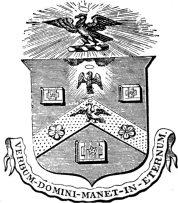 | |
| Motto | Verbum Domini Manet in Aeternum |
|---|---|
| Location | Stationers' Hall, London |
| Date of formation | 1403 |
| Company association | Printing and publishing |
| Order of precedence | 47th |
| Master of company | Moira Sleight |
| Website | stationers |
The Worshipful Company of Stationers and Newspaper Makers (until 1937 the Worshipful Company of Stationers), usually known as the Stationers' Company, is one of the livery companies of the City of London. The Stationers' Company was formed in 1403; it received a royal charter in 1557. It held a monopoly over the publishing industry and was officially responsible for setting and enforcing regulations until the enactment of the Statute of Anne, also known as the Copyright Act of 1710. Once the company received its charter, "the company’s role was to regulate and discipline the industry, define proper conduct and maintain its own corporate privileges."[1]
The company members, including master, wardens, assistants, liverymen, freemen and apprentices are mostly involved with the modern visual and graphic communications industries that have evolved from the company's original trades. These include printing, papermaking, packaging, office products, engineering, advertising, design, photography, film and video production, publishing of books, newspapers and periodicals and digital media. The company's principal purpose nowadays is to provide an independent forum where its members can advance the interests (strategic, educational, training and charitable) of the industries associated with the company.
https://en.wikipedia.org/wiki/Worshipful_Company_of_Stationers_and_Newspaper_Makers
The end of English Renaissance theatre
The rising Puritan movement was hostile toward theatre, as they felt that "entertainment" was sinful. Politically, playwrights and actors were clients of the monarchy and aristocracy, and most supported the Royalist cause. The Puritan faction, long powerful in London, gained control of the city early in the First English Civil War, and on 2 September 1642, the Long Parliament, pushed by the Parliamentarian party, under Puritan influence, banned the staging of plays in the London theatres though it did not, contrary to what is commonly stated, order the closure, let alone the destruction, of the theatres themselves:
Whereas the distressed Estate of Ireland, steeped in her own Blood, and the distracted Estate of England, threatened with a Cloud of Blood by a Civil War, call for all possible Means to appease and avert the Wrath of God, appearing in these Judgements; among which, Fasting and Prayer, having been often tried to be very effectual, having been lately and are still enjoined; and whereas Public Sports do not well agree with Public Calamities, nor Public Stage-plays with the Seasons of Humiliation, this being an Exercise of sad and pious Solemnity, and the other being Spectacles of Pleasure, too commonly expressing lascivious Mirth and Levity: It is therefore thought fit, and Ordained, by the Lords and Commons in this Parliament assembled, That, while these sad causes and set Times of Humiliation do continue, Public Stage Plays shall cease, and be forborn, instead of which are recommended to the People of this Land the profitable and seasonable considerations of Repentance, Reconciliation, and Peace with God, which probably may produce outward Peace and Prosperity, and bring again Times of Joy and Gladness to these Nations.
— His Majesty's Stationery Office, Acts and Ordinances of the Interregnum, 1642–1660, "September 1642: Order for Stage-plays to cease"[60]
The Act purports the ban to be temporary ("... while these sad causes and set Times of Humiliation do continue, Public Stage Plays shall cease and be forborn") but does not assign a time limit to it.
Even after 1642, during the English Civil War and the ensuing Interregnum (English Commonwealth), some English Renaissance theatre continued. For example, short comical plays called drolls were allowed by the authorities, while full-length plays were banned. The theatre buildings were not closed but rather were used for purposes other than staging plays.[i]
The performance of plays remained banned for most of the next eighteen years, becoming allowed again after the Restoration of the monarchy in 1660. The theatres began performing many of the plays of the previous era, though often in adapted forms. New genres of Restoration comedy and spectacle soon evolved, giving English theatre of the later seventeenth century its distinctive character.
https://en.wikipedia.org/wiki/English_Renaissance_theatre
Patronage is the support, encouragement, privilege, or financial aid that an organization or individual bestows on another. In the history of art, arts patronage refers to the support that kings, popes, and the wealthy have provided to artists such as musicians, painters, and sculptors. It can also refer to the right of bestowing offices or church benefices, the business given to a store by a regular customer, and the guardianship of saints. The word "patron" derives from the Latin: patronus ("patron"), one who gives benefits to his clients (see Patronage in ancient Rome).
In some countries the term is used to describe political patronage or patronal politics, which is the use of state resources to reward individuals for their electoral support.[1] Some patronage systems are legal, as in the Canadian tradition of the prime minister to appoint senators and the heads of a number of commissions and agencies; in many cases, these appointments go to people who have supported the political party of the prime minister. As well, the term may refer to a type of corruption or favoritism in which a party in power rewards groups, families, or ethnicities for their electoral support using illegal gifts or fraudulently awarded appointments or government contracts.[2] The opposite of this structure, where all individuals advance based on their personal traits and abilities, is Meritocracy.
In many Latin American countries, patronage developed as a means of population control, concentrating economic and political power in a small minority which held privileges that the majority of the population did not.[3] In this system, the patrón holds authority and influence over a less powerful person, whom he protects by granting favors in exchange for loyalty and allegiance. With roots in feudalism, the system was designed to maintain an inexpensive, subservient labor force, which could be utilized to limit production costs and allow wealth and its privileges to be monopolized by a small elite.[4] Long after slavery, and other forms of bondage like the encomienda and repartimiento systems were abolished, patronage was used to maintain rigid class structures.[4][5] With the rise of a labor class, traditional patronage changed in the 20th century to allow some participation in power structures, but many systems still favor a small powerful elite, who distribute economic and political favors in exchange for benefits to the lower classes.[3]
https://en.wikipedia.org/wiki/Patronage
The Restoration spectacular was a type of theatre production of the late 17th-century Restoration period, defined by the amount of money, time, sets, and performers it required to be produced. Productions attracted audiences with elaborate action, acrobatics, dance, costume, scenery, illusionistic painting, trapdoors, and fireworks. Although they were popular with contemporary audiences, spectaculars have earned a reputation from theatre historians as vulgar in contrast to the witty Restoration drama.[citation needed]
The spectacular has roots in early 17th-century court masque, though it borrowed ideas and technology from French opera. Sometimes called "English opera", spectaculars were so varied as to give reluctance to theatre historians to define them as a genre.[1] Spectaculars became increasingly expensive for their theatre companies; a flop could leave a company deeply in debt, while a success could leave a sizeable profit.[citation needed]
https://en.wikipedia.org/wiki/Restoration_spectacular
"Restoration comedy" is English comedy written and performed in the Restoration period of 1660–1710. Comedy of manners is used as a synonym for this.[1] After public stage performances were banned for 18 years by the Puritan regime, reopening of the theatres in 1660 marked a renaissance of English drama.[2] Sexually explicit language was encouraged by King Charles II (1660–1685) personally and by the rakish style of his court. Historian George Norman Clark argues:
The best-known fact about the Restoration drama is that it is immoral. The dramatists did not criticize the accepted morality about gambling, drink, love, and pleasure generally, or try, like the dramatists of our own time, to work out their own view of character and conduct. What they did was, according to their respective inclinations, to mock at all restraints. Some were gross, others delicately improper.... The dramatists did not merely say anything they liked: they also intended to glory in it and to shock those who did not like it.[3]
The socially diverse audiences included aristocrats, their servants and hangers-on and a major middle-class segment. They were attracted to the comedies by up-to-the-minute topical writing, crowded and bustling plots, introduction of the first professional actresses, and the rise of the first celebrity actors. The period saw the first professional female playwright, Aphra Behn.
https://en.wikipedia.org/wiki/Restoration_comedy
| Stuart Restoration | |||
|---|---|---|---|
| 1660–1714 | |||
 King Charles II in coronation robes by John Michael Wright | |||
| Monarch(s) | |||
| Leader(s) | Thomas Parker | ||
| |||
| Periods in English history |
|---|
|
|
| Timeline |
The Restoration of the Stuart monarchy in the kingdoms of England, Scotland and Ireland took place in 1660 when King Charles II returned from exile in continental Europe. The preceding period of the Protectorate and the civil wars came to be known as the Interregnum (1649–1660).
The term Restoration is also used to describe the period of several years after, in which a new political settlement was established.[1] It is very often used to cover the whole reign of King Charles II (1660–1685) and often the brief reign of his younger brother King James II (1685–1688).[2] In certain contexts it may be used to cover the whole period of the later Stuart monarchs as far as the death of Queen Anne and the accession of the Hanoverian King George I in 1714.[3] For example, Restoration comedy typically encompasses works written as late as 1710.
https://en.wikipedia.org/wiki/Stuart_Restoration
| Commonwealth of England | |||
|---|---|---|---|
| 1649–1660 | |||
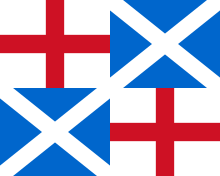 | |||
| Including | |||
| Leader(s) |
| ||
| |||
The Commonwealth was the political structure during the period from 1649 to 1660 when England and Wales, later along with Ireland and Scotland,[1] were governed as a republic after the end of the Second English Civil War and the trial and execution of Charles I. The republic's existence was declared through "An Act declaring England to be a Commonwealth",[2] adopted by the Rump Parliament on 19 May 1649. Power in the early Commonwealth was vested primarily in the Parliament and a Council of State. During the period, fighting continued, particularly in Ireland and Scotland, between the parliamentary forces and those opposed to them, in the Cromwellian conquest of Ireland and the Anglo-Scottish war of 1650–1652.
In 1653, after dissolution of the Rump Parliament, the Army Council adopted the Instrument of Government which made Oliver Cromwell Lord Protector of a united "Commonwealth of England, Scotland and Ireland", inaugurating the period now usually known as the Protectorate. After Cromwell's death, and following a brief period of rule under his son, Richard Cromwell, the Protectorate Parliament was dissolved in 1659 and the Rump Parliament recalled, starting a process that led to the restoration of the monarchy in 1660. The term Commonwealth is sometimes used for the whole of 1649 to 1660 – called by some the Interregnum – although for other historians, the use of the term is limited to the years prior to Cromwell's formal assumption of power in 1653.
In retrospect, the period of republican rule for England was a failure in the short term. During the 11-year period, no stable government was established to rule the English state for longer than a few months at a time. Several administrative structures were tried, and several Parliaments called and seated, but little in the way of meaningful, lasting legislation was passed. The only force keeping it together was the personality of Oliver Cromwell, who exerted control through the military by way of the "Grandees", being the Major-Generals and other senior military leaders of the New Model Army. Not only did Cromwell's regime crumble into near anarchy upon his death and the brief administration of his son, but the monarchy he overthrew was restored in 1660, and its first act was officially to erase all traces of any constitutional reforms of the Republican period. Still, the memory of the Parliamentarian cause, dubbed the Good Old Cause by the soldiers of the New Model Army, lingered on. It would carry through English politics and eventually result in a constitutional monarchy.[citation needed]
The Commonwealth period is better remembered for the military success of Thomas Fairfax, Oliver Cromwell, and the New Model Army. Besides resounding victories in the English Civil War, the reformed Navy under the command of Robert Blake defeated the Dutch in the First Anglo-Dutch War which marked the first step towards England's naval supremacy. In Ireland, the Commonwealth period is remembered for Cromwell's brutal subjugation of the Irish, which continued the policies of the Tudor and Stuart periods.
https://en.wikipedia.org/wiki/Commonwealth_of_England
| Timeline |
The Interregnum[1] was the period between the execution of Charles I on 30 January 1649 and the arrival of his son Charles II in London on 29 May 1660 which marked the start of the Restoration. During the Interregnum, England was under various forms of republican government (see Commonwealth of England; this article describes other facets of the Interregnum).
https://en.wikipedia.org/wiki/Interregnum_(England)
| English Civil Wars | |||||||
|---|---|---|---|---|---|---|---|
| Part of the Wars of the Three Kingdoms | |||||||
 The Battle of Naseby, 14 June 1645; Parliamentarian victory marked the decisive turning point in the English Civil War. | |||||||
| |||||||
| Belligerents | |||||||
|
Royalists
|
Parliamentarians
| ||||||
| Commanders and leaders | |||||||
|
| ||||||
| Casualties and losses | |||||||
|
| ||||||
| 127,000 non-combat deaths (including some 40,000 civilians)[a] | |||||||
The English Civil War is a generic term for a series of civil wars between Royalists and Parliamentarians in England and Wales from 1642 to 1652. Part of the wider 1639 to 1653 Wars of the Three Kingdoms, they consist of the First English Civil War, the Second English Civil War, and the Third English Civil War. The latter is now usually known as the Anglo-Scottish war (1650–1652), since most of the fighting took place in Scotland, while the Royalists consisted almost entirely of Scots Covenanters and English exiles, with no significant rising in England.
While the conflicts in the three kingdoms of England and Wales, Scotland and Ireland had similarities, each had their own specific issues and objectives. The First English Civil War was fought primarily over the correct balance of power between Parliament and Charles I. It ended in June 1646 with Royalist defeat and the king in custody.
However, victory exposed Parliamentarian divisions over the nature of the political settlement. The vast majority went to war in 1642 to assert Parliament's right to participate in government, not abolish the monarchy, which meant Charles' refusal to make concessions led to a stalemate. Concern over the political influence of radicals within the New Model Army like Oliver Cromwell led to an alliance between moderate Parliamentarians and Royalists, supported by the Covenanters. Royalist defeat in the 1648 Second English Civil War resulted in the Execution of Charles I in January 1649, and establishment of the Commonwealth of England.
In 1650, Charles II was crowned king of Scotland, in return for agreeing to create a Presbyterian church in both England and Scotland. The subsequent Anglo-Scottish war ended with Parliamentarian victory at the Worcester on 3 September 1651. Both Ireland and Scotland were incorporated into the Commonwealth, and Britain became a unitary state until the Stuart Restoration in 1660.
https://en.wikipedia.org/wiki/English_Civil_War
The end of English Renaissance theatre
The rising Puritan movement was hostile toward theatre, as they felt that "entertainment" was sinful. Politically, playwrights and actors were clients of the monarchy and aristocracy, and most supported the Royalist cause. The Puritan faction, long powerful in London, gained control of the city early in the First English Civil War, and on 2 September 1642, the Long Parliament, pushed by the Parliamentarian party, under Puritan influence, banned the staging of plays in the London theatres though it did not, contrary to what is commonly stated, order the closure, let alone the destruction, of the theatres themselves:
Whereas the distressed Estate of Ireland, steeped in her own Blood, and the distracted Estate of England, threatened with a Cloud of Blood by a Civil War, call for all possible Means to appease and avert the Wrath of God, appearing in these Judgements; among which, Fasting and Prayer, having been often tried to be very effectual, having been lately and are still enjoined; and whereas Public Sports do not well agree with Public Calamities, nor Public Stage-plays with the Seasons of Humiliation, this being an Exercise of sad and pious Solemnity, and the other being Spectacles of Pleasure, too commonly expressing lascivious Mirth and Levity: It is therefore thought fit, and Ordained, by the Lords and Commons in this Parliament assembled, That, while these sad causes and set Times of Humiliation do continue, Public Stage Plays shall cease, and be forborn, instead of which are recommended to the People of this Land the profitable and seasonable considerations of Repentance, Reconciliation, and Peace with God, which probably may produce outward Peace and Prosperity, and bring again Times of Joy and Gladness to these Nations.
— His Majesty's Stationery Office, Acts and Ordinances of the Interregnum, 1642–1660, "September 1642: Order for Stage-plays to cease"[60]
The Act purports the ban to be temporary ("... while these sad causes and set Times of Humiliation do continue, Public Stage Plays shall cease and be forborn") but does not assign a time limit to it.
Even after 1642, during the English Civil War and the ensuing Interregnum (English Commonwealth), some English Renaissance theatre continued. For example, short comical plays called drolls were allowed by the authorities, while full-length plays were banned. The theatre buildings were not closed but rather were used for purposes other than staging plays.[i]
The performance of plays remained banned for most of the next eighteen years, becoming allowed again after the Restoration of the monarchy in 1660. The theatres began performing many of the plays of the previous era, though often in adapted forms. New genres of Restoration comedy and spectacle soon evolved, giving English theatre of the later seventeenth century its distinctive character.
https://en.wikipedia.org/wiki/English_Renaissance_theatre
The performance of plays remained banned for most of the next eighteen years, becoming allowed again after the Restoration of the monarchy in 1660. The theatres began performing many of the plays of the previous era, though often in adapted forms. New genres of Restoration comedy and spectacle soon evolved, giving English theatre of the later seventeenth century its distinctive character.
https://en.wikipedia.org/wiki/English_Renaissance_theatre
Playing companies
- King's Revels Children
- King's Revels Men
- Lady Elizabeth's Men
- Leicester's Men
- Lord Strange's Men (later Derby's Men)
- Oxford's Boys
- Oxford's Men
- Pembroke's Men
- Prince Charles's Men
- Queen Anne's Men
- Queen Elizabeth's Men
- Queen Henrietta's Men
- The Admiral's Men
- The Children of Paul's
- The Children of the Chapel (Queen's Revels)
- The King's Men
- The Lord Chamberlain's Men
- Sussex's Men
- Warwick's Men
- Worcester's Men
https://en.wikipedia.org/wiki/English_Renaissance_theatre
Timeline of English Renaissance playing companies
English Renaissance playing company timeline

This timeline charts the existence of major English playing companies from 1572 ("Acte for the punishment of Vacabondes", which legally restricted acting to players with a patron of sufficient degree) to 1642 (the closing of the theatres by Parliament). A variety of strolling players, and even early London-based troupes existed before 1572. The situations were often fluid, and much of this history is obscure; this timeline necessarily implies more precision than exists in some cases. The labels down the left indicate the most common names for the companies. The bar segments indicate the specific patron. In the case of children's companies (a distinct legal situation) some founders are noted.
https://en.wikipedia.org/wiki/English_Renaissance_theatre
The Accession Day tilts were a series of elaborate festivities held annually at the court of Elizabeth I of England to celebrate her Accession Day, 17 November, also known as Queen's Day.[1] The tilts combined theatrical elements with jousting, in which Elizabeth's courtiers competed to outdo each other in allegorical armour and costume, poetry, and pageantry to exalt the queen and her realm of England.[2]
The last Elizabethan Accession Day tilt was held in November 1602; the queen died the following spring. Tilts continued as part of festivities marking the Accession Day of James I, 24 March, until 1624, the year before his death.[3]
https://en.wikipedia.org/wiki/Accession_Day_tilt
The Greenwich garniture of Sir Henry Lee, in the Jacob Album
https://en.wikipedia.org/wiki/Accession_Day_tilt
Armour (Commonwealth English) or armor (American English; see spelling differences) is a covering used to protect an object, individual, or vehicle from physical injury or damage, especially direct contact weapons or projectiles during combat, or from a potentially dangerous environment or activity (e.g. cycling, construction sites, etc.). Personal armour is used to protect soldiers and war animals. Vehicle armour is used on warships, armoured fighting vehicles, and some mostly ground attack combat aircraft.
A second use of the term armour describes armoured forces, armoured weapons, and their role in combat. After the development of armoured warfare, tanks and mechanised infantry and their combat formations came to be referred to collectively as "armour".
https://en.wikipedia.org/wiki/Armour
Etymology
The word "armour" began to appear in the Middle Ages as a derivative of Old French. It is dated from 1297 as a "mail, defensive covering worn in combat". The word originates from the Old French armure, itself derived from the Latin armatura meaning "arms and/or equipment", with the root armare meaning "arms or gear".[1]
https://en.wikipedia.org/wiki/Armour
https://en.wikipedia.org/wiki/Francis_Bacon
https://en.wikipedia.org/wiki/King_Arthur
https://en.wikipedia.org/wiki/Pastoral
https://en.wikipedia.org/wiki/Heraldic_badge
https://en.wikipedia.org/wiki/Metaphor
https://en.wikipedia.org/wiki/Costume_party
https://en.wikipedia.org/wiki/Card_stock
https://en.wikipedia.org/wiki/The_Faerie_Queene
https://en.wikipedia.org/wiki/Charles_Howard,_1st_Earl_of_Nottingham
https://en.wikipedia.org/wiki/Edward_de_Vere,_17th_Earl_of_Oxford
https://en.wikipedia.org/wiki/Jousting
https://en.wikipedia.org/wiki/Accession_day
https://en.wikipedia.org/wiki/Allegory
https://en.wikipedia.org/wiki/Costume
https://en.wikipedia.org/wiki/Poetry
https://en.wikipedia.org/wiki/Medieval_pageant
Greenwich armour of George Clifford, 3rd Earl of Cumberland (1558–1605), 1586. This has a different design to that in the miniature by Nicholas Hilliard (at top).
https://en.wikipedia.org/wiki/Accession_Day_tilt
https://en.wikipedia.org/wiki/Chivalry
https://en.wikipedia.org/wiki/Patronage
A visitor's account
The fullest straightforward account of a Tilt is by Lupold von Wedel, a German traveller who saw the 1584 celebrations:
Now approached the day, when on November 17 the tournament was to be held... About twelve o’clock the queen and her ladies placed themselves at the windows in a long room at Weithol [Whitehall] palace, near Westminster, opposite the barrier where the tournament was to be held. From this room a broad staircase led downwards, and round the barrier stands were arranged by boards above the ground, so that everybody by paying 12d. would get a stand and see the play... Many thousand spectators, men, women and girls, got places, not to speak of those who were within the barrier and paid nothing.
During the whole time of the tournament all those who wished to fight entered the list by pairs, the trumpets being blown at the time and other musical instruments. The combatants had their servants clad in different colours, they, however, did not enter the barrier, but arranged themselves on both sides. Some of the servants were disguised like savages, or like Irishmen, with the hair hanging down to the girdle like women, others had horses equipped like elephants, some carriages were drawn by men, others appeared to move by themselves; altogether the carriages were very odd in appearance. Some gentlemen had their horses with them and mounted in full armour directly from the carriage. There were some who showed very good horsemanship and were also in fine attire. The manner of the combat each had settled before entering the lists. The costs amounted to several thousand pounds each.
When a gentleman with his servants approached the barrier, on horseback or in a carriage, he stopped at the foot of the staircase leading to the queen’s room, while one of his servants in pompous attire of a special pattern mounted the steps and addressed the queen in well-composed verses or with a ludicrous speech, making her and her ladies laugh. When the speech was ended he in the name of his lord offered to the queen a costly present... Now always two by two rode against each other, breaking lances across the beam... The fête lasted until five o’clock in the afternoon...[21]
https://en.wikipedia.org/wiki/Accession_Day_tilt
Category:English Renaissance
- The English Renaissance — the European Renaissance period of 14th, 15th, and 16th century England.
Subcategories
This category has the following 6 subcategories, out of 6 total.
A
- Renaissance architecture in England (2 C, 9 P)
E
- Elizabethan era (13 C, 35 P)
H
- English Renaissance humanists (37 P)
P
- English Renaissance plays (27 C, 429 P)
R
- Renaissance in Scotland (2 C, 21 P)
T
- Tudor England (14 C, 101 P)
Pages in category "English Renaissance"
The following 20 pages are in this category, out of 20 total. This list may not reflect recent changes.
E
P
https://en.wikipedia.org/wiki/Category:English_Renaissance
Greenwich armour is the plate armour in a distinctively English style produced by the Royal Almain Armoury founded by Henry VIII in 1511 in Greenwich near London, which continued until the English Civil War. The armoury was formed by imported master armourers hired by Henry VIII, initially including some from Italy and Flanders, as well as the Germans who dominated during most of the 16th century. The most notable head armourer of the Greenwich workshop was Jacob Halder, who was master workman of the armoury from 1576 to 1607. This was the peak period of the armoury's production and it coincided with the elaborately gilded and sometimes coloured decorated styles of late Tudor England.
As the use of full plate in actual combat had declined by the late 16th century, the Greenwich armours were primarily created not for battle but for the tournament. Jousting was a favourite pastime of Henry VIII (at dire cost to his health), and his daughter Elizabeth I made her Accession Day tilts a highlight of the court's calendar, focused on hyperbolic declarations of loyalty and devotion in the style of contemporary verse epics. Even late in her reign, courtiers gained favour by participating and dressing the part.
The workshop produced bespoke armour for the nobility; relatively mass-produced government orders for the military mainly went elsewhere. The book of Greenwich armour designs for 24 different gentlemen, known as the "Jacob Album" after its creator, includes many of the most important figures of the Elizabethan court. In this period a distinctive Greenwich style developed, marked by imitating aspects of fashionable clothing styles, and extensive use of gilded and coloured areas, using complex decoration in Northern Mannerist styles.
By the time of the mid-17th century, plate armour had adopted a stark and utilitarian form favoring thickness and protection (from the ever-more-powerful firearms which were redefining battle) over aesthetics and was generally only used by heavy cavalry; afterwards, it was to disappear more or less completely. Therefore, the Greenwich workshop represented the last flourishing of decorative armour-making in England, and comprises a unique genre of late-Renaissance art in its own right.
https://en.wikipedia.org/wiki/Greenwich_armour
The Palace of Placentia, also known as Greenwich Palace,[1] was an English royal residence that was initially built by Humphrey, Duke of Gloucester, in 1443.[2][3] The palace was a pleasaunce; a place designed for pleasure, entertainment and an escape from the city.[4] It was located at Greenwich on the south bank of the River Thames, downstream from London. On a hill behind the palace he built Duke Humphrey's Tower, later known as Greenwich Castle; it was subsequently demolished to make way for the Royal Observatory, Greenwich, which survives. The original river-side residence was extensively rebuilt around 1500 by Henry VII. A detached residence, the Queen's House, was built on the estate in the early 1600s and also survives. In 1660, the main palace was demolished by Charles II to make way for a proposed new palace, which was never constructed. Nearly forty years later, the Greenwich Hospital (now called the Old Royal Naval College) was built on the site.
https://en.wikipedia.org/wiki/Palace_of_Placentia
| UNESCO World Heritage Site | |
|---|---|
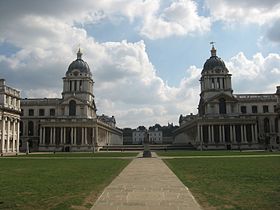 The
Chapel is in Queen Mary Court (left) and the Painted Hall is in King
William Court (right). The domes are above the entrances. | |
| Location | United Kingdom |
| Includes |
|
| Criteria | Cultural: (i), (ii), (iv), (vi) |
| Reference | 795 |
| Inscription | 1995 (19th Session) |
| Extensions | 2008 |
| Area | 109.5 hectares (271 acres) |
| Buffer zone | 174.85 hectares (432.1 acres) |
| Website | whc |
| Coordinates | 51°29′1″N 0°0′21″W |
Location in the United Kingdom | |
The Old Royal Naval College is the architectural centrepiece of Maritime Greenwich,[1] a World Heritage Site in Greenwich, London, described by the United Nations Educational, Scientific and Cultural Organisation (UNESCO) as being of "outstanding universal value" and reckoned to be the "finest and most dramatically sited architectural and landscape ensemble in the British Isles".[2] The site is managed by the Greenwich Foundation for the Old Royal Naval College, established in 1997 to conserve the buildings and grounds and convert them into a cultural destination.[3] The buildings were originally constructed to serve as the Royal Hospital for Seamen at Greenwich, now generally known as Greenwich Hospital, chartered by King William III and Queen Mary II on 25 October 1694, designed by Christopher Wren, and built between 1696 and 1712.[4][5] The hospital closed in 1869. Between 1873 and 1998 it was the Royal Naval College, Greenwich.[6]
https://en.wikipedia.org/wiki/Old_Royal_Naval_College
Greenwich Hospital was a permanent home for retired sailors of the Royal Navy, which operated from 1692 to 1869. Its buildings, in Greenwich, London, were later used by the Royal Naval College, Greenwich and the University of Greenwich, and are now known as the Old Royal Naval College. The word "hospital" was used in its original sense of a place providing hospitality for those in need of it, and did not refer to medical care, although the buildings included an infirmary which, after Greenwich Hospital closed, operated as Dreadnought Seaman's Hospital until 1986.
The foundation which operated the hospital still exists, for the benefit of former Royal Navy personnel and their dependants. It now provides sheltered housing on other sites.
https://en.wikipedia.org/wiki/Greenwich_Hospital,_London
History
Humphrey was regent during the minority of Henry VI (his nephew) and started building the palace in 1433,[3] under the name Bella Court.[5] In 1447, Humphrey fell out of favour with Henry VI and was arrested for high treason. He died in prison, likely due to a stroke, though it was popularly believed that he was murdered[6] (as is depicted in William Shakespeare's plays about Henry VI). Margaret of Anjou took over Bella Court, renaming it the Palace of Placentia, sometimes written as the 'Palace of Pleasaunce'.[5]
In 1485, Edward IV gave land and property adjacent to the palace for the foundation of a friary by the Observant Friars (a branch of the Franciscans).[7] The friars' church was used for royal baptisms and marriages, including the christenings of the future queens Mary I and Elizabeth I. However, the friars were persecuted during the English Reformation and finally expelled by Elizabeth I in 1559.[8]
Henry VII rebuilt the palace between 1498 and 1504, with a design based around three large courtyards.[5] It remained the principal royal palace for the next two centuries.
The palace was the birthplace of Henry VIII in 1491, and it figured largely in his life.[9] Following the king's marriage to Catherine of Aragon, Placentia became the birthplace of Mary I in 1516.[10]
After Henry VIII's marriage to Anne Boleyn, his daughter, later Elizabeth I, was born at Placentia in 1533,[11] and he married Anne of Cleves there in 1540. A fallen tree in Greenwich Park is known as Queen Elizabeth's Oak, in which she is reputed to have played as a child.[12]
Both Mary and Elizabeth lived at Placentia for some years during the sixteenth century, but during the reigns of James I and Charles I, the Queen's House was erected to the south of the palace.[13] Placentia fell into disrepair during the English Civil War, serving time as a biscuit factory and a prisoner-of-war camp.[13][14]
In 1660, Charles II decided to rebuild the palace, engaging John Webb as the architect for a new King's House.[15] The only section of the new building to be completed was the east range of the present King Charles Court, but this was never occupied as a royal residence.[15] Most of the rest of the palace was demolished, and the site remained empty until construction of the Greenwich Hospital began in 1694.[15]
https://en.wikipedia.org/wiki/Palace_of_Placentia
Characteristics
Henrician Period
Although there were certainly English armourers at work before 1511, indeed they had their own guild in London, it seems that they were both unable to cope with large volume orders, and not able to produce work of the finest quality, and in the latest styles, found in Europe. A payment to Milanese armourers at Greenwich, of £6 2/3 and two hogsheads of wine, was made in July 1511; they were under contract for two years from March 1511, and other payments record the setting-up of a mill and the purchase of tools. Greenwich Palace was still an important royal residence, birthplace of both Henry and his two daughters. By 1515 there were six German master armourers, with (perhaps working separately from) two apparently Flemish masters, two polishers and an apprentice, all working under the English King's Armourer, John Blewbury, and a "Clerk of the Stable". All were given damask livery clothes.[1]
In 1516 the workshop moved closer to London (but still outside the city itself, where guild regulation might have been an issue) to a mill in Southwark, while construction of a new mill at Greenwich began. On completion of this in 1520 they returned to Greenwich.[2]
The first Greenwich harnesses, created under Henry VIII, were typically of uniform colouration, either gilded or silvered all over and then etched with intricate motifs, often designed by Hans Holbein. The lines of these armours were typically not much different from Northern German designs of the same time period; the decorations, though, were often more extravagant. A good example of this early sort of Greenwich style is the harness which is thought to have belonged to Galiot de Genouillac, Constable of France, but was initially created for King Henry. The armour, currently on display at the Metropolitan Museum of Art in New York, has a specially designed corset built into the cuirass to support the weight of the burly king's large stomach. This harness also has very wide sabatons in the Maximilian style. Very similar in design, but ungilded, is another tournament harness made for Henry VIII which now resides at the Tower of London and which is famous for its large codpiece.
https://en.wikipedia.org/wiki/Greenwich_armour
A payment to Milanese armourers at Greenwich, of £6 2/3 and two hogsheads of wine, was made in July 1511; they were under contract for two years from March 1511, and other payments record the setting-up of a mill and the purchase of tools.
https://en.wikipedia.org/wiki/Greenwich_armour
By 1515 there were six German master armourers, with (perhaps working separately from) two apparently Flemish masters, two polishers and an apprentice, all working under the English King's Armourer, John Blewbury, and a "Clerk of the Stable". All were given damask livery clothes.[1]
https://en.wikipedia.org/wiki/Greenwich_armour
In 1516 the workshop moved closer to London (but still outside the city itself, where guild regulation might have been an issue) to a mill in Southwark, while construction of a new mill at Greenwich began. On completion of this in 1520 they returned to Greenwich.[2]
https://en.wikipedia.org/wiki/Greenwich_armour
The garniture of Robert Dudley, Earl of Leicester, as depicted in the Jacob album
https://en.wikipedia.org/wiki/Greenwich_armour
A codpiece (from Middle English cod 'scrotum') is a triangular piece that attached to the front of men's hose, covering the fly. It may be held in place by ties or buttons. It was an important fashion item of European clothing during the 15th–16th centuries. In the modern era, similar clothing pieces are worn in the leather subculture, and in performance costumes, such as for rock and metal musicians. A similar device with rigid construction, an athletic cup, is used as protective gear for male athletes.
https://en.wikipedia.org/wiki/Codpiece
A sabaton or solleret is part of a knight's body armor that covers the foot.[1]
https://en.wikipedia.org/wiki/Sabaton
A corset is a support garment commonly worn to hold and train the torso into a desired shape, traditionally a smaller waist or larger bottom, for aesthetic or medical purposes (either for the duration of wearing it or with a more lasting effect), or support the breasts. Both men and women are known to wear corsets, though this item was for many years an integral part of women's wardrobes.
Since the late 20th century, the fashion industry has borrowed the term "corset" to refer to tops which, to varying degrees, mimic the look of traditional corsets without acting as them. While these modern corsets and corset tops often feature lacing or boning, and generally imitate a historical style of corsets, they have very little, if any, effect on the shape of the wearer's body. Genuine corsets are usually made by a corsetmaker and are frequently fitted to the individual wearer.
https://en.wikipedia.org/wiki/Corset
A cuirass (/kwɪˈræs, kjʊəˈræs/;[1] French: cuirasse, Latin: coriaceus) is a piece of armour that covers the torso, formed of one or more pieces of metal or other rigid material. The word probably originates from the original material, leather, from the French cuirace and Latin word coriacea. The use of the term "cuirass" generally refers to both the chestplate (or breastplate) and the back piece together; whereas a breastplate only protects the front, a cuirass protects both the front and the back.
https://en.wikipedia.org/wiki/Cuirass
A hogshead (abbreviated "hhd", plural "hhds") is a large cask of liquid (or, less often, of a food commodity). More specifically, it refers to a specified volume, measured in either imperial or US customary measures, primarily applied to alcoholic beverages, such as wine, ale, or cider.
https://en.wikipedia.org/wiki/Hogshead
Golden Age
After the reign of Henry VIII, the Greenwich armour began to evolve into a different and unique style. There were several defining characteristics of this second wave of armour. One was the mimicking of popular fashions of the time in the styles of the armour to reflect the individual wearer's taste in civilian clothing. From 1560 cuirasses were designed to imitate the curving "peascod" style of doublet which was immensely popular among gentlemen during the reign of Elizabeth. This type of cuirass curved outwards in front at a steep angle which culminated at the groin, where it tapered into a small horn-like protrusion. All-over gilding or silvering was replaced by strips of blued or gilded steel, typically running horizontally across the pauldrons at the edge of each lame, and vertically down the cuirass and tassets, which emulated the strips of colourful embroidered cloth that were popular in civilian fashion.
Some armours were provided with an extra pair of tassets for use at the barriers which were very wide, not unlike the form of a pair of trunkhose. The extant armours of Robert Dudley, 1st Earl of Leicester, and that of Henry Herbert, 2nd Earl of Pembroke, currently display these tassets. The armour of William Somerset, 3rd Earl of Worcester, is also similarly styled.
Another defining characteristic of Elizabethan-era Greenwich armour is the extravagant use of colour in general to decorate the steel. Older styles of armour-making, such as Maximilian and Gothic, emphasized the shaping of the metal itself, such as fluting and roping, to create artistic designs in the armour, rather than using colour. The Greenwich style, however, came at a time when complicated decoration of the metal with colour, texture and embossed designs was fashionable across Europe.
Greenwich did not produce the highly modelled figurative designs of some Continental centres, but specialised in bold designs using different colours to form vibrant, striking patterns. Colour contrast became extremely important, as it was in civilian fashion. The extent to which a suit of armour was decorated depended on the wealth of the buyer, and ranged from wildly elaborate and artistic pieces such as George Clifford's famous gilded garniture to relatively simple harnesses of "white armour" overlaid with intersecting patterns of darker-coloured strips. In either case, the use of contrasting colours became a hallmark of the Greenwich style.
There were three main ways in which the steel of the armour was coloured: bluing, browning, and russeting. Bluing the steel gave it a deep, brilliant blue-black finish. Browning, as the name would suggest, coloured the steel a dark brown, which contrasted vividly with gilding as in the harness of George Clifford, 3rd Earl of Cumberland. Finally, russeting imparted a dark-red or purple hue to the steel, which was also typically used in conjunction with gilding. All of these base colours would be applied uniformly to the steel of the armour, and then strips of differently coloured steel would be laid across to create patterns, or etched sections of the armour would be gilded. The Earl of Worcester's armour is one striking example of a scalloped design which was originally gilded over dark blued steel.
The Greenwich helmet for the field and tilt has a distinctive form. The typical Greenwich helm is an armet with a very high visor perforated on one or both sides by vertical slits, in the case of a field visor, or with small round holes in the case of a visor for the tilt (most Greenwich armours came with both types.) The rim of the upper bevor juts out forward gracefully, giving the helmet a characteristic "ship's prow" appearance. It also typically has a high raised comb from the rear of the skull extending up to the top of the visor, a feature influenced by the French style.
Finally, Greenwich armours were often made in the form of a garniture, which meant a large set of interchangeable armour pieces, referred to as pieces of exchange, with the same design which could be arranged to form a suit for either mounted combat such as jousting, or combat on foot in the tournament. A garniture would typically include a full plate harness plus an extra visor specially meant for tilting; a burgonet helmet which would be worn open-faced for a parade or ceremony, or with a removable "falling-buffe" visor for combat; a grandguard, which would reinforce the upper portion of the torso and neck for jousting; a passguard, which would reinforce the arm; and a manifer, a large gauntlet to protect the hand. It might also include a shaffron, which would cover the head of the knight's horse, and a set of decorated saddle steels.
https://en.wikipedia.org/wiki/Greenwich_armour
https://en.wikipedia.org/wiki/Maximilian_armour
https://en.wikipedia.org/wiki/Gothic_plate_armour
A doublet (/ˈdʌblɪt/;[1] derived from the Ital. giubbetta[2]) is a man's snug-fitting jacket that is shaped and fitted to the man's body. The garment was worn in Spain, and spread to the rest of Western Europe, from the late Middle Ages up to the mid-17th century. The doublet was hip length or waist length and worn over the shirt or drawers. Until the end of the 15th century, the doublet was usually worn under another layer of clothing such as a gown, mantle, overtunic or jerkin when in public.
Originally it was a mere stitched and quilted lining ("doubling"), worn under a hauberk or cuirass to prevent bruising and chafing. Doublets were sometimes opened to the waistline in a deep V. The edges might be left free or laced across the shirt front. If there was space left it might be filled with a stomacher. By the 1520s, the edges of the doublet more frequently met at the center front. Then, like many other originally practical items in the history of men's wear, from the late 15th century onward it became elaborated enough to be seen on its own.
Throughout the 300 years of its use, the doublet served the same purpose: to give fashionable shape and padding to the body, to support the hose by providing ties, and to provide warmth to the body. The only things that changed about the doublet over its history was its style and cut.
https://en.wikipedia.org/wiki/Doublet_(clothing)
A pauldron (sometimes spelled pouldron or powldron) is a component of plate armor that evolved from spaulders in the 15th century. As with spaulders, pauldrons cover the shoulder area.[1] Pauldrons tend to be larger than spaulders, covering the armpit, and sometimes parts of the back and chest. A pauldron typically consists of a single large dome-shaped piece to cover the shoulder (the "cop") with multiple lames attached to it to defend the arm and upper shoulder. On some suits of armour, especially those of Italian design, the pauldrons would usually be asymmetrical, with one pauldron covering less (for mobility) and sporting a cut-away to make room for a lance rest.[2]
https://en.wikipedia.org/wiki/Pauldron
Tassets are a piece of plate armour designed to protect the upper thighs. They take the form of separate plates hanging from the breastplate or faulds. They may be made from a single piece or segmented. The segmented style of tassets connected by sliding rivets produced during the 16th century is also known as almain rivets. From the 16th century onward, the tassets were sometimes integrated with the cuisses to create fully articulated leg defenses that continued from the lower edge of the breastplate down to the poleyn.
https://en.wikipedia.org/wiki/Tassets
The burgonet helmet (sometimes called a burgundian sallet) was a Renaissance-era and early modern combat helmet. It was the successor of the sallet.[1]
https://en.wikipedia.org/wiki/Burgonet
Plate armour is a historical type of personal body armour made from bronze, iron, or steel plates, culminating in the iconic suit of armour entirely encasing the wearer. Full plate steel armour developed in Europe during the Late Middle Ages, especially in the context of the Hundred Years' War, from the coat of plates worn over mail suits during the 14th century.
https://en.wikipedia.org/wiki/Plate_armour
A garniture is a number or collection of any matching, but usually not identical, decorative objects intended to be displayed together.[1] Frequently made of metal, ormolu, often with gilded wood stands, porcelain (both European and Asian), garnitures became popular during the latter half of the 17th century and remained in vogue throughout the 19th century. A very common placement is on the mantelpiece over a fireplace, but garnitures were very often placed on various pieces of furniture, and on ledges or niches around the walls of a room, especially over doors or above fireplaces. Garnitures may contain pieces made together with a view to being used as a set, or may be "assembled" by the decorator from pieces of different origin.
Most commonly a garniture is a collection of three matching pieces designed for the adornment of a mantlepiece; for example: a clock and two flanking vases or candelabra. Often a large central piece is flanked by pairs of smaller ones. Factory records show that some examples of the Sèvres pot-pourri vase in the shape of a ship were bought as garnitures with other smaller shapes decorated in the same colours (which varied greatly between individual examples). Madame de Pompadour bought one with two pairs of vases, and another buyer a garniture with one pair of the elephant-headed vases.[2] A garniture can also refer to almost any set that might be displayed together. One example is a collection of figurines, candlesticks or epergnes designed to adorn a surtout de table.[3]
Other uses of the word include a matching array of plate armour and its accessories, often with different types of the same pieces for different occasions, known as "pieces of exchange",[4] sets of weapons with their fittings, and in French restaurant terminology, the "trimmings" or garnish around the main element of a dish. In French the range of meanings is even wider.
https://en.wikipedia.org/wiki/Garniture
The garniture of Thomas Scrope in the Jacob album
https://en.wikipedia.org/wiki/Greenwich_armour
The Jacob Album
An album, now in the Victoria and Albert Museum, was drawn up by Jacob Halder which contains full-colour illustrations of twenty-nine different Greenwich armours for various Elizabethan gentlemen of high rank; many of the armours are part of large garnitures with the additional pieces of exchange also depicted. The album displays a picture of each customer standing in the same stylized pose, with right hand on hip and left hand holding a staff of office, and wearing the armour which was to be furnished for him.
The wearers listed in the album include some of the most illustrious and powerful nobles of Elizabeth's court. Among them are Robert Dudley, 1st Earl of Leicester; William Herbert, 1st Earl of Pembroke; Sir Thomas Bromley, Lord Chancellor of England; Sir Christopher Hatton, who succeeded Bromley as Lord Chancellor and was also rumored to be Queen Elizabeth's lover; Sir Henry Lee, Queen Elizabeth's first official jousting champion; and George Clifford, 3rd Earl of Cumberland, the Queen's second official champion and also an important naval commander who briefly captured Fort San Felipe del Morro.
Other notable figures whose suits of armour are displayed in the album are Thomas Sackville, 1st Earl of Dorset (then "Lord Buckhurst", which survives in the Wallace Collection in London), who served as Lord High Treasurer but is perhaps best known as the co-author of Gorboduc, one of the first tragedies written in blank verse, and Sir James Scudamore, a gentleman usher and tilting champion who was the basis for the character "Sir Scudamour" in The Fairie Queene by Edmund Spenser. One of the armours in the album is labeled as being for "John, Duke of Finland" – the future king John III of Sweden, who visited England in 1560 to promote a marriage between Queen Elizabeth and his brother Eric.
Another design is for a man named Bale Desena, the identity of whom remains a mystery to this day. This man was likely not an Englishman, as his name (which is probably misspelled in the album) suggests Spanish or Italian origin. It is unknown how he commissioned a Greenwich armour, though these armours were sometimes given to foreigners as gifts. Christian of Brunswick, cousin and friend to Henry Frederick, Prince of Wales, was given a beautiful gilded Greenwich armour which remained in the family of the Dukes of Brunswick before ultimately being purchased by Ronald Lauder.
Twenty-three of the twenty-nine armours in the album belong to different individuals; Robert Dudley, Christopher Hatton, and Henry Lee, probably owing to their status as favourites to Queen Elizabeth, each had two suits of armour, in addition to large garnitures with many extra pieces. Several of the armours depicted in this album survive to the present day. The armours of Robert Dudley, William Somerset, and William Herbert are all at the Royal Armouries at the Tower of London, and Christopher Hatton's armour is at the Royal Armouries gallery in Leeds, along with the half-harness (the only one in the album) of a notable soldier, tactician and military writer of the Elizabethan era named John Smythe. The complete garniture of George Clifford is on display at the Metropolitan Museum of Art in New York, along with the armours of Sir James Scudamore and Henry Herbert, 2nd Earl of Pembroke.[3]
When compared with extant examples of the armour to which they correspond, the drawings in Jacob Halder's album are nearly exact representations of the designs of the finished product. There is only one major difference, which is that the drawing for the armour of William Somerset, Earl of Worcester, shows a deep red russeted background with scalloped and gilded bands over it, whereas the portrait of the Earl clearly shows a black background. Other than that, the design matches the armour perfectly, including even the maille shoes. Several of the garnitures in the album feature an identical design – a series of gilt bands in a snaking S-shape pattern overlaid with interlacing diagonal lines in an X pattern, sometimes described as representing lightning, over a background of deeply russeted steel of a purplish colour.
The garnitures with this design are those belonging to Sir James Scudamore, William Compton, 1st Earl of Northampton, and Thomas Sackville. However, comparison with surviving pieces shows that some details of the construction, such as the number of lames in a piece, are often different from the finished work – perhaps suggesting that the makers of the basic pieces were more free or ready to improve on designs as they worked than those working on the decoration.[4]
https://en.wikipedia.org/wiki/Greenwich_armour
Gallery
The same armour of William Somerset as it originally appeared
Armour of Thomas Sackville, 1st Earl of Dorset, Jacob Halder, c. 1587–1589
Greenwich armour of Sir James Scudamore, 1590s. Jousting was crucial to Scudamore's reputation at court.[5]
George Clifford wearing the armour shown at top
Sir Kenelm Digby
https://en.wikipedia.org/wiki/Greenwich_armour
https://en.wikipedia.org/wiki/Metropolitan_Museum_of_Art
Category:Western plate armour
This category is for metal plate armour in the Western post-classical tradition; essentially medieval to Early Modern. So modern, Oriental or ancient armour does not belong in this category.
Subcategories
This category has the following 3 subcategories, out of 3 total.
B
- Barding (2 P)
C
- Armour collections (2 C, 15 P)
M
- Medieval helmets (42 P)
Pages in category "Western plate armour"
The following 67 pages are in this category, out of 67 total. This list may not reflect recent changes.
G
https://en.wikipedia.org/wiki/Category:Western_plate_armour
Category:Early Modern armour
- Early Modern helmets (4 P)
P
- Western plate armour (3 C, 67 P)
Pages in category "Early Modern armour"
The following 6 pages are in this category, out of 6 total. This list may not reflect recent changes.
- Warfare of the early modern period
- Body armor
- History of clothing (Western fashion)
- Military equipment of the Early Modern period
- Militaria
https://en.wikipedia.org/wiki/Category:Early_Modern_armour
The Swiss developed a number of characteristic weapons during their period of military activity in the 15th and early 16th centuries, perfected further during the Early Modern period (16th and 17th centuries).
The halberd was the primary weapon of the early Swiss armies in the 14th and early 15th centuries. Later on, the Swiss added the pike to better repel heavy cavalry and roll over enemy infantry formations, with the halberd, longsword, or the Swiss dagger used for closer combat. The German Landsknechte, who imitated Swiss warfare methods during the early 16th century, also used the pike, supplemented by the halberd. The halberd is still the ceremonial weapon of the Swiss Guard in the Vatican.[1]
The Swiss armies of the late 14th and 15th centuries besides halberds and later pikes also carried other polearms such as the Lucerne hammer. By the 15th century, the carrying of side arms (baselard, dagger, and degen) had become ubiquitous. Also common were the bow, the crossbow and later the arquebuse. The city cantons could also employ siege engines. Berne in the Burgdorferkrieg of 1383–84 used medieval types of catapults and battering rams, but for the first time also cannons and early handguns.
The bladesmiths of Basel, Berne and Zurich during the late 15th and the 16th centuries perfected their production of bladed weapons, developing the "national weapons" of the Swiss: the Swiss dagger, Swiss degen, and later also the Swiss sabre known as Schnepf. A peculiarity of the Swiss armies of this period was the principle of self-equipment: each man was expected to purchase his own personal weapon, either pike, halberd or handgun, as well as his personal side arm, and in the 18th century his own musket, bayonet, sabre and uniform.
Central armouries (Zeughäuser) which were able to equip the troops of a given city developed only in the more wealthy cities during the 17th and 18th centuries, specifically in Zurich, Berne, Lucerne, Fribourg and Geneva. These did not supersede the principle of the privately owned equipment; instead, the armouries offered standard equipment at a reduced price to the individual serviceman. Consequently, substantial reserves of arms and armour were accumulated in the armouries of the Swiss cities during the Thirty Years' War, especially by Zurich and Solothurn. These armouries were decommissioned after the dissolution of cantonal military forces with the formation of the modern state in 1848.
By contrast, the population of the rural cantons in the conflicts of the Early Modern period was often armed with simple and ad hoc weaponry, especially clubs, and maces such as the spiked morning star. This was the case in the Swiss peasant war of 1653, and again in the Stecklikrieg uprising of 1802, called after the eponymous Stäckli "club" carried by the insurgents.
Substantial collections of historical arms and armour are kept in the Swiss National Museum in Zurich, in the Historical Museum in Bern and in the Morges Castle Military Museum.
See also
- Swiss sword
- Military history of Switzerland
- Battles of the Old Swiss Confederacy
- Swiss mercenaries
- Almain rivet
- Schützenfest
References
- Notes
- Sources
- Hugo Schneider, Alteidgenössische Bewaffnung, NZZ, 28 July 1968 (Nr. 458), 55–57.
- Hugo Schneider, Waffen im Schweizerischen Landesmuseum - Griffwaffen I, 1980, ISBN 978-3-280-01251-2.
- Anne-Marie Dubler, Fritz Häusler: Waffen - Mittelalter und frühe Neuzeit in German, French and Italian in the online Historical Dictionary of Switzerland.
- Peter Hug: Rüstung - Rüstung in der Alten Eidgenossenschaft in German, French and Italian in the online Historical Dictionary of Switzerland.
- Douglas Miller, Gerry Embleton, The Swiss at War 1300-1500, Men-At-Arms Series No. 94, Osprey Publishing, 1979., ISBN 978-0-85045-334-8.
- R. E. Oakeshott, European weapons and armour: From the Renaissance to the industrial revolution (1980), 44–48.
External links
https://en.wikipedia.org/wiki/Swiss_arms_and_armour
Munition armour (also "munitions-grade armour", "munition quality armour") was mass-produced armour stockpiled in armouries to equip both foot soldiers and mounted cuirassiers.
History
During the Late Middle Ages, plate armour was expensive and tailor-made for the wearer. Consequently, it was generally reserved for nobility. During the English Civil War, a cuirassier's armour could weigh between 32 and 45 kilograms (71 and 99 lb),[1] making this form of armour prohibitively costly and heavy. For these reasons, full plate armour started to disappear during the first few years of the conflict. Early Modern warfare was characterized by the establishment of standing armies equipped with mass-produced ordnance weapons.
Munitions-grade armour was produced in both Europe and Japan beginning in the 15th century to equip the standing armies developed from this period.
Munition armour was of a standard pattern with interchangeable pieces. It was often made of iron or sometimes an alloy of iron containing a small amount of phosphorus, which gave a marginal increase in hardness.[2] The phosphorus content may have been due to the use of high-phosphorus ores or the use of coal in smithing.[3]
In Japan, the warfare of the Sengoku period (15th and 16th centuries) required large quantities of armour to be produced for the ever growing armies of foot soldiers (ashigaru). Simple munition quality (okashi or lent)[4] cuirasses (dō) and helmets (kabuto) were mass-produced including foldable suits, like tatami armour.[5]Tatami armour was made from small iron or leather plates that were usually connected to each other by mail.[6]
See also
References
Bibliography
- Woosnam-Savage, Robert C.; Anthony Hall (2002). Brassey's Book of Body Armor. Potomac Books, Incorporated. ISBN 1-57488-465-4.
External links
https://en.wikipedia.org/wiki/Munition_armour
| Head | ||
|---|---|---|
| Face | ||
| Neck | ||
| Torso | ||
| Arms | ||
| Legs | ||
| Pieces | ||
The Swiss developed a number of characteristic weapons during their period of military activity in the 15th and early 16th centuries, perfected further during the Early Modern period (16th and 17th centuries).
The halberd was the primary weapon of the early Swiss armies in the 14th and early 15th centuries. Later on, the Swiss added the pike to better repel heavy cavalry and roll over enemy infantry formations, with the halberd, longsword, or the Swiss dagger used for closer combat. The German Landsknechte, who imitated Swiss warfare methods during the early 16th century, also used the pike, supplemented by the halberd. The halberd is still the ceremonial weapon of the Swiss Guard in the Vatican.[1]
The Swiss armies of the late 14th and 15th centuries besides halberds and later pikes also carried other polearms such as the Lucerne hammer. By the 15th century, the carrying of side arms (baselard, dagger, and degen) had become ubiquitous. Also common were the bow, the crossbow and later the arquebuse. The city cantons could also employ siege engines. Berne in the Burgdorferkrieg of 1383–84 used medieval types of catapults and battering rams, but for the first time also cannons and early handguns.
The bladesmiths of Basel, Berne and Zurich during the late 15th and the 16th centuries perfected their production of bladed weapons, developing the "national weapons" of the Swiss: the Swiss dagger, Swiss degen, and later also the Swiss sabre known as Schnepf. A peculiarity of the Swiss armies of this period was the principle of self-equipment: each man was expected to purchase his own personal weapon, either pike, halberd or handgun, as well as his personal side arm, and in the 18th century his own musket, bayonet, sabre and uniform.
Central armouries (Zeughäuser) which were able to equip the troops of a given city developed only in the more wealthy cities during the 17th and 18th centuries, specifically in Zurich, Berne, Lucerne, Fribourg and Geneva. These did not supersede the principle of the privately owned equipment; instead, the armouries offered standard equipment at a reduced price to the individual serviceman. Consequently, substantial reserves of arms and armour were accumulated in the armouries of the Swiss cities during the Thirty Years' War, especially by Zurich and Solothurn. These armouries were decommissioned after the dissolution of cantonal military forces with the formation of the modern state in 1848.
By contrast, the population of the rural cantons in the conflicts of the Early Modern period was often armed with simple and ad hoc weaponry, especially clubs, and maces such as the spiked morning star. This was the case in the Swiss peasant war of 1653, and again in the Stecklikrieg uprising of 1802, called after the eponymous Stäckli "club" carried by the insurgents.
Substantial collections of historical arms and armour are kept in the Swiss National Museum in Zurich, in the Historical Museum in Bern and in the Morges Castle Military Museum.
See also
- Swiss sword
- Military history of Switzerland
- Battles of the Old Swiss Confederacy
- Swiss mercenaries
- Almain rivet
- Schützenfest
References
- Notes
- Sources
- Hugo Schneider, Alteidgenössische Bewaffnung, NZZ, 28 July 1968 (Nr. 458), 55–57.
- Hugo Schneider, Waffen im Schweizerischen Landesmuseum - Griffwaffen I, 1980, ISBN 978-3-280-01251-2.
- Anne-Marie Dubler, Fritz Häusler: Waffen - Mittelalter und frühe Neuzeit in German, French and Italian in the online Historical Dictionary of Switzerland.
- Peter Hug: Rüstung - Rüstung in der Alten Eidgenossenschaft in German, French and Italian in the online Historical Dictionary of Switzerland.
- Douglas Miller, Gerry Embleton, The Swiss at War 1300-1500, Men-At-Arms Series No. 94, Osprey Publishing, 1979., ISBN 978-0-85045-334-8.
- R. E. Oakeshott, European weapons and armour: From the Renaissance to the industrial revolution (1980), 44–48.
External links
https://en.wikipedia.org/wiki/Swiss_arms_and_armour
Munition armour
Munition armour (also "munitions-grade armour", "munition quality armour") was mass-produced armour stockpiled in armouries to equip both foot soldiers and mounted cuirassiers.
History
During the Late Middle Ages, plate armour was expensive and tailor-made for the wearer. Consequently, it was generally reserved for nobility. During the English Civil War, a cuirassier's armour could weigh between 32 and 45 kilograms (71 and 99 lb),[1] making this form of armour prohibitively costly and heavy. For these reasons, full plate armour started to disappear during the first few years of the conflict. Early Modern warfare was characterized by the establishment of standing armies equipped with mass-produced ordnance weapons.
Munitions-grade armour was produced in both Europe and Japan beginning in the 15th century to equip the standing armies developed from this period.
Munition armour was of a standard pattern with interchangeable pieces. It was often made of iron or sometimes an alloy of iron containing a small amount of phosphorus, which gave a marginal increase in hardness.[2] The phosphorus content may have been due to the use of high-phosphorus ores or the use of coal in smithing.[3]
In Japan, the warfare of the Sengoku period (15th and 16th centuries) required large quantities of armour to be produced for the ever growing armies of foot soldiers (ashigaru). Simple munition quality (okashi or lent)[4] cuirasses (dō) and helmets (kabuto) were mass-produced including foldable suits, like tatami armour.[5]Tatami armour was made from small iron or leather plates that were usually connected to each other by mail.[6]
See also
References
Bibliography
- Woosnam-Savage, Robert C.; Anthony Hall (2002). Brassey's Book of Body Armor. Potomac Books, Incorporated. ISBN 1-57488-465-4.
External links
https://en.wikipedia.org/wiki/Munition_armour
Bases are the cloth military skirts (often part of a doublet or a jerkin),[1] generally richly embroidered, worn over the armour of later men-at-arms such as French gendarmes in the late 15th to early 16th century, as well as the plate armour skirt later developed in imitation of cloth bases for supplemental upper-leg protection, worn by men-at-arms for foot combat.
Cloth bases
Italian armoured cavalry had been wearing bases, with or without a jerkin or vest for the chest as well, since the late 15th century. It appears that French gendarmes picked up the fashion in their interventions in Italy during the Italian Wars. Adopted by the French sometime after 1495, the fashion soon spread throughout Europe, and may be seen in illustrations throughout the Italian Wars. Such bases were knee-length and cartridge-pleated.[2] Such skirts eventually evolved into quilted or padded breeches worn in the early 17th century.[3]
Plate armour bases
Plate armour for the upper legs, in imitation of the shape and style of cloth bases, came into fashion in the middle of the sixteenth century as well, and was also called "bases" as well as tonlet. It was worn for dismounted combat. There was a detachable rear piece for the steel bases to allow the man-at-arms to sit on his horse, although even without such rear piece it must have been rather difficult to mount and dismount when wearing plate armour bases.[4]
Notes
- Garddner, J. Starkie. Armour in England from the Earliest Times to the Seventeenth Century. London, Seeley & Co. Ltd. 1898. P. 70.
See also
https://en.wikipedia.org/wiki/Bases_(fashion)
Chausses (/ˈʃoʊs/; French: [ʃos]) were a Medieval term for leggings, which was also used for leg armour; routinely made of mail and referred to as mail chausses. They generally extended well-above the knee, covering most of the leg. Mail Chausses were the standard type of metal leg armour in Europe from the 11th to the 14th century.[1] Chausses offered flexible protection that was effective against slashing weapons. However, the wearer still felt the full force of crushing blows.
One of the first depictions of mail chausses is in the Bayeux tapestry of 1066–1083, with William the Conqueror and several other Normans wearing them.[1] The vast majority of the Norman troops used no leg armour at all in the Battle of Hastings in 1066.[1] Chausses became more common as the 12th century progressed and by 1200 nearly all knights and men-at-arms were outfitted with them.[1] From about 1200 onward, padded, quilted breeches would be worn over the upper leg mail chausse. This type of armour was known as the gamboised cuisse.[1]
Reinforcing plates for knees called poleyns began to supplement mail chausses after about 1230.[2] Because most leg armor had to be pulled on from the foot, rather than snapped on such as a breastplate, a chausse might have been considered to be worn on the foot. Steel shin plates called schynbalds came into use during the mid-13th century.[3] Unlike greaves, schynbalds protected only the front of the lower leg. These early plate additions were worn over chausses and held in place with leather straps. Chausses became obsolete in the 14th century as plate armour developed.
Chausses were also worn as a woollen legging with layers, as part of civilian dress, and as a gamboissed (padded) garment for chain mail.
The old French word chausse, meaning stocking, survives only in modern French as the stem of the words chaussure (shoe) and chaussette (sock) and in the tongue-twister:
Les chausses sèches de l’archiduchesse
Sont elles sèches ou archisèches?
which today is often misunderstood as "les chaussettes de l’archiduchesse". In addition, among some Catholic monastic nuns, the special stocking/leggings worn were called chausses.
Citations
- Walker 2013, p. 79.
References
- Walker, Paul (2013). The History of Armour 1100-1700. Ramsbury: Crowood Press. ISBN 978-1847974525.
External links
- Arador Armour Library guide to constructing replica chausses
- A General History of Armor
https://en.wikipedia.org/wiki/Chausses
This article needs additional citations for verification. (December 2011) |
Cuisses (/kwɪs/; /kwis/; French: [kɥis]) are a form of medieval armour worn to protect the thigh.[1] The word is the plural of the French word cuisse meaning 'thigh'. While the skirt of a maille shirt or tassets of a cuirass could protect the upper legs from above, a thrust from below could avoid these defenses. Thus, cuisses were worn on the thighs to protect from such blows. Padded cuisses made in a similar way to a gambeson were commonly worn by knights in the 12th and 13th centuries, usually over chausses, and may have had poleyns directly attached to them. Whilst continental armours typically had cuisses that did not protect the back of the thigh, English cuisses were typically entirely encapsulating, due to the English preference for foot combat over the mounted cavalry charges favoured by continental armies.
Cuisses could also be made of brigandine or splinted leather, but beginning around 1340 they were typically made from steel plate armour.[2] From 1370 onward they were made from a single plate of iron or steel.[2]
Citations
- Smith 2010, p. 70.
References
- Smith, R. (2010). Rogers, Clifford J. (ed.). The Oxford Encyclopedia of Medieval Warfare and Military Technology: Volume I. Oxford: Oxford University Press. ISBN 978-0195334036.
https://en.wikipedia.org/wiki/Cuisses
The poleyn or genouillere was a component of Medieval and Renaissance armor that protected the knee. During the transition from mail armor to plate armor, this was among the earliest plate components to develop. They first appeared around 1230[1] and remained in use until 1650 when firearms made them obsolete.
The specifics of poleyn design varied considerably over that period. The earliest poleyns were strapped over mail chausses.[1] Fourteenth century and early fifteenth century poleyns usually attached to padded leggings or plate cuisses. During the fifteenth century poleyns developed an articulated construction that attached to the cuisses and schynbalds or greaves. A characteristic of late fifteenth century Gothic plate armor was a projection that guarded the side of the knee.
Gallery
An early example of poleyns worn over chausses, from an illustration by Villard de Honnecourt (1230).
A late example of poleyns in a three-quarter suit of armor. Zwinger-Museum, Dresden.
Citations
- Walker 2013, p. 77.
References
- Walker, Paul (2013). The History of Armour 1100-1700. Ramsbury: Crowood Press. ISBN 978-1847974525.
See also
External links
- The Poleyn instructions for creating reproduction sixteenth century poleyns
- Leg Harness (1400 - 1620) description of historic developments in leg armor
https://en.wikipedia.org/wiki/Poleyn
Schynbalds were an early experiment in plate armour for the lower leg. Schynbalds were metal plates strapped over chausses. Each schynbald was a single piece of steel that covered the front and outside of the shin. Schynbalds did not enclose the lower leg: hence, they were not true greaves. Schynbalds first appeared in the 1230s or 1250s and remained in use during the fourteenth and fifteenth centuries.[1][2]
Complete suits of armor survive only from the latter part of the schynbald era. In fifteenth century Gothic armour they were strapped not to mail but to fastenings on a padded undergarment. By the early fifteenth century greaves had supplanted schynbalds in white armour. Schynbalds were essentially obsolete by the sixteenth century.
Citations
- Gravett, Christopher. English Medieval Knight 1200-1300. Oxford: Osprey Pub, 2002. Print.
References
- Oakeshott, R. Ewart (1996) [1960]. The Archaeology of Weapons: Arms and Armour from Prehistory to the Age of Chivalry. Mineola, New York: Dover Publications. ISBN 978-0486292885.
https://en.wikipedia.org/wiki/Schynbalds
A greave (from the Old French greve "shin, shin armor") or jambeau is a piece of armor that protects the leg.
Description
The primary purpose of greaves is to protect the tibia from attack. The tibia, or shinbone, is very close to the skin, and is therefore extremely vulnerable to just about any kind of attack. Furthermore, a successful attack on the shin results in that leg being rendered useless, greatly hampering one's ability to maneuver in any way.[1] Greaves were used to counteract this. They usually consisted of a metal exterior with an inner padding of felt. The felt padding was particularly important because, without it, any blow would transfer directly from the metal plating to the shin.
History
Bronze Age
Bronze greaves were used in Bronze Age Europe by the Mycenaean Greeks and the Central European Urnfield culture, among others.
Ancient Greece and Rome
The reference to greaves (Ancient Greek: κνημίδες)[citation needed] exists in various texts of classical antiquity, including The Shield of Heracles, The Iliad and The Odyssey, The Bibliotheca of Pseudo-Apollodorus, and The Aeneid. In the Illiad, the Greek forces are commonly referred to as "well-greaved Acheans" (euknēmidas Achaioi, ἐϋκνήμιδες Ἀχαιοί). While these are primarily mythological texts, they still dealt with warfare and the fact that greaves were mentioned is evidence that they were indeed in use. There are also non-fictional testimonies of their use among Roman light infantry (or hastati) from Polybius up to Vegetius. These greaves are thought to have been mass-produced by the Romans using presses on sheets of metal and then attaching lining, usually leather or cloth. While it is generally assumed that greaves were always worn in pairs, there is evidence that many wore just a single greave on the left or right leg. Many skeletons have been found buried with only a single greave, including gladiators and soldiers.[2] People may have worn a single greave as a sign of status, as opposed to any practical use.[citation needed]
Medieval Europe
Greaves were common until around the 9th century AD, when they largely disappeared from use.[3] The first evidence of their reappearance is in the 1230s or 1250s, most notably the depiction of Goliath in the Trinity College Apocalypse manuscript (c. 1230).[4] The lack of other evidence suggests that they were uncommon at the time.[5] Almost all greaves used at this time are known as schynbalds, or greaves that only protected the shin.[5] Illustrations showing “closed greaves”, or greaves that protected the entire leg first appear around 1290 and become popular in the 1320s.[5] Closed greaves are made of two plates joined on the outside by hinges and fastening with buckles and straps on the inside.
Feudal Japan
Japanese greaves, known as suneate, were first introduced during the eleventh century, during the late Heian period.[6] The earliest form consisted of three plates of metal covering the shin.[7] By the Kamakura period (1186–1333), greaves became a standard part of Japanese armor. Around the Muromachi period (1334–1572), these took on the form of a splint mounted on a piece of fabric with mail in between the metal splint and fabric, not unlike European greaves. This is the most common form of suneate, termed shino-suneate, and saw continued use throughout the Momoyama period (1573–1602). Sometimes, cavalrymen used the older three-plate model, known as tsutsu-suneate. Like their European counterparts, most suneate contain leather padding on the interior to reduce the impact of blows and to reduce chafing.
Gallery
Bronze greave, Urnfield culture, Hungary, 13th century BC
Left greave of a Greek Hoplite. This example has elaborate decoration in repoussé (a technique in which metal is impressed from the rear to form a raised design), including a lion's face over the knee and lines emphasizing the calf muscles. Tiny holes lining the top and bottom edges secured a fabric lining and leather straps.
Thracian greave found in Romania
Goliath wearing greaves (Morgan Bible, mid-13th century)
See also
Citations
- Robinson, H. Russell (1969). Japanese Arms and Armour. London: Arms & Armour Press. p. 15.
References
- Oakeshott, R. Ewart (1996) [1960]. The Archaeology of Weapons: Arms and Armour from Prehistory to the Age of Chivalry. Mineola, New York: Dover Publications. ISBN 978-0486292885.
External links
 Media related to Greaves at Wikimedia Commons
Media related to Greaves at Wikimedia Commons
https://en.wikipedia.org/wiki/Greave
Gousset was a component of late Medieval armor. During the transition from mail to plate armor, sections of mail covered parts of the body that were not protected by steel plate. These sections of mail were known as gousset. Gousset came into use in the fourteenth century as plate became a structural part of a suit of knightly armor rather than an addition strapped over a suit of mail. During the fourteenth century there was considerable variation in the ratio of gousset to plate.
By the early fifteenth century the use of gousset was generally restricted to joints such as the hip, neck, armpits, and elbows. It declined in Italian white armour as improvements in armor design covered these areas with plate. Gousset was nearly absent from white armor by 1450, but remained in German Gothic plate armour throughout most of the century.
The term has been lent to clothing as gusset.
https://en.wikipedia.org/wiki/Gousset
White armour, or alwyte armour, was a form of plate armour worn in the Late Middle Ages characterized by full-body steel plate without a surcoat. Around 1420 the surcoat, or "coat of arms" as it was known in England, began to disappear, in favour of uncovered plate. Areas not covered by plate were protected by mail sewn to the gambeson underneath.
During the fifteenth century national styles of armour emerged. 'White armour' was a term used synonymously with Italian design, which was innovative in expanding the use of plate armour to cover joints that had been previously protected by mail. The descriptive term white armour referred both to the absence of a surcoat and the absence of decorative trimmings: the rival German style was fluted, both for aesthetic reasons and for structural advantage in resisting crushing blows. Unlike its predecessors, white armour had a very plain and simple finish, as opposed to intricate patterns or symbols emblazoned on its plates. White armour was also exclusively worn by nobles, or those with money, as full plate armour was extremely expensive to create.[1]
Suits of white armour were composed of a helmet, a gorget (or bevor), pauldrons with gardbraces in Italian and French armour to cover the armpits, or besagews (also known as rondels) which were mostly used in Gothic Armour, couters, vambraces, gauntlets, a cuirass (back and breastplate) with a fauld, tassets and a culet, a mail skirt, cuisses, poleyns, greaves, and sabatons.[2]
Unlike its predecessors, white armour provided almost complete invulnerability to all sword strikes except a strong thrust from the tip. Additionally, since white armour was a later version of plate armour, it was fairly light and provided its wearer a comfortable range of motion.
These two approaches to armouring remained recognizable throughout the fifteenth century. Eventually each borrowed the other's innovations. By the early sixteenth century the distinction became obsolete.
Black and white armour is a different term, for late 16th and 17th century armour that uses a contrast between highly burnished "white" and unpolished "black" areas for decorative effect in large bold patterns over the armour.
See also
- Predecessors
- Successors
- Milanese armour
- Kasten-brust armour
References
- Arlen, J. (n.d.). Glossary of Medieval Armour and Armour-Related Terms. Retrieved October 28, 2018, from http://jamesarlen.com/glossaryTZ.html
- B:TW - Encyclopedia of armour and weapons. (n.d.). Retrieved October 28, 2018, from http://www.twcenter.net/forums/showthread.php?323830-B-TW-Encyclopedia-of-armour-and-weapons
- Ewart Oakeshott. European Weapons and Armour from the Renaissance to the Industrial Revolution. F.S.A. ISBN 0-85115-789-0
- Wendelin Boeheim. Handbuch der Waffenkunde. Das Waffenwesen in seiner historischen Entwicklung vom Beginn des Mittelalters bis zum Ende des 18 Jahrhunders. Leipzig 1890.
- Sallet [Photograph]. (n.d.). Walters Art Museum, Milan.
https://en.wikipedia.org/wiki/White_armour
This article includes a list of references, related reading, or external links, but its sources remain unclear because it lacks inline citations. (December 2021) |
Kasten-brust armour (German: Kastenbrust — "box-shaped breast") — is a German form of plate armour from the first half of 15th century.
Kasten-brust armour was a style of early gothic armour widely used in the Holy Roman Empire. Typical harness construction consists of: a grand-bascinet helm or a bicoque hemet, box-shaped cuirass, gauntlets with a long cuff and a rectangular cutout and a plate skirt or padded garment known as a wappenrock. Only three verified breastplates are known to have survived until today and are housed in Kelvingrove Museum in Glasgow, the MET in New York, and Rathaus Museum of Vienna. Kasten-brust armour is however widely represented by paintings and statues of the first half of the 15th century.
Gallery
A statue of Arthur from the Great Ancient Kings Kenotath in Innsbruck (Austria), one of several examples of Kasten-Brust armor worn by the statues within Maximilian's tomb, this particular example displaying anachronism
External links
References
- Osprey-Military "German Medieval Armies 1300-1500" (Men-at-Arms Series t166), text by Christopher Gravett, colour plates by Angus McBride, editor Martin Windrow, Reed International Books Ltd., ISBN 0-85045-614-2 "
https://en.wikipedia.org/wiki/Kasten-brust_armour
A brigandine is a form of body armour from the Middle Ages. It is a garment typically made of heavy cloth, canvas, or leather, lined internally with small oblong steel plates riveted to the fabric, sometimes with a second layer of fabric on the inside.
Origins
Protective clothing and armour have been used by armies from earliest recorded history; the King James Version of the Bible (Jeremiah 46:4) translates the Hebrew סריון[1] ÇiRYON or שריון SiRYoN "coat of mail"[2] as "brigandine". Medieval brigandines were essentially a refinement of the earlier coat of plates, which developed in the late 12th century, typically of simpler construction with larger metal plates. This armour of Asian origin reached Europe after the Mongol invasion in 1240 that destroyed the Kievan Rus' and severely damaged the Kingdom of Hungary in 1241. The new armour became very popular first in Eastern Europe, especially in Hungary, towards the end of the 13th century and was adopted in western Europe several decades later.[3]
Later brigandines appeared towards the end of the 14th century, but survived beyond this transitional period between mail and plate, and came into even wider use in the 15th century, continuing into the 16th century. 15th-century brigandines are generally front-opening garments with the rivets arranged in triangular groups of three, while 16th-century brigandines generally have smaller plates with the rivets arranged in rows.
The brigandine is sometimes confused with the haubergeon, while the name is often confused with the brigantine, a swift small sea vessel.[4]
Construction
The form of the brigandine is essentially the same as the civilian doublet, though it is commonly sleeveless. However, depictions of brigandines with sleeves are known. The small armour plates were sometimes riveted between two layers of stout cloth, or just to an outer layer. Unlike armour for the torso made from large plates, the brigandine was flexible, with a degree of movement between each of the overlapping plates. Many brigandines appear to have had larger, somewhat L-shaped plates over the central chest area. The rivets attaching the plates to the fabric were often decorated, being gilt, or of latten, and sometimes embossed with a design. The rivets were also often grouped to produce a repeating decorative pattern. In more expensive brigandines the outer layer of cloth was usually of velvet. The contrast between a richly dyed velvet cloth and gilded rivet heads must have been impressive and, unsurprisingly, such armour was popular with high-status individuals.
Modern flak jackets and ballistic vests are based on the same principle.
Use
This section needs additional citations for verification. (December 2010) |
A brigandine was commonly worn over a gambeson and mail shirt and it was not long before this form of protection was commonly used by soldiers ranging in rank from archers to knights. It was most commonly used by men-at-arms. These wore brigandines, along with plate armour arm and leg protection, as well as a helmet. Even with the gambeson and the mail shirt, a wearer was not as well-protected as when wearing a complete harness of plate armour, but the brigandine was less expensive and also gave the soldier a greater degree of mobility and flexibility. A brigandine was also simple enough in design for a soldier to make and repair his own armour without needing the services of an armourer.
A common myth is that brigandines were so-named because they were a popular choice of protection for bandits and outlaws.[5] This is untrue. Originally the term "brigand" referred to a foot soldier, and a brigandine was simply a type of armour worn by a foot soldier. It had nothing to do with its alleged ability to be concealed by bandits. In fact, brigandines were highly fashionable and were ostentatiously displayed by wealthy aristocrats both in European and in Asian courts.
Similar types
European jack of plate
A similar type of armour was the jack of plate, commonly referred to simply as a "jack" (although this could also refer to any outer garment). This type of armour was used by common medieval European soldiers and the rebel peasants known as Jacquerie.[6]
Like the brigandine, the jack was made of small iron plates between layers of felt and canvas. The main difference is in the method of construction: a brigandine uses rivets to secure the plates, whereas the plates in a jack are sewn in place. Jacks were often made from recycled pieces of older plate armour, including damaged brigandines and cuirasses cut into small squares.[7]
Jacks remained in use as late as the 16th century and were often worn by Border reivers. Although they were obsolete by the time of the English Civil War many were taken to the New World by English settlers as they provided excellent protection from Native American arrows; one dating back to 1607 was found at Jamestown in 2008.[8]
Indian "coat of ten thousand nails"
The medieval Indian equivalent of the brigandine was the chihal'ta hazar masha, or "coat of ten thousand nails", which was a padded leather jacket covered in velvet and containing steel plates which was used until the early 19th century. The skirt was split to the waist, allowing the soldier to ride a horse. Matching vambraces and boots containing metal plates were also used. It was derived from Islamic armour used by the Saracen armies. These were often elaborately decorated with gold lace, silk and satin and are highly prized by European collectors.[citation needed]
Tipu Sultan wore armour of this type during his wars against the East India Company. The Turks used similar armour during the Russo-Turkish Wars.[citation needed]
Two complete suits of armour are preserved in the Hermitage Museum, Saint Petersburg.[9]
Chinese bumianjia
A type of armour very similar in design to brigandine, known as bumianjia (Chinese:布面甲; Pinyin: Bù miàn jiǎ), or dingjia (Chinese: 釘甲; Pinyin: Dīng jiǎ), was used in medieval China. It consisted of rectangular metal plates riveted between the fabric layers with the rivet heads visible on the outside.
Russian orientalist and weapon expert Mikhail Gorelik states that it was invented in the 8th century as parade armour for the Emperor's guards by reinforcing a thick cloth robe with overlapping iron plates, but did not come into wide use until the 13th century, when it became widespread in the Mongol Empire under the name of hatangu degel ("robe which is as strong as iron"). He also argues that Eastern European kuyaks and, supposedly, Western European brigandines originate from this armour.[10]
Bumianjia were still used in China as late as the Ming and Qing periods. It was favoured by common soldiers and officers alike for its rich, expensive look and protection. Later Qing examples, however, often lacked iron plates and were merely a military uniform.[11]
Russian kuyak
In Muscovy, there was a type of armour known as the kuyak, believed to have Mongolian origins[10][13] and analogous to Central Asian,[14] Indian and Chinese brigandines.[15] The word "kuyak" is itself a derivative from the Mongol huyag, which means "armour" (of any type). No known intact examples of this type of armour survives, but historical depictions, textual descriptions and photos[16] remain.
The descriptions, while not offering any in-depth details of the kuyak's construction, suggest a textile body armour reinforced with iron plates, usually not specifying directly their placement, only mentioning the "nails" (rivets) which attached the plates to the cloth. This was often worn with faulds, pauldrons and arm protection (rerebraces and vambraces), sometimes covered in expensive textiles like sateen, velvet or damask and decorated with fur.[17]
Some kuyaks had large "mirror" plates or "shields" attached to the outside. Some descriptions also mention cotton wool padding.[18]
There were also brigandine helmets called "kuyak hats" that used the same principle of construction as the kuyak body armour.[19]
Serbian toke
Clothes with sewn in pieces of metal, used by the Serbian revolutionaries in the uprising against the Ottoman rule (1804–1813, 1814, 1815–1817)
Toke were also worn decoratively, in which case were made of silver and gold.
One of the famous leaders of the rising Uzun Mirko Apostolović wears the Toke in his famous portrait by Uroš Knežević
Japanese kikko armour
Kikko is the Japanese form of brigandine.[20] Kikko are hexagonal plates made from iron or hardened leather and sewn to cloth.[21] These plates were either hidden by a layer of cloth[22] or left exposed. Kikko were used only relatively recently, during the 16th century.[21]
Kikko comes in many forms including coats, vests, gloves, arm and thigh protectors, and helmet neck guards. Kikko armour was worn as a standalone defense or under other types of armour as additional protection.
Korean Dujeong-gap (두정갑)
The Korean Dujeong-gap is the Korean equivalent of brigandine worn by the Joseon Army and Navy. In the late Joseon dynasty, the Dujeong-gap became the primary form of Korean metallic armor and often reached below the knees when worn. The helmet assumes a conical shape and has three brigandine neck defenses attached to the sides and back of the helmet. The exterior fabric of the Dujeong-gap varied; however, examples from the 18th century onwards show the usage of red cotton flannel, red velvet, and yellow cotton (often used for less decorated armors worn by lower-ranking officers and soldiers). The plates used within the Dujeong-gap also varied and could be made of either iron, copper, or leather.[23] Dujeong-gaps with metal plates were worn by the Pengbaesu, and the Gabsa, while Dujeong-gaps with leather plates were part of a set of leather armor worn by peasants called pigabju.
Joseon Armor sent to Austria-Hungary
See also
References
This dress of the troops is clumsy, inconvenient, and inimical to the performance of military exercises, yet a battalion thus equipped has, at some distance, a splendid and even warlike appearance; but on closer inspection these coats of mail are found to be nothing more than quilted nankeen, enriched with thin plates of metal, surrounded with studs, which gives the tout-ensemble very much the appearance of armour.
- "Home>전시안내>특별전시|국립고궁박물관". www.gogung.go.kr. Archived from the original on 12 December 2015. Retrieved 2 September 2021.
External links
- Hans Memling triptych wing depicting brigandine, c 1470
- Oriental Brigandines at The Silk Road Designs Armoury (same site at the internet archive)
- Rajput armour
https://en.wikipedia.org/wiki/Brigandine
An aventail (/ˈævənteɪl/)[1] or camail (/kəˈmeɪl, ˈkæmeɪl/)[2][3] is a flexible curtain of mail attached to the skull of a helmet that extends to cover the throat, neck and shoulders. Part or all of the face, with spaces to allow vision, could also be covered.
The earliest camails were riveted directly to the edge of the helmet, however, beginning in the 1320s in Western Europe a detachable version replaced this type.[4] The detachable aventail was attached to a leather band, which was in turn attached to the lower border of the helmet by a series of pierced rivets, called vervelles.[5] Holes in the leather band were passed over the vervelles, and a waxed cord was passed through the holes in the vervelles to secure it.[6] Aventails were most commonly seen on bascinets in the 14th century and served as a replacement for a complete mail hood (coif). Some aventails were decorated with edging in brass or bronze links (sometimes gilded), or with a zig-zag lower edge (vandyked). By the mid 14th century, the aventail had replaced the mail coif completely. By the dawn of the 15th century, the plate armored neck guard of the Great Bascinet replaced the aventail.[5]
References
- Bradbury, Jim (2004). 14 Medieval Armor Items. New York: Routledge. pp. 261–262.
Bibliography
- Gravett, Christopher (2008). Knight: Noble Warrior of England 1200–1600. Osprey Publishing.
External links
- . Encyclopædia Britannica. Vol. 3 (11th ed.). 1911. p. 53.
https://en.wikipedia.org/wiki/Aventail
| Crosby Garrett Helmet | |
|---|---|
 | |
| Material | Copper alloy |
| Size | 407 millimetres (16.0 in) high |
| Created | Roman, 2nd–3rd century AD |
| Discovered | By a metal detectorist in May 2010 |
| Place | Crosby Garrett, Cumbria |
| Present location | Private possession |
The Crosby Garrett Helmet is a copper alloy Roman cavalry helmet dating from the late 2nd or early 3rd century AD. It was found by an unnamed metal detectorist near Crosby Garrett in Cumbria, England, in May 2010. Later investigations found that a Romano-British farming settlement had occupied the site where the helmet was discovered, which was located a few miles away from a Roman road and a Roman army fort. It is possible that the owner of the helmet was a local inhabitant who had served with the Roman cavalry.
The helmet appears to have been deliberately folded up and deposited in an artificial stone structure. It is thought to have been used for ceremonial occasions rather than for combat, and may already have been an antique by the time it was buried. It is of the same type as the Newstead Helmet (found in 1905) and its design also has similarities with the Ribchester Helmet (found in 1796) and the Hallaton Helmet (found in 2000), though its facial features are more akin to those of helmets found in southern Europe. Its design may allude to the Trojans, whose exploits the Romans re-enacted in cavalry tournaments.
Ralph Jackson, Senior Curator of Romano-British Collections at the British Museum, has described the helmet as "... an immensely interesting and outstandingly important find ... Its face mask is both extremely finely wrought and chillingly striking, but it is as an ensemble that the helmet is so exceptional and, in its specifics, unparalleled. It is a find of the greatest national (and, indeed, international) significance."[1]
On 7 October 2010, the helmet was sold at Christie's for £2.3 million (US$3.6 million) to an undisclosed private buyer. Tullie House Museum and Art Gallery in Carlisle sought to purchase the helmet with the support of the British Museum, but was outbid. The helmet has so far been publicly displayed four times, once in a 2012 exhibition at the Royal Academy of Arts, at Tullie House in 2013–14, followed by display at the British Museum in 2014. The helmet returned to Tullie House to be displayed in the Hadrian's Cavalry exhibition in the summer of 2017.
Description
The Crosby Garrett helmet is an almost complete example of a two-piece Roman cavalry helmet. The visor portrays the face of a youthful, clean-shaven male with curly hair. The headpiece is in the shape of a Phrygian cap, on the crest of which is a winged griffin that stands with one raised foot resting on an amphora. The visor was originally attached to the headpiece by means of a hinge; the iron hinge pin has not survived, but its existence has been inferred from the presence of powdery deposits of iron oxide residue. The helmet would have been held in place using a leather strap attached from the wearer's neck to a decorated rivet on either side of the helmet, below the ear. Wear marks caused by opening and closing the visor are still visible, and at some point the helmet was repaired using a bronze sheet which was riveted across two splits.[2] Only two other Roman helmets complete with visors have been found in Britain: the Newstead Helmet and Ribchester Helmet.[3]
The helmet and visor were cast from an alloy consisting of an average of 82% copper, 10% zinc and 8% tin. This alloy was probably derived from melted-down scrap brass with a low zinc content, with which some tin had been added to improve the quality of the casting.[2][4] Some of the fragments show traces of a white metal coating, indicating that the visor would originally have been tinned to give the appearance of silver.[4] The griffin was cast separately from a different alloy consisting of 68% copper, 4% zinc, 18% tin and 10% lead. The visor would originally have been a silver hue and the helmet would have had a coppery yellow appearance.[2] The helmet's creation can be dated to the late 2nd or early 3rd century from the use of a particular type of decorated rivet as well as some of its design features, such as its pierced eyes.[5]
There has been much debate about the symbolic meaning of the helmet's design. The griffin was the companion of Nemesis, the goddess of vengeance and fate. They were both seen as agents of death and were often linked with gladiatorial combat.[1] The meaning of the face and headpiece are less clearly identifiable. Suggestions have ranged from the Greek god Attis and the hero Perseus, to the Roman gods Mithras and Jupiter Dolichenus, to a more general Eastern Mediterranean appearance that could possibly have been meant to suggest a Trojan identity.[2] The Phrygian cap was often used by the Romans as a visual motif representing the Trojans.[5] Another interpretation believes that it could be an Amazon due to the Phrygian hat and the tap.[6]
Discovery and restoration
The helmet and visor were found in May 2010 in pastureland on a farm owned by Eric Robinson at Crosby Garrett in Cumbria. The finder, an unnamed metal detectorist in his 20s from Peterlee, County Durham, had been detecting with his father in two adjacent fields for some years but had previously only discovered some Roman coins and other small artefacts. The findspot is situated not far from a Roman road. A number of earthworks are located nearby, indicating the presence of a previously unrecorded ancient settlement.[2] The area was strategically placed on the route to the northern frontier of Roman Britain within the territory of the Carvetii tribe. The Roman army would have been present in the area and would certainly have used the nearby road. A Roman auxiliary fort stood only 9 kilometres (5.6 mi) to the north-east at Verterae (Brough Castle).[5]
Following the helmet's discovery, the area around the findspot was investigated in a project sponsored by the Tullie House Museum and Art Gallery and the Portable Antiquities Scheme. The earthworks noted earlier were found to be part of a substantial enclosure surrounded by ditches, within which buildings had once stood. The enclosure, which measures as much as 500 metres (1,600 ft) long on its southern side, combines both native British and Roman methods of fortification. A sunken area within the enclosure may possibly have served as a paddock for horses, while the evidence for the buildings is concentrated in the enclosure's northern portion. The remnants of Romano-British field systems in the surrounding area show that the area was under cultivation and animal remains found on the site indicate that the inhabitants also raised livestock, including sheep, goats and pigs. The presence of Roman pottery suggests that the inhabitants had adopted some elements of the Roman lifestyle, but their community may well have been there long before the Romans arrived. Archaeological evidence from the enclosure indicates that the site may have been first settled as far back as the Bronze Age, at least 1,000 years before the helmet was deposited.[5]
The finder discovered the helmet and visor buried together some 25 cm (10 in) below the surface,[2] at a site located on a ledge at the lower end of the settlement. It had been placed onto two stone slabs at the bottom of a hole which had been back-filled with soil. A stone cap had been laid on top.[5] The helmet was found in 33 large fragments and 34 small fragments[4] and had apparently been folded before burial. The visor was mostly intact and had been placed face down. The griffin had become detached and was found with the helmet.[2] No other artefacts were found at the time, but the subsequent Tullie House/PAS excavations at the findspot discovered a number of copper and iron objects, a bead and two Roman coins dating to 330–337. The coins were found within the artificial stone feature in which the helmet had been deposited and may have been buried at the same time.[5]
The finder did not initially realise that he had found a Roman artefact and thought at first that it was a Victorian ornament. He eventually identified it as Roman by consulting auction catalogues, searching the Internet and getting advice from dealers. Find Liaison Officers from the Portable Antiquities Scheme were notified of the discovery and visited the findspot along with the finder. Christie's commissioned Darren Bradbury, an independent conservator and restorer, to restore the helmet and visor for sale.[2] Although Christie's was asked to delay the restoration so that a full scientific examination could be carried out, this request was not granted and information about the helmet's burial may have been lost as a result.[7] However, the British Museum was able to inspect the find during restoration and X-ray fluorescence spectrometry was carried out to determine the composition of the headpiece, visor and griffin. Bradbury's restoration work took some 240 hours and involved the repair of cracks and holes using resin and cyanoacrylate ("Super Glue"), retouched to match the appearance of the surrounding material.[2]
Similarities and usage
The helmet and visor have marked similarities to a number of other Roman cavalry helmets. The visor is a cavalry sports type C (H. Russell Robinson classification) or type V (Maria Kohlert classification). Similar examples have been found across the Roman Empire from Britain to Syria. It is of the same type as the Newstead Helmet, found in Scotland in 1905, and its facial features most closely parallel a helmet that was found at Nola in Italy and is now in the British Museum. The rendering of the hair is similar to that of a type C helmet found at Belgrade in Serbia and dated to the 2nd century AD.[3][4] The griffin ornament is unique, though it may parallel a lost "sphinx of bronze" that may originally have been attached to the crest of the Ribchester Helmet, discovered in Lancashire in 1796. The headpiece is nearly unique; only one other example in the form of a Phrygian cap has been found, in a fragmentary state, at Ostrov in Romania, dated to the second half of the 2nd century AD. Rings on the back of the helmet and on the griffin may have been used to attach colourful streamers or ribbons.[3]
Such helmets were used for hippika gymnasia, cavalry tournaments that were performed in front of emperors and senior commanders. Horses and riders wore lavishly decorated clothes, armour and plumes while performing feats of horsemanship and re-enacting historical and legendary battles, such as the wars of the Greeks and Trojans.[2] According to the Roman writer Arrian:
[T]hose of high rank or superior in horsemanship wear gilded helmets of iron or bronze to draw the attention of the spectators. Unlike the helmets made for active service, these do not cover the head and cheeks only but are made to fit all round the faces of the riders with apertures for the eyes ... From the helmets hang yellow plumes, a matter of décor as much as utility. As the horses move forward, the slightest breeze adds to the beauty of these plumes.— Arrian, Ars Tactica 34[8]
Combat gear was issued by and belonged to the Roman army, and had to be returned at the end of a wearer's service. Cavalry sports equipment appears to have been treated differently, as soldiers apparently privately commissioned and purchased it for their own use. They evidently retained it after they completed their service. Both helmets and visors have been found in graves and other contexts away from obvious military sites, as well as being deposited in forts and their vicinity.[2] In some cases they were carefully folded up and buried, as in the case of the Guisborough Helmet. The Dutch historian Johan Nicolay has identified a "lifecycle" for Roman military equipment in which ex-soldiers took certain items home with them as a reminder of their service and occasionally disposed of them away from garrison sites as grave goods or votive offerings.[9]
The circumstances in which the Crosby Garret helmet was buried are still unclear, but the discoveries made by the post-discovery Tullie House/PAS excavations have provided much more detail about its context. It was clearly deposited within an artificial feature that had been specially constructed; Stuart Noon of the Museum of Lancashire suggests that the feature may have been intended as a memorial of some sort. It was not buried in an isolated spot but within a long-occupied Romano-British farming settlement that had clearly adopted aspects of Roman culture. Given the settlement's proximity to Roman military locations, it is very possible that some of its inhabitants served with the Roman army, which often recruited mounted auxiliaries from among native peoples. The helmet may well already have been a valuable antique at the time of its burial; if the coins found nearby reflect when it was buried, it could have been over a century old by the time it was deposited. It was deliberately broken before being buried in what may have been intended as a ritual sacrifice. The identity of its owner will never be known, but it could have been that a local inhabitant who had formerly served with the Roman cavalry was responsible for the helmet's deposition.[5]
Auction and controversy
Although the find was reported under the Portable Antiquities Scheme, it was not declared treasure under the 1996 Treasure Act because single items of non-precious metal are not covered by the act. The finder and landowner were thus free to dispose of the helmet as they saw fit. The discovery was publicly announced by Christie's in mid-September 2010; the helmet was the centrepiece of its 7 October auction catalogue, featuring on the cover and six more pages. Its value was put at £200,000 – £300,000. The Tullie House Museum and Art Gallery launched an appeal with the aim of purchasing the helmet and making it the focus of a new Roman frontier gallery due to open in 2011. The campaign immediately attracted numerous donations, including £50,000 from an anonymous overseas benefactor who offered the sum if a matching sum could be raised by the public (it was); a £1 million offer from the National Heritage Memorial Fund; a £300,000 pledge from the Headley Trust and the Monument Trust; £200,000 from the Art Fund; and £75,000 from the J Paul Getty Jr Charitable Trust. By the time of the auction three and a half weeks after the campaign had been launched, the museum had raised enough money to support a bid of up to £1.7 million. Behind the scenes, efforts were made to persuade the finder and landowner to agree a private sale with the museum, but these approaches failed.[2]
The initial estimate was passed within seconds of the auction opening. Six bidders pushed the price towards a million pounds and Tullie House was forced to drop out at £1.7 million. Two remaining bidders took the bid past £2 million; the winning bidder, an anonymous UK resident and fine art collector bidding by phone, paid a total of £2,330,468.75 including the buyer's premium and VAT. The outcome aroused controversy and prompted calls for the Treasure Act to be revised, though British Archaeology noted that the circumstances of the helmet's discovery may have resulted in it being outside the scope of even a revised act.[2] It is still possible that the helmet could come into public ownership; if the winning bidder wishes to export it, an export licence would have to be applied for and if a temporary export bar was placed on it an opportunity could arise for funds to be raised by a public institution to purchase the helmet.[10]
Display
Since its sale in 2010, the helmet has been on public display four times. It was lent by its owner to the Royal Academy of Arts in London, and was put on display from 15 September to 9 December 2012 as part of an exhibition of bronzes.[11] From 1 November 2013 until 26 January 2014 the helmet was on display at the Tullie House Museum and Art Gallery in Carlisle,[12] and a printed guide was produced for the occasion.[13] It was subsequently displayed at the British Museum from 28 January to 27 April 2014.[14] The helmet returned to Tullie House to be part of their exhibition for Hadrian's Cavalry, an exhibition spanning ten sites along Hadrian's Wall from April to September 2017.
References
- "Roman war games: helmets from Crosby Garrett and Ribchester". British Museum. Retrieved 28 March 2015.
External links
- Roman Cavalry Sports helmet from Crosby Garrett, Cumbria by Dr Ralph Jackson
- Roman Helmet Appeal
- Christie's sale catalogue
- "Exceptional Roman cavalry helmet discovered in Cumbria". Daniel Pett, Portable Antiquities Scheme, 13 September 2010
https://en.wikipedia.org/wiki/Crosby_Garrett_Helmet
https://en.wikipedia.org/wiki/Illyrian_type_helmet
https://en.wikipedia.org/wiki/Attic_helmet
https://en.wikipedia.org/wiki/Imperial_helmet
https://en.wikipedia.org/wiki/Close_helmet
https://en.wikipedia.org/wiki/Czechoslovakian_M32_helmet
https://en.wikipedia.org/wiki/Bulgarian_M36_helmet
https://en.wikipedia.org/wiki/Stahlhelm
A coal scuttle, sometimes spelled coalscuttle and also called a hod, "coal bucket", or "coal pail", is a bucket-like container for holding a small, intermediate supply of coal convenient to an indoor coal-fired stove or heater.
https://en.wikipedia.org/wiki/Coal_scuttle
Aramid fibers, short for aromatic polyamide, are a class of heat-resistant and strong synthetic fibers. They are used in aerospace and military applications, for ballistic-rated body armor fabric and ballistic composites, in marine cordage, marine hull reinforcement, as an asbestos substitute,[1] and in various lightweight consumer items ranging from phone cases to tennis rackets.
The chain molecules in the fibers are highly oriented along the fiber axis. As a result, a higher proportion of the chemical bond contributes more to fiber strength than in many other synthetic fibers. Aramids have a very high melting point (>500 °C).
Common aramid brand names include Kevlar, Nomex, and Twaron.
https://en.wikipedia.org/wiki/Aramid
At the beginning of World War I, none of the combatants were issued with any form of protection for the head other than cloth and leather caps, designed at most to protect against sabre cuts.
https://en.wikipedia.org/wiki/Stahlhelm
Boiled leather, often referred to by its French translation, cuir bouilli (French: [kɥiʁ buji]), was a historical material common in the Middle Ages and Early Modern Period and used for various purposes. It was leather that had been treated so that it became tough and rigid, as well as able to hold moulded decoration. It was the usual material for the robust carrying-cases that were made for important pieces of metalwork, instruments such as astrolabes, personal sets of cutlery, books, pens and the like.[1] It was used for some armour, being both much cheaper and much lighter than plate armour, but could not withstand a direct blow from a blade, nor a gunshot.[2]
Alternative names are "moulded leather" and "hardened leather". In the course of making the material it becomes very soft, and can be impressed into a mould to give it the desired shape and decoration, which most surviving examples have. Pieces such as chests and coffers also usually have a wooden inner core.[3]
Various recipes for making cuir bouilli survive, and do not agree with each other; probably there were a range of recipes, partly reflecting different final uses. Vegetable-tanned leather is generally specified. Scholars have debated the subject at length and attempted to recreate the historical material. Many, but not all, sources agree that the process involved immersion of the leather in water, but not actual boiling.[4]
https://en.wikipedia.org/wiki/Boiled_leather
https://en.wikipedia.org/wiki/Boiled_leather
A scabbard is a sheath for holding a sword, knife, or other large blade. As well, rifles may be stored in a scabbard by horse riders. Military cavalry and cowboys had scabbards for their saddle ring carbine rifles and lever-action rifles on their horses for storage and protection. Scabbards have been made of many materials over the millennia, including leather, wood, and metals such as brass or steel.[1]
Most commonly, sword scabbards were worn suspended from a sword belt or shoulder belt called a baldric.
https://en.wikipedia.org/wiki/Scabbard
The account of the Battle of Agincourt in 1415 by Jean de Wavrin, who was present on the French side, describes the crucial force of English longbowmen as having on their heads either cuir bouilli helmets, or wicker with iron strips, or nothing (the last, he says, were also barefoot).[14]
https://en.wikipedia.org/wiki/Boiled_leather
Funerary art is any work of art forming, or placed in, a repository for the remains of the dead. The term encompasses a wide variety of forms, including cenotaphs ("empty tombs"), tomb-like monuments which do not contain human remains, and communal memorials to the dead, such as war memorials, which may or may not contain remains, and a range of prehistoric megalithic constructs. Funerary art may serve many cultural functions. It can play a role in burial rites, serve as an article for use by the dead in the afterlife, and celebrate the life and accomplishments of the dead, whether as part of kinship-centred practices of ancestor veneration or as a publicly directed dynastic display. It can also function as a reminder of the mortality of humankind, as an expression of cultural values and roles, and help to propitiate the spirits of the dead, maintaining their benevolence and preventing their unwelcome intrusion into the lives of the living.
The deposit of objects with an apparent aesthetic intention is found in almost all cultures – Hindu culture, which has little, is a notable exception. Many of the best-known artistic creations of past cultures – from the Egyptian pyramids and the Tutankhamun treasure, to the Terracotta Army surrounding the tomb of Qin Shi Huang, the Mausoleum of Halicarnassus, the Sutton Hoo ship burial and the Taj Mahal – are tombs or objects found in and around them. In most instances, specialized funeral art was produced for the powerful and wealthy, although the burials of ordinary people might include simple monuments and grave goods, usually from their possessions.
An important factor in the development of traditions of funerary art is the division between what was intended to be visible to visitors or the public after completion of the funeral ceremonies.[1] The treasure of the 18th dynasty Pharaoh Tutankhamun, for example, though exceptionally lavish, was never intended to be seen again after it was deposited, while the exterior of the pyramids was a permanent and highly effective demonstration of the power of their creators. A similar division can be seen in grand East Asian tombs. In other cultures, nearly all the art connected with the burial, except for limited grave goods, was intended for later viewing by the public or at least those admitted by the custodians. In these cultures, traditions such as the sculpted sarcophagus and tomb monument of the Greek and Roman empires, and later the Christian world, have flourished. The mausoleum intended for visiting was the grandest type of tomb in the classical world, and later common in Islamic culture.
https://en.wikipedia.org/wiki/Funerary_art
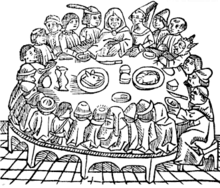 A woodcut from William Caxton's second edition of The Canterbury Tales printed in 1483 | |
| Author | Geoffrey Chaucer |
|---|---|
| Original title | Tales of Caunterbury |
| Country | England |
| Language | Middle English |
| Set in | Kingdom of England, 14th century |
Publication date | c. 1400 (unfinished at Chaucer's death) |
| 821.1 | |
| LC Class | PR1870 .A1 |
| Text | The Canterbury Tales at Wikisource |
The Canterbury Tales (Middle English: Tales of Caunterbury)[2] is a collection of twenty-four stories that runs to over 17,000 lines written in Middle English by Geoffrey Chaucer between 1387 and 1400.[3] It is widely regarded as Chaucer's magnum opus. The tales (mostly written in verse, although some are in prose) are presented as part of a story-telling contest by a group of pilgrims as they travel together from London to Canterbury to visit the shrine of Saint Thomas Becket at Canterbury Cathedral. The prize for this contest is a free meal at the Tabard Inn at Southwark on their return.
It has been suggested that the greatest contribution of The Canterbury Tales to English literature was the popularisation of the English vernacular in mainstream literature, as opposed to French, Italian or Latin. English had, however, been used as a literary language centuries before Chaucer's time, and several of Chaucer's contemporaries—John Gower, William Langland, the Pearl Poet, and Julian of Norwich—also wrote major literary works in English. It is unclear to what extent Chaucer was seminal in this evolution of literary preference.
The Canterbury Tales is generally thought to have been incomplete at the end of Chaucer's life. In the General Prologue, some 30 pilgrims are introduced. According to the Prologue, Chaucer's intention was to write four stories from the perspective of each pilgrim, two each on the way to and from their ultimate destination, St. Thomas Becket's shrine (making for a total of about 120 stories). Although perhaps incomplete, The Canterbury Tales is revered as one of the most important works in English literature.
https://en.wikipedia.org/wiki/The_Canterbury_Tales
Versions of cuir bouilli were used since ancient times, especially for shields, in many parts of the world.[7] Although in general leather does not survive long burial, and excavated archaeological evidence for it is rare, an Irish shield of cuir bouilli with wooden formers, deposited in a peat bog, has survived for some 2,500 years.[8] It was commonly used in the Western world for helmets; the pickelhaube, the standard German helmet, was not replaced by a steel stahlhelm until 1916, in the midst of World War I.[9] As leather does not conduct heat the way metal does, firemen continued to use boiled leather helmets until World War II, and the invention of strong plastics.[10]
The word cuirass for a breastplate indicates that these were originally made of leather.[11] In the Late Middle Ages, the heyday of plate armour, cuir bouilli continued to be used even by the rich for horse armour and often for tournament armour,[12] as well as by ordinary infantry soldiers. Tournaments were increasingly regulated in order to reduce the risk to life, and in 1278 Edward I of England organized one in Windsor Great Park at which cuir bouilli armour was worn, and the king provided swords made of whale bone and parchment.[13]
https://en.wikipedia.org/wiki/Boiled_leather
A bog or bogland is a wetland that accumulates peat as a deposit of dead plant materials – often mosses, typically sphagnum moss.[2] It is one of the four main types of wetlands. Other names for bogs include mire, mosses, quagmire, and muskeg; alkaline mires are called fens.[clarification needed] A baygall is another type of bog found in the forest of the Gulf Coast states in the United States.[3][4] They are often covered in heath or heather shrubs rooted in the sphagnum moss and peat. The gradual accumulation of decayed plant material in a bog functions as a carbon sink.[5][6]
Bogs occur where the water at the ground surface is acidic and low in nutrients. A bog usually is found at a freshwater soft spongy ground that is made up of decayed plant matter which is known as peat. Generally found in cooler northern climates and are formed in poorly draining lake basins.[7]In contrast to fens, they derive most of their water from precipitation rather than mineral-rich ground or surface water.[8] Water flowing out of bogs has a characteristic brown colour, which comes from dissolved peat tannins. In general, the low fertility and cool climate result in relatively slow plant growth, but decay is even slower due to low oxygen levels in saturated bog soils. Hence, peat accumulates. Large areas of the landscape can be covered many meters deep in peat.[2][9]
Bogs have distinctive assemblages of animal, fungal, and plant species, and are of high importance for biodiversity, particularly in landscapes that are otherwise settled and farmed.
https://en.wikipedia.org/wiki/Bog

Examples of other uses
As well as the crests on helmets described above, cuir bouilli was probably used sculpturally in various contexts, over a wood or plaster framework where necessary. When Henry V of England died in France, his effigy in cuir bouilli was placed on top of his coffin for the journey back to England.[23]
A near life-size crucifix in the Vatican Museums is in cuir bouilli over wood. This is of special interest to art historians because it was made in 1540 as a replica of a crucifix in silver presented by Charlemagne some 740 years before; an object of great interest as possibly the first of the long line of monumental crucifixes in Western art. In 1540 the original silver was melted down for church plate to replace that looted in the Sack of Rome in 1527. It seems likely that the leather was moulded directly from the original and it is possible that the wooden core underneath is actually the Carolingian original, with the leather replacing the sheets of silver originally fitted over the wood.[24]
Cuir bouilli has also been employed to bind books, mainly between the 9th and 14th centuries.[25] Other uses include high boots for especially tough use, which were called "postillion's boots" in England.[26] Another use was for large bottles or jugs called "blackjacks", "bombards", or "costerns". There is an English reference to these from 1373.[27]
https://en.wikipedia.org/wiki/Boiled_leather
https://en.wikipedia.org/wiki/Vatican_Museums
https://en.wikipedia.org/wiki/Canterbury_Cathedral
- Williams, Alan R, The Knight and the Blast Furnace: A History of the Metallurgy of Armour in the Middle Ages & the Early Modern Period, 2003, BRILL, ISBN 9004124985, 9789004124981, google books
- Wright, Thomas, The Archaeological Album; Or Museum of National Antiquities, 1845, Chapman & Hall, google books
https://en.wikipedia.org/wiki/Boiled_leather
This article needs additional citations for verification. (August 2011) |
Mirror armour (Russian: зерцало, zertsalo, meaning "mirror"; Chinese: 护心镜, hùxīnjìng, meaning "protect-heart mirror"), sometimes referred to as disc armour or as chahār-āyneh or char-aina (Persian: چهاﺮآﻳنه meaning "four mirrors"; whence Kazakh: шар-айна, şar-ayna), was a type of cuirass used mainly in Asia, the Middle East, and Eastern Europe; including India, Persia, Tibet, Russia, and the Ottoman Empire. It literally translates to "four mirrors" which is a reflection of how these pieces looked, which resembles four (sometimes more) metal discs or rectangular armour plates. Mirror armor was used in some cultures up to the 20th century.
Description and history
"Mirror armour" is a type of partial plate armour which was developed initially from round metal mirrors (a kind of rondel) worn over other armour (usually over mail) as reinforcement. Metal mirrors in this armour were considered as protection from not only cold steel and arrows, but also supernatural influence. It was believed that mirrors could reflect the evil eye, so they were polished and worn over other armour.
Early mirror armour consisted of a round mirror attached to the body with a few leather laces (similar to the Roman phaelerae). In Europe, they were known as kardiophylax (Greek) or apezak (Armenian) and were popular with various Bronze Age civilizations, as well as the Central Asian tribes such as the Saka and Yuezhi, and also among the Sasanians. The Kardiophylax was used by the Samnites before they developed the triple-disc cuirass. Although, it continued to be used as a Status symbol after it was discontinued from popular use. This armor would go on to be used by Salian priests as a form of ritual dress.
Late mirror armour took the form of a mirror cuirass, helmet, greaves, and bracers worn with mail. There were two alternative constructions of mirror cuirass:
- with discs – two large round mirrors surrounded by smaller mirror plates, such as the Klivanion.
- without discs – typically having four mirror plates – frontplate, backplate, and two sideplates joined by hinges or laces.
Early types of this armour were known among the Celtiberians,[1] by the Romans, in the Middle East, Central Asia, India, Russia, Siberia (where it was worn by Siberian natives before the Russian conquest), Mongolia, Indochina and China (including Tibet too).
Later types of this armour were known in the Middle East, Central Asia, India, and Russia. The mirror cuirass with discs was popular in Turkey and Russia, while that without discs was popular in Persia, Central Asia and India.
In India, there was a popular form of brigandine with a few mirror plates riveted to it.
According to Bobrov,[2] round metal mirrors worn by Mongolian warriors as armour reinforcement are shown in Persian miniatures of 13c. This is verified by archaeological finds in Central Asia and the Far East. This kind of armour prevailed in Central Asia during 15–17c, and could be worn over any armour including brigandines, lamellar armour, chainmail and even plated mail. In 16c in Persia, mirror plates became much larger and changed their shape to rectangular in order to improve body protection. This improved mirror armour gradually spread during 16–17c to Central Asia and North India. Further improvements were made during the 1640s when mirror plates evolved into mirror cuirass, which sometimes had additional mirror plates used as pauldrons for protection of the shoulder laces. Besides separate mirror plates laced as reinforcement to other armours there were small mirrors that were sewn or riveted to brigandine. Brigandines with such integral reinforcements were very popular at the end of the 15th century, but their use had practically been abandoned by the end of the 17th century.
Many modern army ballistic vests resemble the "Chahar-Aine" layout with basic soft anti-fragmentation armour (analogue of chain mail) covering a large area, and two, four or even more bulletproof plates ("mirrors") worn above it, thus combining weight saving and freedom of movement with high level of protection of vital areas.
Ottoman 15th to 16th century mirror armour is commonly referred to as "Krug", while the name for the same type of armour in Russia is зерцало (zertsalo), and the modern technical term is зерцальный доспех (zertsal'niy dospekh), from the Russian зерцальный (zertsal'niy) – "mirror"; and Russian: доспех (dospekh) – "armour".
Zertsalo consisted of a number plates that formed the two halves: front and rear. Each sides consists of: a middle plate called the "krug" (rondel), side plates, upper plates (above the "krug") called "ozherelie" (gorget) and "obruch" (ring) enveloping the neck; the front side additionally had "naramki" – shoulder strappings, and the back side had – "naplechniki" (pauldrons)
Зерцало состояло из ряда досок, образовавших две половины — переднюю и заднюю. Каждую половину составляли: средняя доска, или круг, боковые дощечки, верхние (над кругом), или ожерелье, и обруч — часть, обхватывающая шею; у передней половины были еще нарамки — плечевые скрепления, а у задней — наплечки
Gallery
Mirror armours:
Brigandines reinforced by mirror plates:
Chinese dingjia brigandine reinforced by classic round mirror.
Indian brigandine reinforced by mirror plates.
Compare analogues which are not mirror armours, but have the same construction:
Roman phalerae
Byzantine klivanium (Κλιβάνιον)
Japanese yukinoshita dō armour
See also
References
External links
- The Silk Road Designs Armoury (same site at the internet archive)
- Russian medieval arms and armour
- Simple Mirror Armour (Tibetan)
- Transitional (from round to rectangular) Mirror Armour (Persian)
- Indian Brigandine with Mirror Plates
https://en.wikipedia.org/wiki/Mirror_armour
Splint armour (also splinted armour, splint armor, or splinted armor) is armour consisting of strips of metal ("splints") attached to a cloth or leather backing. It is most commonly found as limb armour such as greaves or vambraces.
Description
Limb armour consisting of strips of metal ("splints") are attached to a fabric (cloth or leather) backing ("foundation"). The splints are narrow metal strips arranged longitudinally, pierced for riveting or sewing to the foundation. Splint armour is most commonly found as greaves or vambraces.
It first appears in a Scythian grave from the 4th century BC[1] then in the Swedish Migration Era;[2] and again in the 14th century as part of transitional armour, where it was also used to form cuisses and rerebraces.
Splint mail/splinted mail
While a few complete suits of armour have been found made from splints of wood, leather, or bone, the Victorian neologism "splinted mail" usually refers to the limb protections of crusader knights. Depictions typically show it on the limbs of a person wearing mail, scale armour, a coat of plates or other plate harness.
Knights in effigy are depicted with leg protection of a matrix of disks with a diameter equal to the splints. This style appears to depict sabatons and splints on greaves, or may represent padded armour underneath splints, or the rivets on brigandine.
See also
References
- Oakeshott: The Archaeology of Weapons, 124
Bibliography
- Oakeshott, R. Ewart (1996) [1960]. The Archaeology of Weapons (Dover reprint ed.). Dover Publications. ISBN 0-486-29288-6.
https://en.wikipedia.org/wiki/Splint_armour
This article needs additional citations for verification. (August 2014) |
A gambeson (also aketon, padded jack, pourpoint, or arming doublet) is a padded defensive jacket, worn as armour separately, or combined with mail or plate armour. Gambesons were produced with a sewing technique called quilting. They were usually constructed of linen or wool; the stuffing varied, and could be for example scrap cloth or horse hair. During the 14th century, illustrations usually show buttons or laces up the front.
An arming doublet (also called aketon) worn under armour, particularly plate armour of fifteenth- and sixteenth-century Europe, contains arming points for attaching plates. Fifteenth century examples may include mail goussets sewn into the elbows and armpits to protect the wearer in locations not covered by plate. German gothic armour arming doublets were generally shorter than Italian white armour doublets, which could extend to the upper thigh. In late fifteenth century Italy this also became a civilian fashion. Men who were not knights wore arming doublets, probably because the garment suggested status and chivalry.[1]
Etymology
The term gambeson is a loan from the Old French gambeson, gambaison, originally wambais, formed after the Middle High German term wambeis, 'doublet', in turn from Old High German wamba, 'stomach' (cognate to womb).[2]
The term aketon, originally the medieval French alcottonem, might be a loan from Arabic al-qutn, meaning 'cotton' (definite article – "the cotton").
In medieval Norse, the garment was known as vápntreyja, literally 'weapon shirt', or panzari/panzer.[3] Treyja is a loan from (Middle) Low German.[4] Panzari/panzer is probably also a loan from Middle Low German, though the word has its likely origin in Italian, and is related to Latin pantex, meaning 'abdomen',[5] cognate with English paunch.[6]
History
Quilted leather open jackets and trousers were worn by Scythian horsemen before the 4th century BC, as can be seen on Scythian gold ornaments crafted by Greek goldsmiths. As stand-alone cloth armour, the European gambeson can be traced at least to the late tenth century, but it is likely to have been in use in various forms for longer than that. In Europe, its use became widespread in the thirteenth century, and peaked in the fourteenth and fifteenth centuries.
The gambeson was used both as a complete armour unto itself and underneath mail and plate in order to cushion the body and prevent chafing. Evidence for its use under armour does not appear until the mid twelfth century. It was very insulating and thus uncomfortable, but its protection was vital for the soldier.
Although they are thought to have been used in Europe much earlier, gambesons underwent a revolution from their first proven use in the late eleventh and early twelfth centuries as an independent item of armour to one that facilitated the wearing of mail, but it remained popular amongst infantry as cloth armour. Although quilted armour survived into the English Civil War in England as a poor man's cuirass, and as an item to be worn beneath the few remaining suits of full plate, it was increasingly replaced by the 'buff coat' – a leather jacket of rough suede.
There are two distinctive designs of gambeson: those designed to be worn beneath another armour, and those designed to be worn as independent armour. The latter tend to be thicker and higher in the collar, and faced with other materials, such as leather, or heavy canvas. This variant is usually referred to as padded jack and made of several (some say around 18,[7] some even 30[8]) layers of cotton, linen or wool. These jacks were known to stop even heavy arrows[8] and their design of multiple layers bears a striking resemblance to modern day body armour, which substituted at first silk, ballistic nylon and later Kevlar as fabric.
For common soldiers who could not afford mail or plate armour, the gambeson, combined with a helmet as the only additional protection, remained a common sight on European battlefields during the entire Middle Ages, and its decline – paralleling that of plate armour – came only with the Renaissance, as the use of firearms became more widespread, until by the eighteenth century it was no longer in military use.
While the use of linen has been shown in archaeological evidence, the use of cotton – and cotton-based canvas – is disputed since large amounts of cotton cloth were not widely available in northern Europe at this time. It is quite probable that Egypt (and Asia-Minor generally) still produced cotton well after the 7th and 8th centuries and knowledge (and samples) of this cloth was brought to Europe by the returning Crusaders; however, the logistics and expense of equipping a town militia or army with large numbers of cotton-based garments make its adoption doubtful when flax-based textiles (linen) were in widespread use.
Linothorax was a type of armour similar to gambeson used by ancient Greeks. Meanwhile, the Mesoamericans were known to make use of quilted textile armor called Ichcahuipilli before the arrival of the Spaniards. Another example is the bullet resistant Myeonje baegab that was created during Korea's Joseon Dynasty in an attempt to confront the effects of Western rifles.
See also
- Doublet (a.k.a. pourpoint)
- Buff coat
- Jack of plate
References
- Embleton, Gerry; Howe, John (1994). Söldnerleben im Mittelalter. Motorbuchverlag. p. 47.
External links
- "The Function of Armor in Medieval and Renaissance Europe". The Metropolitan Museum of Art.
- How a man shall be armed for his ease when he shall fight on foot a translation of the mid-fifteenth century treatise on armour, translated into modern English and accompanied by pictorial references.
- "A Roman Armor that has been Missed? Did Roman Soldiers Wear Quilted Armor?".
https://en.wikipedia.org/wiki/Gambeson
The linothorax (pronounced /ˈliːnoʊθɔːræks/; from the Ancient Greek: λινοθώραξ Ancient Greek: [linotʰɔ̌ːraːks]) is a type of upper body armor that was used throughout the ancient Mediterranean world. The term linothorax is a modern term based on the Greek λινοθώραξ, which means "wearing a breastplate of linen";[1] A number of ancient Greek and Latin texts from the 6th century BCE to the third century CE mention θώρακες λίνεοι (thorakes lineoi) (Greek) or loricae linteae (Latin) which means 'linen body armour.' These are usually equated with some of the armours showed in sculptures and paintings from Italy and Greece from 575 BCE onwards. Very little is known about how ancient linen armour was made. Linen armour in other cultures was usually quilted and stuffed with loose fibre or stitched together many layers thick, but it could also have been made with a special weave called twining which creates a thick, tough fabric.[2] The theory that it was made of layers of linen glued together comes from a mistranslation of a summary of a description of medieval armour in 1869.[3]
By the late 6th century BCE, many paintings and sculptures show hoplites and other warriors in the Aegean wearing the linothorax instead of a bronze cuirass. This could have been due to the lower price, lesser weight, or cooler material. Artists continue to show it in the Hellenistic period after the death of Alexander the Great. The Roman emperor Caracalla equipped a "Macedonian phalanx" with linen armour around 200 CE (Cassius Dio 78.7).
History
Some scholars believe that Homer refers to a linothorax when he describes Ajax the Lesser as "linen-breasted" (Iliad 2.529 and 2.830). Other scholars believe that this refers to a linen tunic or smooth glossy skin.
The first clear reference to linen armour in any ancient language is a line by the poet Alcaeus, who lived around 650–550 BCE.[4] From the fifth century BCE to the first century CE, Greek and Roman writers mention soldiers from many nations wearing linen armour, but they rarely describe it in detail. These writers include Herodotus (2.182, 3.47, 7.63), Livy (4.19.2–20.7), Strabo (Geography, 3.3.6, 13.1.10), Suetonius (Galba 19.1), and Pausanias. The philosopher Plutarch says that Alexander the Great wore a "double linen breastplate" at the battle of Gaugamela (Plutarch, Life of Alexander 32.8-12). References to linen armour become much rarer in the Roman imperial period. It seems likely that as the Roman army developed cheap forms of iron armour such as the lorica hamata, there was less demand for linen armour.
Beginning around 575 BCE, artists in the Aegean often show a distinctive style of armour with a smooth piece wrapped around the chest, two flaps over the shoulders, and a skirt of flaps covering the hips and belly.[6] By the 4th century BCE armour with a similar shape appears in wall paintings in Italy, sealstones in Persia, gold combs in Crimea, and stone carvings in Gaul. Because only a few examples of armour shaped like this survive, researchers such as Peter Connolly identify the lost armour with the linen armour in texts. Linen would decay and so leave little archaeological evidence. On the Alexander Sarcophagus and Alexander Mosaic, Alexander the Great and his soldiers wear this type of armour. Artists of the Roman imperial period rarely show this type of armour. The extant armour with this shape are made of iron plate, iron scales, or iron mail, and so the armour which decayed was likely made of more than one material.
Researchers at the University of Wisconsin-Green Bay built and tested some glued linen armour. Their copy was resistant to broad-head arrows and slashing damage of weapons with sharp edges. The bend of the fabric would allow the energy of the arrows to dissipate through the material and protect the user from lacerations, and arrows that struck at an angle would often deflect to penetrate a space between different layers of linen, rather than penetrating the linen itself. Blunt force trauma would still transfer through the armor, however, and possibly damage the internal organs of the soldier.
Depictions
Since this armour is only known through texts, paintings, and sculptures, rather than archaeological finds, modern scholars can only guess at its makeup and design. Artistic depictions show armor that has a top piece which covers the shoulders and is tied down on the chest, a main body piece wrapping around the wearer and covering the chest from the waist up, and a row of pteruges or flaps around the bottom which cover the belly and hips. Vase paintings from Athens often show scales covering part of the armour. A team of researchers at the University of Wisconsin–Green Bay lead by Professor Emeritus Gregory S. Aldrete have catalogued art from Italy and the Aegean which shows this armour.[7] Five extant pieces of armour shaped like the armour in Athenian vase paintings survive from sites in south-eastern Europe from the 4th century BCE to the 1st century CE.[8] Two are of iron plate, one is of iron scales on a leather foundation, and two are of mail interwoven with scales. Some of the linen armour in ancient texts was probably shaped the same way, but how this ancient linen armour was made is unknown.
Research
Modern researchers have had difficulty studying ancient linen armor because linen is biodegradable and leaves few remains for archeologists to discover. In recent times, many cultures from India to Scotland to South America made linen armour by quilting many layers of fabric together or stuffing them with loose fibres such as cotton.[9] The type stuffed with loose fibres often looks bumpy and unlike the ancient art, but the type of many layers of cloth can be smooth. Textile archaeologist Hero Granger-Taylor proposes that ancient linen armour was woven using a special technique called twining.[2] Twined textiles were used in military contexts in Bronze Age Egypt, Roman Syria, and Maori New Zealand, so it is plausible that they were also used in Classical Greece and Italy before the Roman conquest.
In the 1970s, Peter Connolly built a linothorax by gluing layers of linen cloth together and cutting them to shape.[10] His reconstruction inspired many other reconstructions[11] including one by Professor Emeritus Gregory S. Aldrete and his student Scott Bartell. This project was present at the joint American Philological Association/Archaeological Institute of America Convention held in Philadelphia, Pennsylvania in January 2009, and published in a book from Johns Hopkins University Press in 2013.[12] The project received considerable media attention after Aldrete tested his construction by shooting an arrow at Bartell with cameras rolling.[13][14] But Peter Connolly's reconstruction was based on a misremembered, twice-translated summary of a Byzantine chronicle which did not mention glue, not on an ancient text, artifact, or depiction.[15] No culture before the 20th century is known to have made linen armor in this way.[16]
See also
References
External links
- University of Wisconsin-Green Bay: Linothorax Project at the Wayback Machine (archived 14 May 2020)
- Testing the Linothorax Video with Dr. Aldrete and Mr. Bartell on YouTube
- Recreating the Linothorax
- Linothorax reconstructed by the "Koryvantes Association", Greece at the Wayback Machine (archived 21 February 2012) (in Greek)
- A heavy type of Linothorax by the "Koryvantes Association" at the Wayback Machine (archived 21 February 2012) (in Greek)


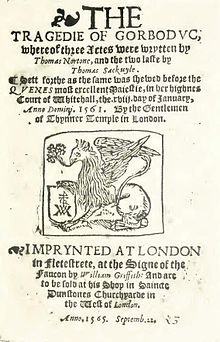





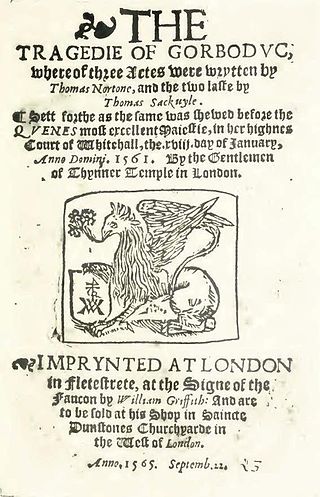







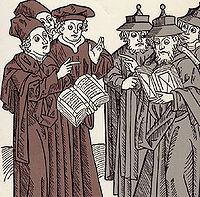
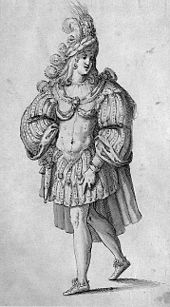

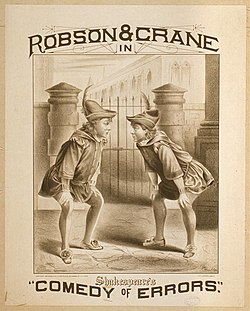
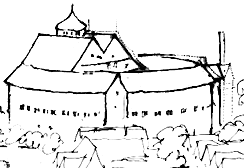

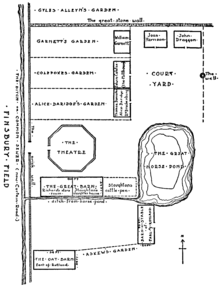





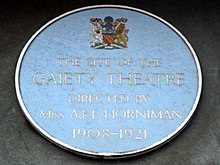
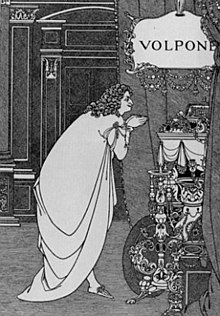




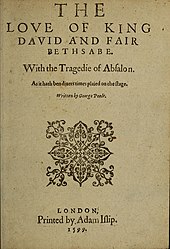

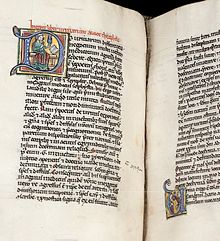
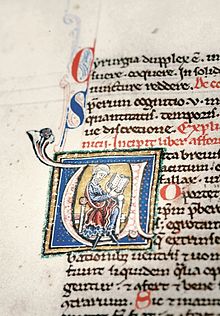

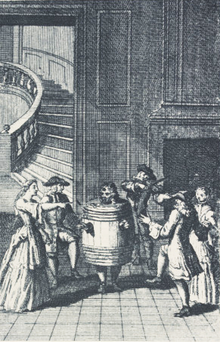

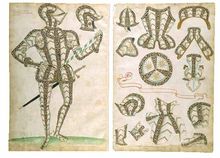

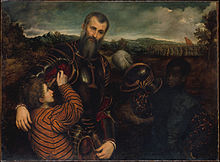

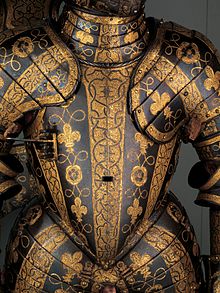
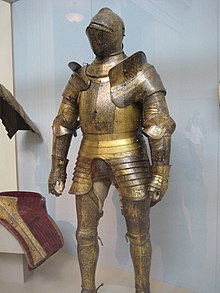


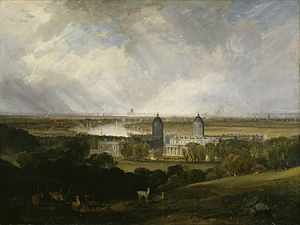



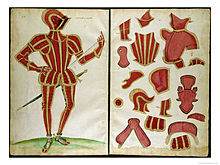






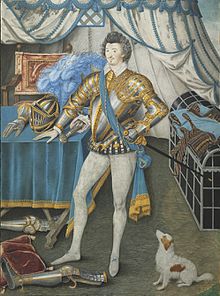

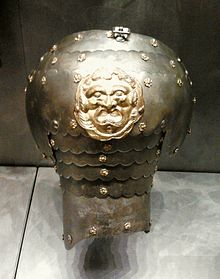

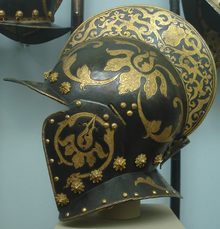



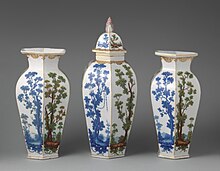
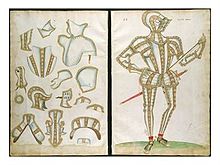




![Greenwich armour of Sir James Scudamore, 1590s. Jousting was crucial to Scudamore's reputation at court.[5]](https://upload.wikimedia.org/wikipedia/commons/thumb/0/0c/Scudamorehelmet.jpg/94px-Scudamorehelmet.jpg)

















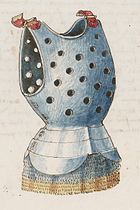

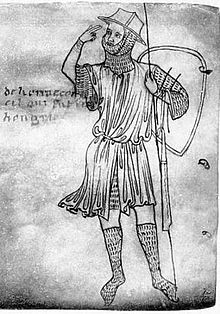












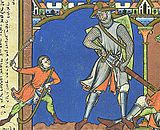
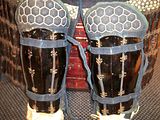





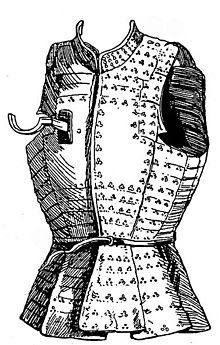
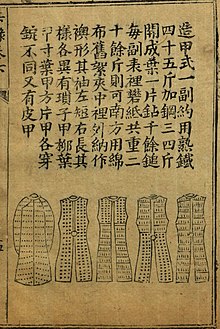
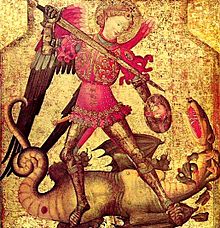
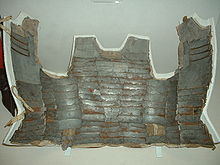
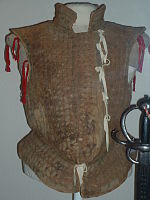

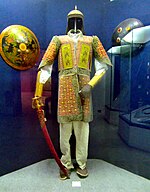
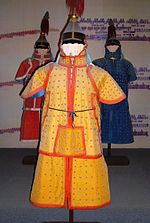









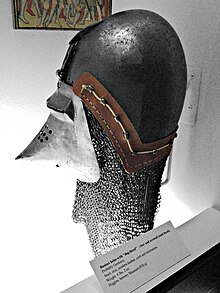

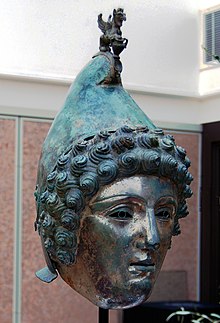





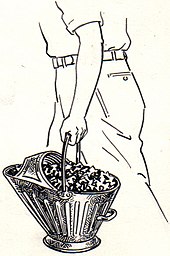


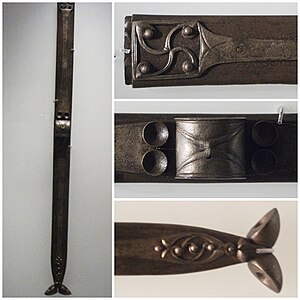

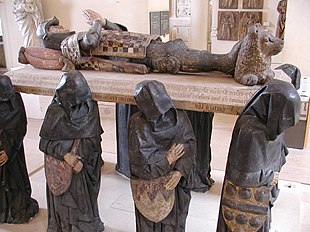






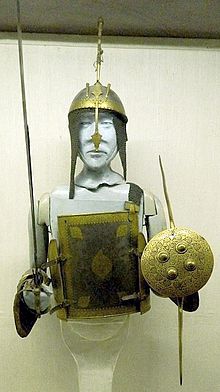







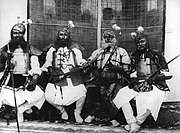



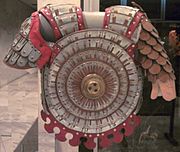


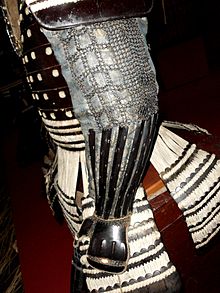

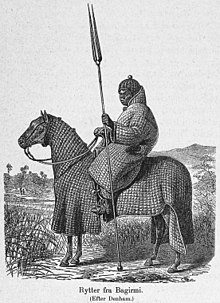

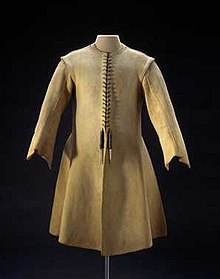
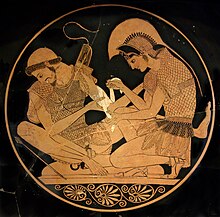


No comments:
Post a Comment